INNOVATION & COLLABORATION
PLUS SUTCLIFFE ENGINEERING: BUILDING BRIDGES & CREATING CONNECTIONS
STEEL MAINS PUBLISHES ITS FIRST EPD

Winter 2023 Vol. 36 | No. 2 ISSN 2208-7486 (online) ISSN 1447-5359 (print)
AustralianSuper’s focus on reconciliation
As Australia’s largest super fund with members from a diverse range of industries and cultures, we acknowledge our role in supporting an inclusive and diverse nation, where the cultural backgrounds of all peoples are recognised and respected.
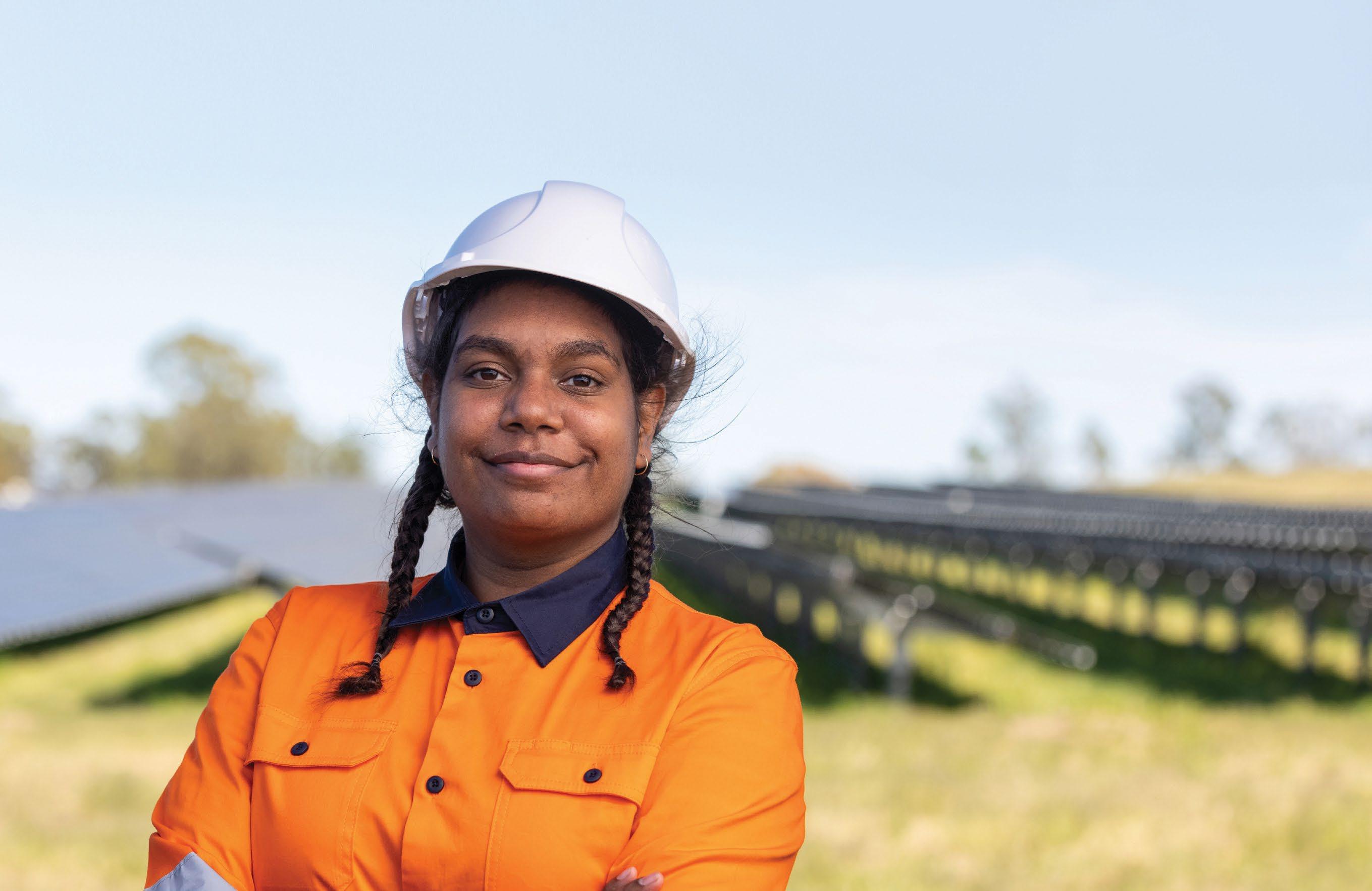
Our vision for reconciliation is a national superannuation system that meets the financial, emotional and social needs of Aboriginal and Torres Strait Islander peoples through, to and in retirement.

AustralianSuper launched its second Reconciliation Action Plan (RAP) in July 2021. The Innovate RAP is helping to close the super gap between Aboriginal and Torres Strait Islander and non-Indigenous Australians. It also supports building better relationships – with both fund members and the Aboriginal and Torres Strait Islander business community and service providers.

To support this, we’ve implemented the following support resources and programs:
Dedicated Aboriginal and Torres Strait Islander phone based support








A service provided by a dedicated team who have undergone cultural training.
The Schools Plus Financial Literacy program
Providing a literacy program to selected schools in remote NT. The program helps improve basic understanding of finance and technology.
AustralianSuper intern program
Sponsoring Aboriginal and Torres Strait Islander university students with a 10-week paid internship.

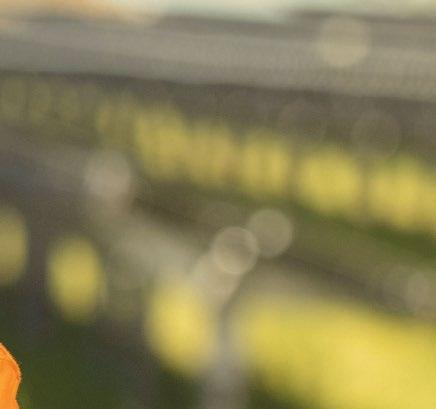

Helping achieve better outcomes
Campaigning government policies that improve super outcomes for Aboriginal and Torres Strait.




Take the first steps to sorting your super, with a fund that’s helping all Australians live well in retirement. Learn more about our Reconciliation Action Plan at australiansuper.com/superannuation/superannuation -articles/2022/05/reconciliation-action-plan
Read the PDS and TMD at australiansuper.com


Sponsored by AustralianSuper Pty Ltd ABN 94 006 457 987, AFSL 233788, Trustee of AustralianSuper ABN 65 714 394 898.
steel Australia

Vol. 36 No. 2 | Winter 2023
ASI HEAD OFFICE
Suite G1, Ground Floor
25 Ryde Road
Pymble, NSW 2073
T: (02) 8748 0180

E: enquiries@steel.org.au
W: https://www.steel.org.au
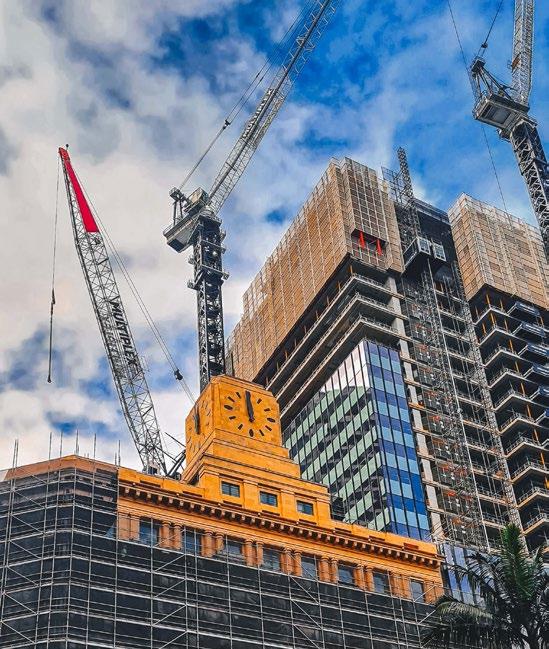
ASI STATE OFFICES
New South Wales and ACT

David Varcoe on 0419 136 720
Victoria, Tasmania and South Australia
Sulfianda Soeleiman on 0437 594 571
Western Australia
James England on 0423 614 860
Queensland and Northern Territory
John Gardner on 0418 788 870
ShedSafe
Neil Creek on 0407 107 415
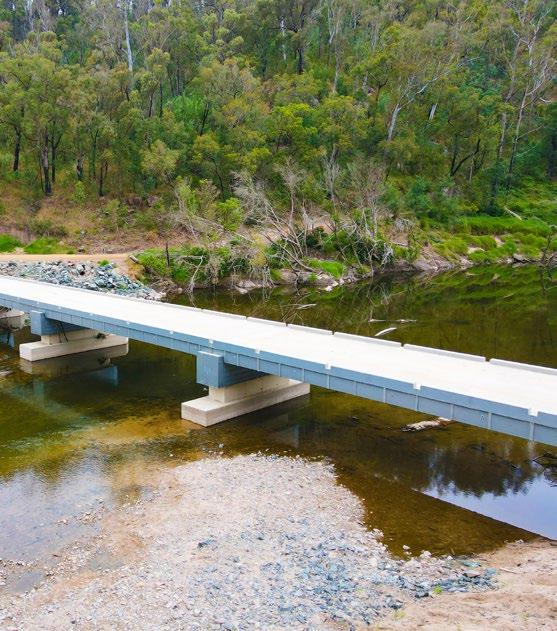
STEEL AUSTRALIA CONTACTS
Managing editor
Steve Andrew on 0473 480 964 or stevena@steel.org.au
Editor Sally Wood on sally@wordly.com.au
Advertising
NK Media, Nicole Prioste on 0410 618 331 or nicole@nkmedia.com.au
DISCLAIMER
While every effort has been made and all reasonable care taken to ensure the accuracy of the material contained herein, the Publisher does not assume any responsibility or liability for any loss or damage which may result from any inaccuracy or omission in this publication, or from the use of the information contained herein, and the Publisher makes no warranties, express or implied, with respect to any of the material contained herein.
COPYRIGHT
Reproduction of the material is permitted only with the express permission of the Publisher and due acknowledgment of steel Australia.
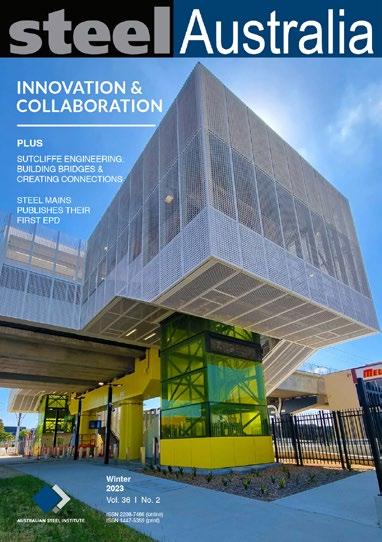
ABOUT THE ASI
steel Australia is published by the Australian Steel Institute (ASI)—the peak national body of the steel industry. The ASI works to increase the awareness of the benefits of steel and promote Australian made steel as the material of choice. Increasing the competitiveness of the Australian steel industry and its member companies is central to that vision. The organisation conducts engineering seminars and disseminates relevant, timely and detailed information. Expert technical advice, a library and a resource centre are available to all members, along with a range of other member benefits. For information, visit: steel.org.au
| STEEL AUSTRALIA | WINTER 2023 3 CONTENTS INDUSTRY INSIGHTS Message from the chair 5 Message from the chief executive 6 Are all "galvanized" coatings on steel pipe and tube the same? 8 33 years strong: John inspires next generation of steel professionals 10 Understanding market volatility and super performance 11 Home renovators turn to steel 12 Combilift launches largest counterbalance electric truck 13 Steel Sustainability Australia update 14 On the beam 15 CR Kennedy: pioneering digital transformation in Australia 16 Mentis Australia: innovation and excellence stamped into every steel solution 20 Sutcliffe Engineering: building bridges and creating connections 24 RUD Australia: tradition in dynamic innovation 28 FEATURE: INNOVATION & COLLABORATION 33 The customer centric journey of No 1 Roofing 34 Belmore Engineering innovates for success 38 InQuik: bridging the gap through partnership power 42 An update from the Steel Research Hub 46 Steel Mains publishes its first EPD 48 INSIDE THE ASI New ASI members 50 ASI library and bookshop update 51 Upcoming ASI events 51 20 16 24 Cover image: Sutcliffe Engineering: building bridges and creating connections. Story on page 24. CONTENTS
38 44
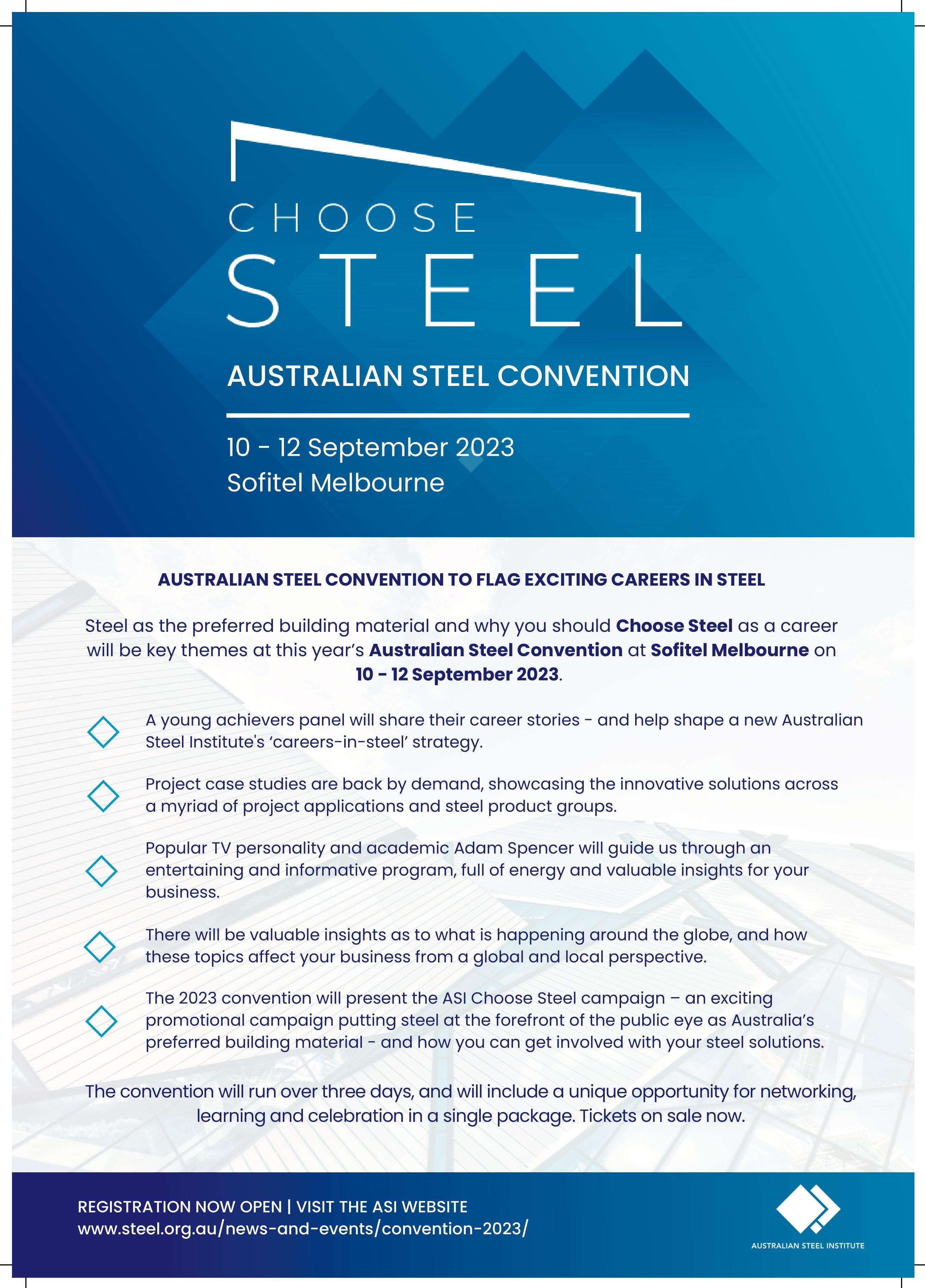
MESSAGE FROM THE ASI CHAIR

Innovation and collaboration
Welcome to the Winter edition of steel Australia. The feature of this edition is Innovation and Collaboration two concepts that are vital to the Australian steel supply chain.
Innovation is an essential ingredient when it comes to increasing efficiency, reducing waste, and improving product quality. It can drive advances in materials, manufacturing processes, and logistics, enabling the industry to compete globally and respond to market shifts. New technologies can also aid in reducing the environmental impact of steel production, a crucial aspect given increasing regulations and consumer demand for sustainability.
Collaboration plays a significant role in disseminating these innovations throughout the supply chain. By fostering partnerships between suppliers, manufacturers, research institutions, and government agencies, the industry can pool resources, share knowledge, and accelerate the implementation of innovative practices. Furthermore, collaboration can help manage risks and uncertainties inherent in any supply chain, strengthening its resilience.
Together, innovation and collaboration can ensure the Australian steel industry remains competitive, sustainable, and resilient in an evolving global market.
Recent ASI initiatives
The Australian Steel Institute (ASI) understands how important it is to attract and retain good people, particularly in a labour market that is the tightest that many of us can recall. The number of occupations suffering from the skills shortage has almost doubled since 2021, with some roles having thousands of unfilled vacancies.
To help combat this skills shortage, we recently launched the ASI Career Centre—a one-stop shop for advertising, finding and preparing candidates for a position in the steel supply chain.
ASI has also created a range of resources designed to help businesses and individuals match the right people to the right job in the steel industry. Our resources can help individuals make informed career decisions and increase their marketability, while enabling companies to develop their workforce, optimise recruitment strategies, and boost productivity. Our resources include a steel industry induction course, information on topics like business visas and careers in fabrication, and a university support pack.
The ASI is also enjoying a strong response to its campaign promoting the benefits of durable and stylish Australian steel in home renovations. The roll former-funded Choose Steel campaign employs a website (choosesteel.com.au) to promote steel as the preferred building material for home renovations.
The website features a collection of compelling case studies, practical dos and don'ts for home renovation, and a comprehensive list of steel suppliers specialising in home renovations. Over two thousand users visited the website in the first two weeks.
The ad component of the campaign employs digital billboards at key Melbourne transport locations including
motorways and social media posts on Instagram and Facebook pointing home renovators to the Choose Steel website and its list of steel suppliers.
Success could see the ASI roll out the campaign to other states – and a range of other steel products targeted using the same Choose Steel formula. Choose Steel will also be theme for the Australian Steel Convention in Melbourne from September 10 to 12.
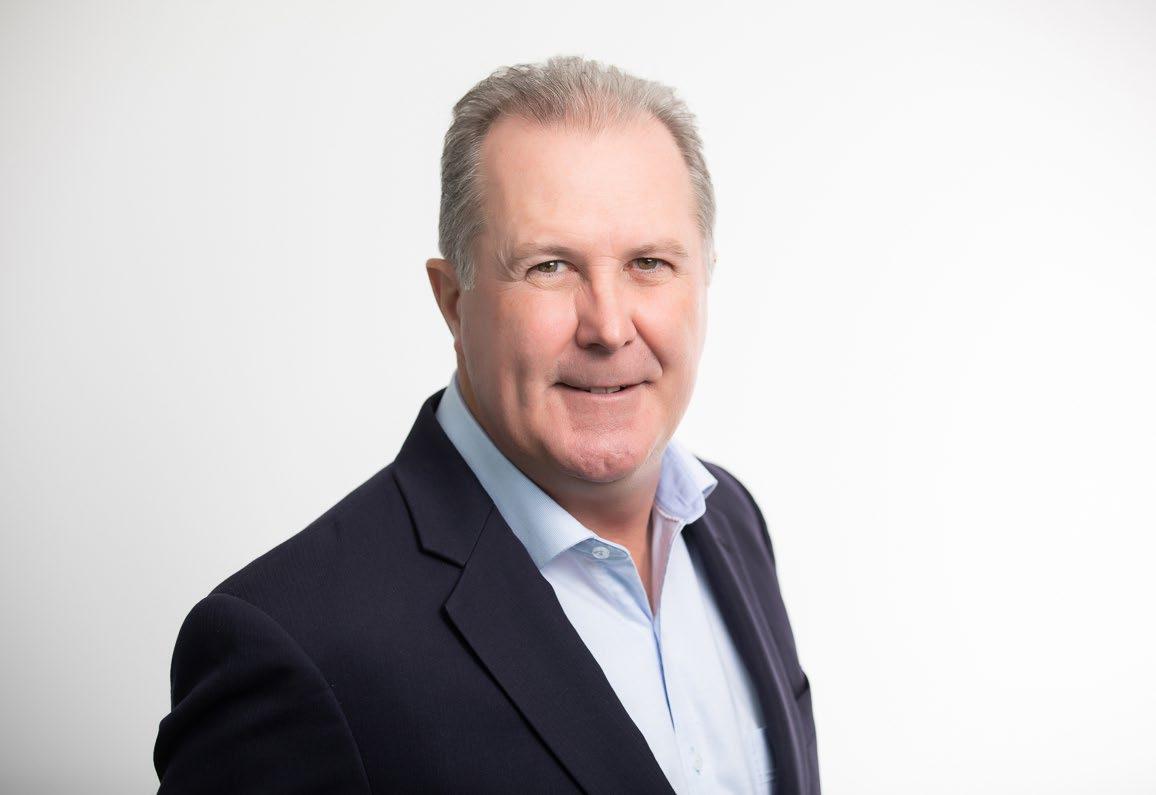
Finally, Steel Sustainability Australia (SSA)—ASI's new certification program that provides a clear pathway for steel businesses to operate more responsibly and transparently while being part of an environmentally and socially sustainable future—has been working with several steel distributors, manufacturers, roll formers and fabricators on certification.
As a result, ACT Steelworks has become the first company to achieve SSA certification. In addition, Liberty Primary Steel, InfraBuild and BlueScope have become the first manufacturing mills to become ‘verified suppliers’ under the SSA program.
| STEEL AUSTRALIA | WINTER 2023 5
INDUSTRY INSIGHTS
Tony Schreiber Chair, Australian Steel Institute
MESSAGE FROM THE ASI CHIEF EXECUTIVE
ADVOCACY WORK
The domestic steel industry is vital to Australia’s economy. Steel is a key ingredient in infrastructure and construction, manufacturing, mining and agriculture. Not only does it form the backbone of the Australian economy, it plays a vital role in nation-building.
The Australian Steel Institute (ASI) is the steel industry’s voice, championing its many attributes and assisting in driving the prosperity of the industry. As the peak body for the businesses engaged in steel manufacture, fabrication, distribution and erection, the ASI advocates for better and fairer conditions across the steel sector and for the benefit of all. Over recent months, the ASI has continued to work with all levels of government to address these issue.
Inquiry into developing advanced manufacturing in Australia
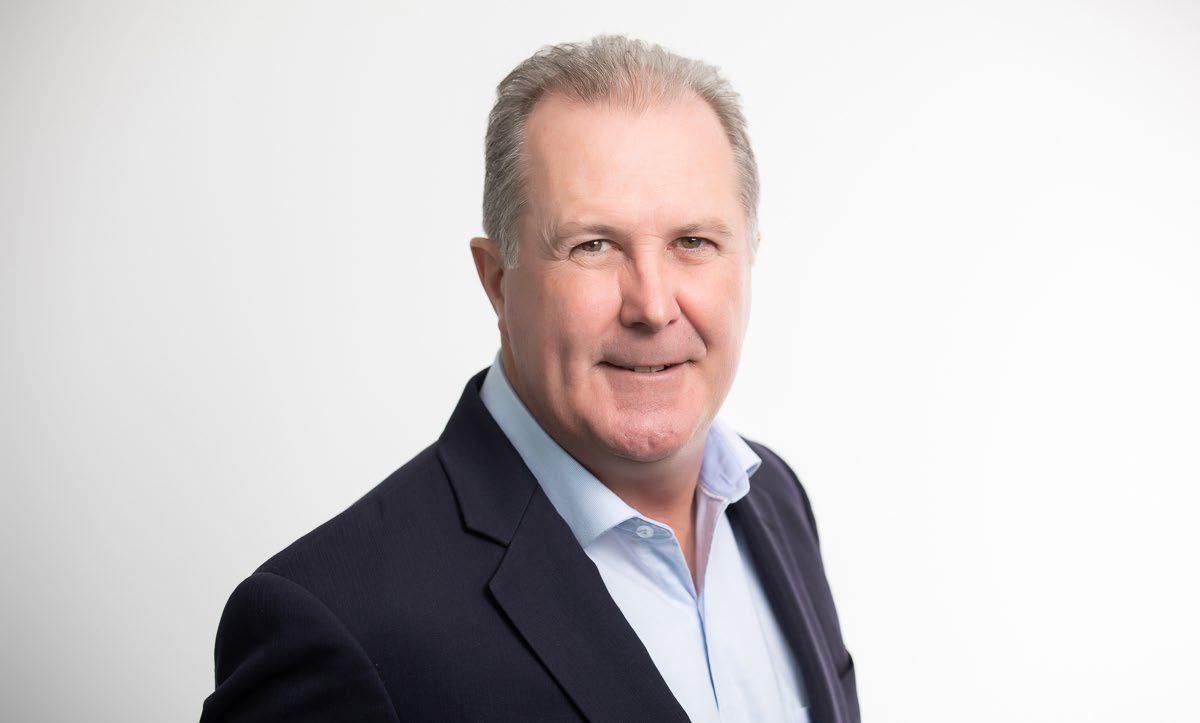
In early July, ASI presented its submission to the federal government's House Standing Committee on Industry, Science and Resources Inquiry into Developing Advanced Manufacturing in Australia. The submission made several key recommendations:
• Firm local participation targets for supply of renewable energy infrastructure be established by all states and territories, such that it drives capital investment in optimally scaled state-of-the-art manufacturing capability.
• The Steel Research Hub model of collaborative co-funded academic research and development continue to be supported by the federal government, and ideally expanded to a broader range of steel industry subsectors.
• Federal government energy policy needs to act to continue to drive a reduction in the cost of energy in order to encourage all forms of manufacturing, which includes advanced manufacturing.
• Raise the profile of university-based industrial research translation groups such as the Facility for Intelligent Fabrication.
• Maintain support for collaboration funding schemes that encourage universities and SMEs to partner
on commercial implementation of innovative manufacturing technologies.
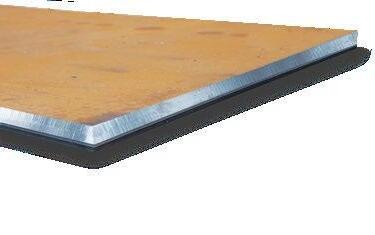
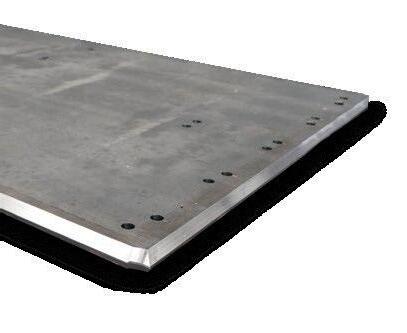
As a result, I was interviewed on ABC Radio's AM show on the need for government local content targets to encourage investment in renewables and advanced manufacturing. To listen to the interview, scan the QR code below.
Anti-dumping commission
ASI attended a meeting with the antidumping commissioner, Brad Armstrong, and his executive team. ASI provided a briefing on the steel industry covering: global steel market and benchmark steel price indices, the Australian market position, an overview of domestic producer product capability, and an overview of ASI corporate membership.
ASI also raised members concerns regarding: evidence that is acceptable and usable by the commission, and import data and determination of country of origin.
Department of industry, science and resources
ASI recently met with staff from the federal government's Department of Industry, Science and Resources. Agenda items included the outlook for the steel industry; an update on decarbonisation and net zero, including the Safeguard Mechanism and the steel industry, and opportunities and challenges for low emissions steel; energy markets; and feedback from industry on the government's programs and policies.
Mandatory code of conduct for the east coast gas market
ASI recently reviewed the consultation paper issued by the federal government's Department of Climate Change, Energy, Environment and Water on a Mandatory code of conduct for the east coast gas market and provided written feedback on the Australian Chamber of Commerce and Industry submission.
Mark Cain Chief Executive Australian Steel Institute
CLICK HERE FOR MORE INFORMATION & TO REGISTER FOR THE 2023 AUSTRALIAN STEEL CONVENTION >>> CLICK HERE TO LISTEN TO MARK CAIN'S ABC RADIO INTERVIEW ON RENEWABLES AND ADVANCED MANUFACTURING >>>
State government advocacy
ASI's advocacy work at the state government level has also been extensive.
In New South Wales, ASI provided a written submission on a proposed ratchet mechanism design to the Office of Energy and Climate Change.

ASI facilitated a meeting of fabricators with Transport for New South Wales to discuss the changes being proposed to their tendering prequalification requirements. Fabricator attendees included Alfabs, Civmec, Haywards, HF Hand and S&L Steel.
ASI also met with Accenture who are working on a consulting project for the New South Wales Government on the benefits of local procurement for the renewable energy sector. ASI outlined investment opportunities, jobs, quality and de-risking
In Queensland, ASI liaised with the Brisbane City Council regarding the proposed use of imported fabricated structural steelwork for the Dockside and Moqbray Park Ferry Terminals, calling for both SCA and SSA certification as pre-qualification requirements.
As a result of the VIC Spark North-East Link Steel Forum meeting held in March, the following successful outcomes have resulted: InfraBuild announced that
they will be supplying approximately 50,000 tonnes of steel to Spark consortium for the North East Link project; the design specifications of noise walls will be updated during the next revision cycle by the relevant design team to specify BlueScope’s REDCOR® steel rather than imported steel.
2023 AUSTRALIAN STEEL CONVENTION

Steel as the preferred building material and why you should Choose Steel as a career will be key themes at this year’s Australian Steel Convention at Sofitel Melbourne from 10 to 12 September.
There will be valuable insights as to what is happening around the globe, and how these topics affect your business from a global and local perspective.
Keynote speakers include Justin Jones, an adventurer and documentary maker who will delve into 'adventure thinking' and lessons learnt from the edge; Dr Alan Dupont who is the chief executive officer at Cognoscenti, and Tony Morriss, senior director of thematic macro research at AustralianSuper.
Project case studies are back by demand, showcasing the innovative solutions across a myriad of project
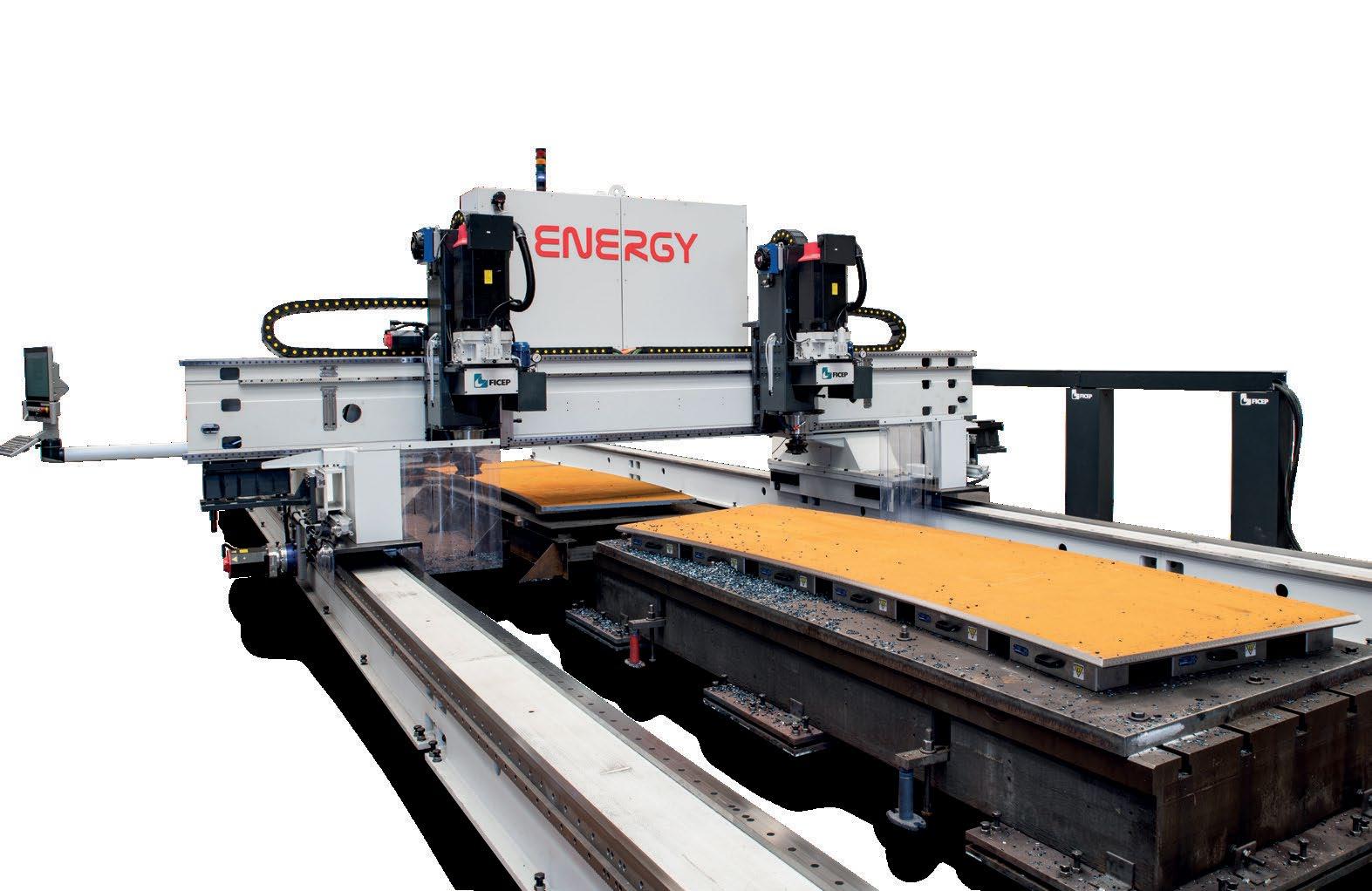
applications and steel product groups. These will include Allianz Stadium, the 308 Exhibition Street Skybridge, and a look at innovative cold formed steel structures.
The convention will present the ASI Choose Steel campaign – an exciting promotional campaign putting steel at the forefront of the public eye as Australia’s preferred building material, and how you can get involved with your steel solutions.
A young achievers panel will share their career stories, and help shape a new ASI ‘careers-in-steel’ strategy. Delegates will also hear from Brendan O'Connor, Minister for Skills and Training, and Ed Husic, Minister for Industry and Science.
Social events will deliver unique opportunities for networking, learning and celebration. Hosted at the Old Melbourne Gaol, the welcome reception will kick-off the convention and be an opportunity for delegates to catch up, enjoy the historical site and some fantastic hospitality. The convention dinner promises a memorable evening of entertainment and delicious food at the Plaza Ballroom.
If you haven't registered yet, now is the time to do so. For further information, visit the ASI's website
| STEEL AUSTRALIA | WINTER 2023 7
INDUSTRY INSIGHTS

ARE ALL "GALVANIZED" COATINGS ON STEEL PIPE & TUBE THE SAME?
Galvanized coatings on steel, which are part of the metallic coatings range, are typically known to be a long-term, durable and cost-effective means of protecting steel from the effects of corrosion. This usually requires zinc to be applied to the steel during the galvanizing process.
The zinc provides protection to the steel by sacrificing itself in corrosive environments instead of the steel. There are several ways of applying the zinc coating with each process having its own unique characteristics and performance. These include hot dip galvanizing (HDG), sherardizing, electroplating or electrogalvanizing and zinc (thermal) spraying. Of these, the HDG process is quite robust and the most popular.
It is well known and scientifically established that for metallic coatings the zinc thickness is proportional to service life (ie durability or life to first maintenance in a corrosive environment). Specifically, double the thickness and the service life is doubled in corrosive environments. This is particularly noted in key Australian Standards such as AS/NZS 2312.2 Guide to the protection of structural steel against atmospheric corrosion by the use of protective coatings, Part 2: Hot dip galvanizing and attested to by Figure 1.
Figure 2 shows the relative thickness from the various metallic (zinc) coating types. As evidenced in Figure 2, there are many metallic coatings that could be considered to be HDG. In-line HDG galvanized (such as DuraGal®) and electrogalvanized tubular products are popular, as they serve a niche in the metallic coatings market for structural applications.
Their benefits from a lower coating thickness include:
• Easier manipulation and bendability without coating failure (such as flaking and so on)
• Easier weldability
• Whilst still satisfying adequate service lives in corrosion environments as described in AS/NZS 2312.2
Consequently, we shall focus on the last two types of galvanizing as noted in Figure 2. In subsequent parts to this commentary, we will explore additional facets of HDG compared to other relevant metallic coatings.

The fundamental basis of hot dip galvanizing (HDG) is the zinc coating is applied by the immersion of the steel in a molten zinc bath. This allows for a metallurgical bond to be formed between the steel substrate and the zinc such that when you analyse the cross-section of the steel and coating, it varies from free zinc to steel with intermediate layers of zinc-steel phases.
In essence it is said that the 'steel and the zinc become one'. Such a trait ensures a good adhesion and abrasion resistance of the zinc to steel as exhibited by the well-known Batch HDG and related Inline HDG galvanizing processes.
Processes such as thermal spray, zinc rich paint, and electrogalvanizing do not exhibit this trait. Though utilising heat, the application of zinc in the thermal spray and similar processes are different to that of batch or in-line HDG galvanizing processes. Electrogalvanizing does not have any significant heating requirements and relies on electro-static attraction of zinc to the steel in a cold chemical solution of zinc and can only economically provide thinner zinc coatings.
Essentially, electrogalvanizing (also known as zinc or electroplating) is a process where zinc is applied by using an electrical current. While it does provide some corrosion protection, its thinner coating is not as rust resistant as hot dip galvanizing. A problem arises where there is the market perception that the standard available electrogalvanized coating is the same as in-line HDG coatings. They really are not.
Austube Mills manufactures its DuraGal® range of structural pipe and tube products with in-line HDG coating which has unique benefits.For numerous reasons, not all gal is DuraGal®
This article is part of a paid advertising package.
| STEEL AUSTRALIA | WINTER 2023 9 INDUSTRY INSIGHTS
Figure 1: Zinc coating corrosion life is proportionate to zinc thickness (Courtesy of Galvanizers Association of Australia)
DuraGal®
Batch
0 100 200 300 400 500 600 700
Figure 2: Typical achieved zinc coating thicknesses based on zinc coating process
Electrogalvanized
HDG
HDG
Note: Batch HDG coatings vary based on steel thickness and range from 320 g/m2 to 600 g/m2
Min. Av. Coating Mass (g/m2) of “Galvanized” Coatings on Tubes
33 YEARS STRONG: JOHN INSPIRES THE NEXT GENERATION OF STEEL PROFESSIONALS
Inspiring the next generation of engineers and tradespersons to take up steel as a career is a key goal of John Gardner.
As the Australian Steel Institute’s (ASI’s) national education manager, John is responsible for promoting steel both as a career pathway and Australian-made and fabricated steel as the construction industry’s building material of choice. Key among John’s responsibilities is developing webinars and events to fill gaps in the secondary and tertiary education sectors.
John says his 33 years with the ASI advocating for Australian-fabricated steelwork has not been without its challenges. In his dual role as ASI state manager for Queensland and the Northern Territory, John has contributed to the development of key guidelines to ensure the uptake and safety of steel structures.
He has played a key role in the recent
promotion of the National Structural Steelwork Compliance Scheme (NSSCS) to satisfy the requirements of Australian Standard AS/NZS 5131 Structural steelwork fabrication and erection
John said one of the biggest challenges for the Australian steel supply chain has been the rise of cheap imported fabricated steelwork. “We recognise cost is an important factor, but not at the expense of safety,” John said.
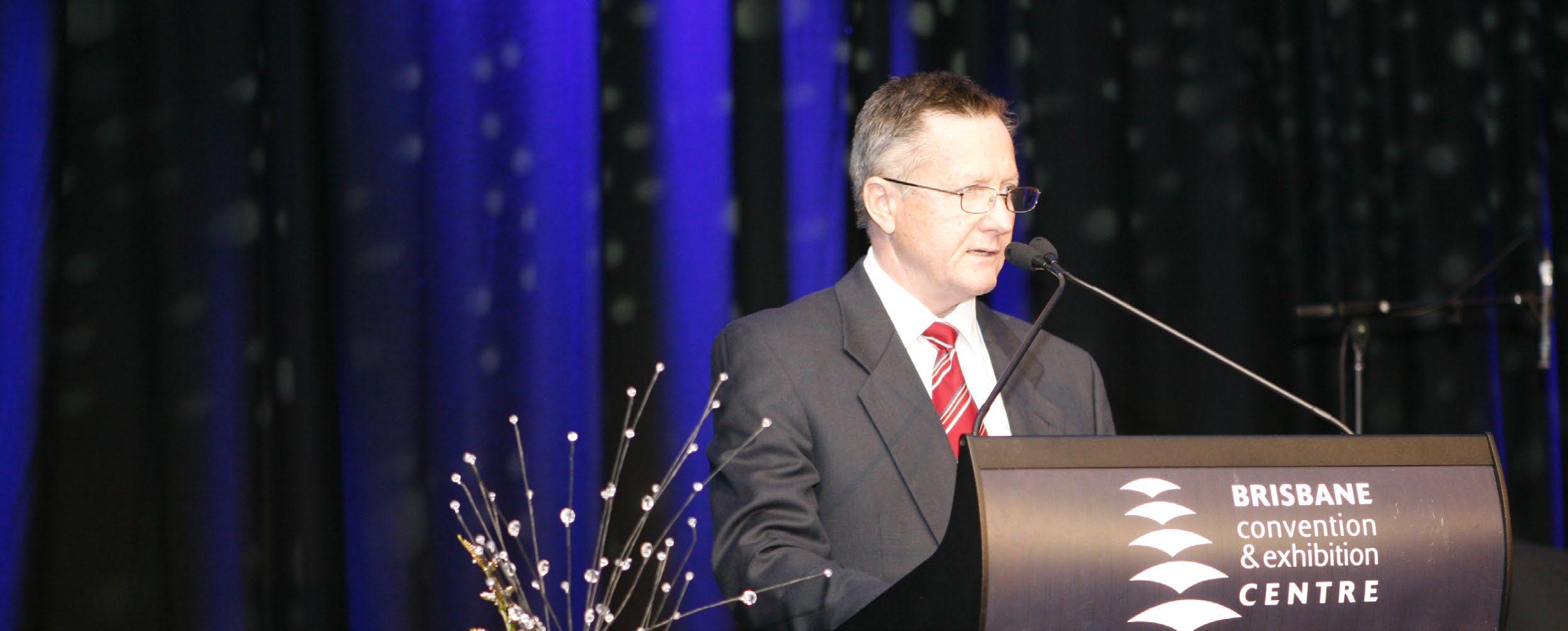
“The problems we have seen include some overseas steel not fully compliant with Australian standards, and lack of definition of responsibilities for critically evaluating compliance and approving product.”
According to John, ASI advocacy had led to tightening of Australian requirements governing imported fabricated steelwork but the need for vigilance remained. Lack of transparency with non-complying products was a continuing problem.
WINNER OF THE ASI-SPONSORED MONASH UNIVERSITY UNDERGRADUATE AWARD FOR EXCELLENCE ANNOUNCED
Hanlin Cheng has won the ASI-sponsored undergraduate award for excellence in the third year of his Bachelor of Engineering Degree in Steel Structures and Structural Steel Design at Monash University.
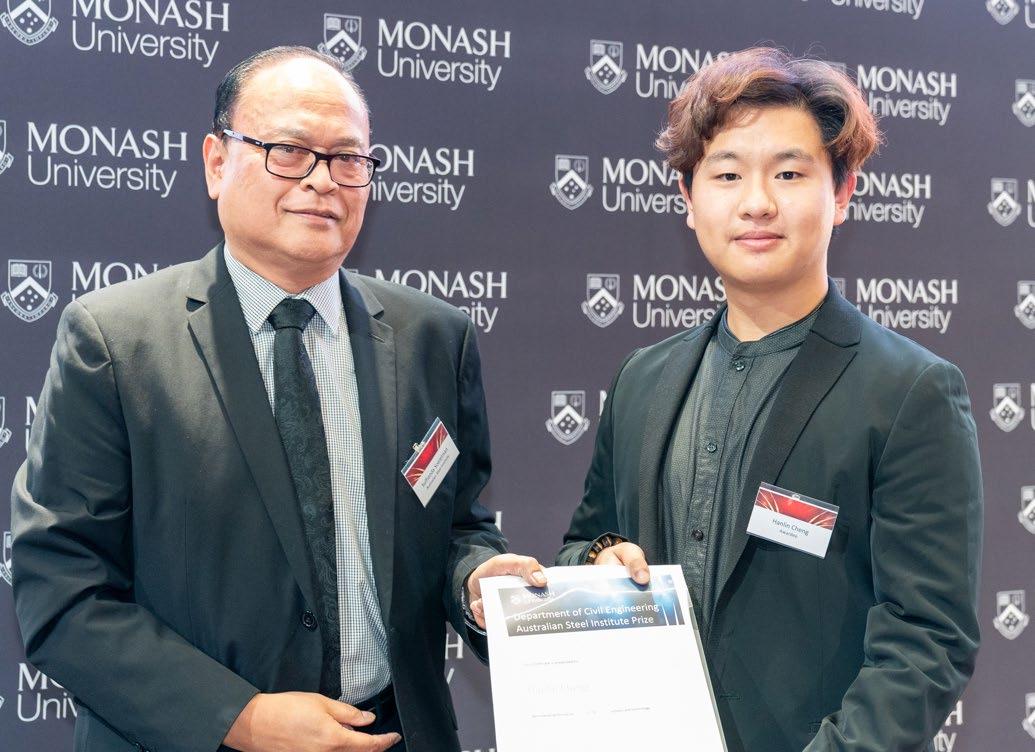
ASI Victoria state manager Sulfi Soeleiman attended the Monash Civil Engineering Annual Awards 2023 and presented Hanlin with the award (pictured).
As the Australian steel industry partner, the ASI sponsors undergraduate awards across all universities by presenting each winning student with an award certificate and a voucher for a choice of one or more ASI eLearning courses up to the combined total value of $500.
John said the role of ASI has changed since he first joined the Queensland office of what was then the Australian Institute of Steel Construction (AISC) in 1990. “A major focus in those days was educating engineers. All of the AISC state managers were structural engineers. ASI has a much broader role these days offering technical leadership, advocacy and marketing services for the whole Australian steel supply chain, and our managers reflect a more diverse professional work experience.”
John said the publication of key ASIbacked steel design books including the Design of Portal Frame Buildings and Economical Structural Steelwork came out of the desperate need for industry-specific learning.
John said the rise of 3D modelling and sustainable steel has opened exciting new doors for education and the steel industry. “Steel will continue to evolve and the ASI will be there to lead the way.”
UNDERSTANDING MARKET VOLATILITY AND SUPER PERFORMANCE
Financial markets have been up and down recently. But what does this mean for your future retirement security?
Most investments will rise and fall over time, so it’s important to understand how - swings in performance – known as market volatility – can affect your super.
The size and frequency of changes in investment values, both up and down, are more noticeable in the short-term. And it’s not unusual to expect periods of short-term volatility from time to time.
What causes market volatility?
In general, financial markets don’t like uncertainty, disruption or instability. Several events have affected investment performance recently. Moving out of the COVID-19 pandemic has led to labour shortages, an increase in consumer spending and supply chain disruptions. The Russian invasion of Ukraine has also impacted global supply chain issues. These events have also contributed to the highest inflation in decades.
Rising inflation is often connected to an increase in market volatility, lower fixed interest and equity (share market)
returns. As inflation reduces future purchasing power, it can also decrease the real value of an investment.
To fight inflation, central banks have been rapidly raising interest rates. Increases to the cost of borrowing have impacted investment markets, resulting in underperformance across the globe.
What does this mean for super?
It’s important to remember that ups and downs are a normal part of investing. AustralianSuper's investment team believe in active management to enhance member returns1
Over the last 20 years, significant market events like the Global Financial Crisis, the Brexit vote and COVID-19, appear relatively smooth when looking at overall long-term growth.
Having diversity in your super investment can be key to cushioning market downturns. Assets such as infrastructure, private equity and cash can act defensively in a market dip while positioning the fund to enjoy future benefits when the market recovers.
How to protect your super
When going through swings in investment performance, it can be helpful to remember super is a
long-term investment. If you’re concerned about changes to your super balance, or the affect to your retirement plan, consider speaking to an accredited financial adviser. They can help you review your retirement goals and consider your investment options2
1. Personal financial product advice is provided under the Australian Financial Services Licence held by a third party and not by AustralianSuper Pty Ltd. Fees may apply.
2. Investment returns aren’t guaranteed. Past performance isn’t a reliable indicator of future returns.
This information may be general financial advice which doesn’t take into account your personal objectives, financial situation or needs. Before making a decision about AustralianSuper, you should think about your financial requirements and refer to the relevant Product Disclosure Statement available at australiansuper.com/pds or by calling 1300 300 273. A Target Market Determination (TMD) is a document that outlines the target market a product has been designed for. Find the TMDs at australiansuper.com/tmd.
Sponsored by AustralianSuper Pty Ltd, ABN 94 006 457 987, AFSL 233788, Trustee of AustralianSuper ABN 65 714 394 898
This article was supplied as part of a paid advertising package.

| STEEL AUSTRALIA | WINTER 2023 11 INDUSTRY INSIGHTS
CLICK HERE TO LEARN MORE ABOUT FINANCIAL ADVICE OPTIONS >>>
HOME RENOVATORS TURN TO STEEL
The Australian Steel Institute (ASI) is enjoying a strong response to a campaign promoting the benefits of durable and stylish Australian steel in home renovations.
The roll former-funded Choose Steel campaign employs a website (www.choosesteel.com.au) to promote steel as the preferred building material for home renovations.

Australian-made steel for roofing and frame solutions offers many advantages when renovating or building a new home. These include design flexibility, contemporary aesthetics, strength, long-lasting, low maintenance, fire performance, sustainability and thermal efficiency to name a few.
The website features a collection of compelling case studies (including Silver Back House, opposite), practical dos and don'ts for home renovation, and a comprehensive list of steel suppliers specialising in home renovations. Two thousand users visited the website in the first two weeks.
The ad component of the campaign employs digital billboards at key
Melbourne transport locations including motorways. Social media posts on the campaign are also being published to a ‘Choose Steel AU’ address across Instagram, Pinterest, Facebook, YouTube and LinkedIn, pointing home renovators to the Choose Steel website and its list of steel suppliers.
Melbourne was chosen as the initial launch site for the ad campaign based on research suggesting strong interest in Melbourne in steel as a building material for home renovations.
Interested consumers can choose one of the listed ‘trusted suppliers’ and go their website or get in direct contact with them for more information.
Success could see the ASI roll out the campaign to other states – and a range of other steel products targeted using the same Choose Steel formula. Choose Steel will also be theme for the Australian Steel Convention in Melbourne from September 10 to 12.
Participating steel supplier partners in the promotion include BlueScope, Fielders, Lysaght, Metroll, Stramit, Stratco and Steeline.
Contemporary meets classic at Silver Back House Streetscapes can gracefully evolve to accommodate contemporary designs without discarding a property’s character.
This is reflected in a residential project by Sydney-based architecture and design practice Goodwin Scarfone Belgiorno-Nettis (GSBN) that involved increasing the overall scale of a home to suit the changing needs of a young family.

The Victorian-era terrace façade gives little away to the avant-garde nature of the extension that lies at the rear of the property, nor to the prominent role that CUSTOM ORB® has played in the project.
“The use of unpainted ZINCALUME® steel in CUSTOM ORB® allowed us to add a contrasting architectural element that celebrated honest, raw Australian materials,” GBBN director Henry Goodwin said.
“The dialogue between different traditional Australian building materials led us to the composition of a CUSTOM ORB® exterior finish with timber framed glazing and aluminium hoods contrasting the existing rendered and painted Victorian-era terrace.”
“Balancing the cool, silver tones of the ZINCALUME® steel material with varying shades of timber gave the project more visual depth. This mixture also helped tie in the design’s natural features including the pockets of planting evident in the gaps of the façade.”
CLICK HERE TO VISIT THE CHOOSE STEEL FACEBOOK PAGE >>> CLICK HERE TO VISIT THE CHOOSE STEEL INSTAGRAM ACCOUNT >>> CLICK HERE TO VISIT THE CHOOSE STEEL WEBSITE >>> CLICK HERE TO WATCH THE CHOOSE STEEL VIDEO >>>
Photos by Katherine Lu.
COMBILIFT LAUNCHES LARGEST COUNTERBALANCE ELECTRIC TRUCK
Leading forklift manufacturer Combilift recently launched another new model truck. The new CombiCB70E is a further addition to Combilift’s ever growing range of electric models which offers powerful performance, extensive battery life and unrivalled ergonomics.
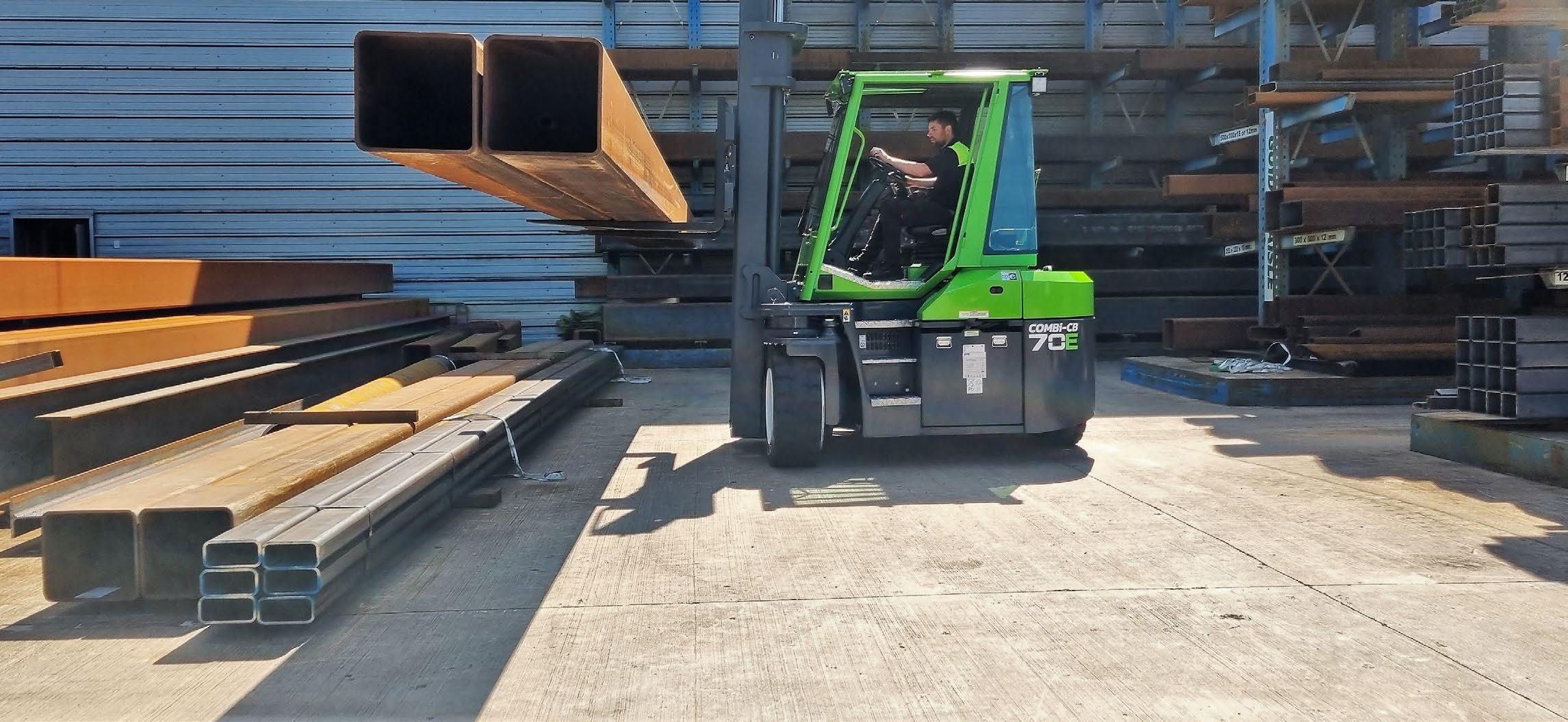
This model, in the vibrant Combigreen livery first seen on the recently launched Combi-CUBE product, boasts the distinction of being the shortest 7t capacity counterbalance truck on the market whilst also benefitting from multidirectional ability, enabling the versatile space saving handling of both long and bulky loads.
Design features incorporated into the high-capacity Combi-CB70E such as its large super-elastic tyres and compact wheelbase make it ideally suited for the operational demands of the timber industry. With a 7,000kg lift capacity, this model benefits from an impressively small footprint as well as exceptional manoeuvrability meaning that it can easily move bulky loads of timber around in confined spaces.

Occupational health and safety requirements mean that the welfare of the workforce has become ever more important over the years. Drivers of industrial vehicles, who are often required to spend extensive periods in their workstations, quite rightly expect the highest levels of comfort and safety.
Combilift’s designers have therefore gone to great lengths to ensure that the latest generation of models are kitted out with top quality components that ensure sophisticated ergonomics for a stress-free in-cab environment. Features in the spacious cab include generous
glazing for excellent all-round visibility, the tilting steering column, hydraulic steering and the Grammer MSG65 seat.
What sets the Combi-CB70E apart from other forklifts is its gas strut suspension cab, which uses components such as those found in large scale industrial machinery with cab suspension. Combined with the super-elastic tyres this guarantees the smoothest of rides over uneven or less than perfect ground conditions such as those typically experienced in lumber yards.
Combilift’s newly developed auto swivel seat was also premiered at the Ligna show. This optional feature automatically engages and swivels the seat and armrest 15° to the right or left to accord with the direction of travel selected by the operator, reducing driver strain, particularly when travelling in reverse. (Patent Pending Application No. 2305983.5)
The truck also features Combilift’s internationally patented and Red Dot awarded independent electric traction which provides all front and rear drive wheels with 100% traction control. This
negates the need for differential lock on slippery surfaces and significantly reduces long load momentum twisting when travelling sideways. Each electric drive incorporates parking and regenerative dynamic braking for power efficiency. Roll-out access for major electrical components also simplifies maintenance tasks.
This mix of next-gen performance, extensive battery life and exceptional ergonomics combined with all the advantages of the Combi-CB range, makes this the most powerful compact electric multi-directional forklift to date.
Combilift CEO and co-founder Martin McVicar said, “The increased capacities that we are offering in our electric range will answer the demand for ever more powerful products which at the same time help companies to achieve their aims for more sustainable operations. We are confident that this model will be a popular addition to our portfolio for many industry applications.”
This article is part of a paid advertising package.
| STEEL AUSTRALIA | WINTER 2023 13 INDUSTRY INSIGHTS

OR CLICK HERE TO VISIT THE STEEL SUSTAINABILITY AUSTRALIA WEBSITE >>> FOR FURTHER INFORMATION: Contact Jerusha Beresford (ASI Sustainability Manager) on ssa@steel.org.au or 0419 253 016
ON THE BEAM
Each quarter, the Australian Steel Institute brings you news and views from around the steel industry in our regular column: On the Beam. From projects won and completed, through to new product launches and award wins, you can find it all here.

NEW ZEALAND STEEL PARTNERS WITH NZ GOVERNMENT TO SHRINK CARBON FOOTPRINT
New Zealand Steel has partnered with the New Zealand government in a $300 million co-investment to shrink the carbon footprint of the Glenbrook steel mill, located 40km south of Auckland. New Zealand Steel will build a new electric arc furnace (EAF) at its steelworks, as part of the move to lower-carbon production.
New Zealand Steel's chief executive Robin Davies said the significant investment will reduce Glenbrook’s carbon footprint by 800,000 tonnes from day one – the same as taking approximately 300,000 cars off the road permanently.
“That’s a reduction of over 45% in New Zealand Steel’s emissions – or a total of 1% of New Zealand’s total annual emissions. It also sets the platform for further carbon reductions and is a significant step towards our goal of net zero by 2050. These reductions will come from replacing Glenbrook’s existing oxygen steelmaking furnace and two of the four coal fuelled kilns.”
“An electric arc furnace makes sense when there’s enough affordable renewable energy and scrap steel available, a way to get that scrap steel to site, and the right policy settings. We’ll firm up the details of the different aspects of the project over the coming months but crucially, New Zealand has all these essential enablers in place.”
The NZ government will contribute up to $140 million through the Government Investment in Decarbonising Industry fund. New Zealand Steel will commit the additional $160 million.
“From our perspective, this is a necessary step to secure steelmaking in New Zealand for many years to come. I’m delighted to say this is a great example of business and government working together to meet the country’s goal of netzero emissions by 2050," Davies said.
The managing director and CEO of New Zealand Steel’s parent company, BlueScope, Mark Vassella attended the announcement with the Prime Minister. Vassella said the co-investment is a landmark deal that showed the power of well-constructed public-private partnerships or investments.
“New Zealand Steel and the government should be very proud of their initiative and the hard work that has led to today’s announcement,” Vassella said.
UKRAINIAN SOLDIERS PRAISE THE BUSHMASTER’S “SUPERIOR ARMOUR”
For over two decades, BISALLOY® Armour and Structural Steel have been vital in protecting occupants of the Bushmaster. Now, the armoured vehicle protects Ukrainian soldiers after the Australian Government donated 90 Bushmasters to Ukraine.
Bisalloy has been immensely proud to work alongside Bendigo defence manufacturer Thales Australia to see the Bushmaster Protected Mobility Vehicle come to fruition, with research and development initially starting in 1996.
Designed to be used by Australian armed forces, the armoured vehicles have specified various grades of BISALLOY® Armour and Structural Steel for vital components of the Bushmaster. Components such as the outer panels, doors, bonnet and hull.
In an undisclosed location in Ukraine, troops recently gave the Australian-made Bushmaster praise to ABC News while the armoured vehicles were getting put through their paces. Ukrainian solider Rustam, who is running a training session involving the Bushmaster that the ABC was granted access to, says the Australian vehicle has superior armour to other troop carriers.“Bushmasters work perfectly. They can withstand RPG shots, run into mines, and tame enemy machine guns,” he said.
Ukrainian driver of the Bushmaster vehicle, Oleksandr, also told ABC about the vehicle and how they are to play a “huge role” in the Ukrainian counteroffensive against Russia. “It’s fantastic,” he explained when asked about the Bushmaster manufactured in Bendigo. “Words cannot express it. It’s such a powerful vehicle. It is much easier to drive than our equipment,” he said.
The Australian Government recently announced a $160 million contract for Bendigo defence manufacturer Thales Australia to build another order of Bushmasters for the Australian army, which utilises Australian-made, militarygrade steel from Bisalloy. The contract for manufacturing 78 new Bushmasters over the next 18 months was signed at Thales Australia’s Bendigo facility in May.
“More than 1,200 Bushmasters have already been manufactured at our Bendigo facility,” Thales Australia chief executive Jeff Connolly said. “As well as proving to be a life-saving vehicle for the Australian Army, they have been exported to eight nations including the Netherlands, UK, Fiji, Jamaica, New Zealand, and Indonesia.”
| STEEL AUSTRALIA | WINTER 2023 15 INDUSTRY INSIGHTS
CR KENNEDY AND LEICA GEOSYSTEMS: PIONEERING DIGITAL TRANSFORMATION IN CONSTRUCTION

CR Kennedy is one of Australia's leading distributors of photographic, medical, surveillance, and geospatial equipment. Since its foundation in 1934 as a camera importer, the familyowned company has blossomed into a multi-faceted enterprise, known for its dedicated local support and advanced technological solutions. CR Kennedy is helping transform industries like steel, construction and mining through its digital solutions. With a forward-looking approach that leverages cutting-edge technology like 3D scanning and augmented reality, CR Kennedy is not just adapting to, but leading the charge in the era of digital transformation.
CR Kennedy is Australia’s leading importer and distributor of photographic, medical, surveillance, and geospatial equipment. With offices in every state and capital city across the country, dedicated tech support teams ensure that all equipment supplied can be serviced locally.
According to Bernard Edmonds, segment manager of building construction, the secret to the company’s success is their talented people. “We have a really good infrastructure network of offices and really good team in each office that can not only help with sales, but with backup and support. Our clients appreciate that we’re always willing to go that extra mile to make sure their technical requirements are met.”
Leica iCON Total Station.
With almost 90 years of history, CR Kennedy has established its credentials as a longstanding, trustworthy brand. “In addition to our exceptional service, the general stability of the CR Kennedy business aids our success,” Bernard said. "We’ve been here a long time and we’re not going anywhere.”
Family owned and operated
CR Kennedy was founded in 1934 by Clement Robertson Kennedy, initially focused on the import of high-end cameras from Japan. After Clement passed away in the 1970s, his son Malcom Kennedy became managing director. Over the past half-century, Malcom has grown the business from a small-scale camera importer into a multi-faceted business that employs more than 300 staff and has a huge
turnover. Today, Malcolm acts as chairman as his four sons progress through the company, with Robert Kennedy and his brother Clem as joint managing directors.
“At its core, CR Kennedy is a family owned company—it is traditional in that sense. While the company has grown in size over the years, it still maintains its traditional family business values.”
A diverse offering and client base
CR Kennedy’s camera division continues to stock retail stores and service consumers. But the business has also added a security division which provides high-tech solutions to clients like casinos and supermarkets, and a medical division to deliver
cutting-edge instrumentation to surgical wards.
Finally, CR Kennedy’s geospatial division has evolved and grown exponentially since its launch 30 years ago. “We began as a basic importer of survey equipment, concentrating solely on servicing the requirements of professional land surveyors,” Bernard said.
For the last 22 years, the company has been the sole and exclusive distributor in Australia for Leica Geosystems, selling a wide range of products from robotic total stations to ground penetrating radar, and high definition 3D scanners, to industries as varied as steel, construction, and mining.
“The diversity of our product offering, and hence the customer base we serve, has grown beyond our traditional base,” Bernard explained. “We work with steel detailers, architects, engineers, and concreters—across all aspects of the steel supply chain.”
"Our products are now commonplace on all manner of projects, from residential to high-rise developments, through to the construction of freeways where our 3D automated machine control solutions can be found installed on heavy machinery such as excavators and graders."
For industries that have traditionally performed measurements and data capture by manual methods, CR Kennedy’s digital solutions are transforming their processes by replacing tape measures and notepads. “We provide the full solution from start to finish—the equipment and the software, as well as training and support for all these solutions,” Bernard said.
Watkins Steel implements laser scanning

Watkins Steel is a traditional steel fabrication company based out of Brisbane. For over 50 years of operation, managing director Des Watkins was of the mindset that innovation was impossible in the steel industry.
That all changed in 2013 when the business embarked on a digitisation journey that encompassed laser scanning, drone scanning, 3D photogrammetry, augmented reality, and virtual reality. With the introduction of robotics, Watkins Steel engaged CR Kennedy to implement laser scanning. “Robotics is only as
| STEEL AUSTRALIA | WINTER 2023 17 INDUSTRY INSIGHTS
“
We work with steel detailers, architects, engineers, and concreters—across all aspects of the steel supply chain. We work on all sorts of projects, from highrise developments, through to the construction of freeways, and largescale machinery like excavators.”
good as the information we’re feeding it,” Des explained. “By accurately turning the site into a digital footprint, we had all the measures we needed.”
Leveraging 3D visualisation and automation, the business has reduced factory labour by 3,000 to 5,000 man hours per month – while minimising the risk of human error. Thanks to the technologies they’ve implemented in partnership with CR Kennedy, the company has expanded to become Holovision, a leading provider of spatial data and digital engineering solutions.
Des said, “Rather than just being a steel fabrication company limited to south-east Queensland, we’ve now got Holovision in Melbourne, Mackay, and Darwin – and each office is growing. With a staff of about 100, there are 20 people that are doing jobs that didn’t exist not that long ago.” The results speak for themselves: in the past year alone, Holovision has grown by about 50%, up from 20% year on year. The
company is constantly upskilling their staff to ensure that everyone in the team knows how to laser scan and import data into other platforms like augmented reality and virtual reality.
“What we have found is that laser scanning is the underlying platform that we’ve now been able to feed into virtual reality and augmented reality. It’s opened up these whole new fields. Now we’re scanning things and working on other projects that have nothing to do with steel. From humble beginnings, thanks to CR Kennedy, we’re now going overseas and I’m so excited by it.”
Bringing the digital 3D world to the steel industry
With laser scanners enabling a seamless transfer of data, Bernard Edmonds, segment manager of building construction at CR Kennedy, is excited about the opportunities that this new way of working will create for the Australian steel industry. “The ability to work within a 3D environment across the

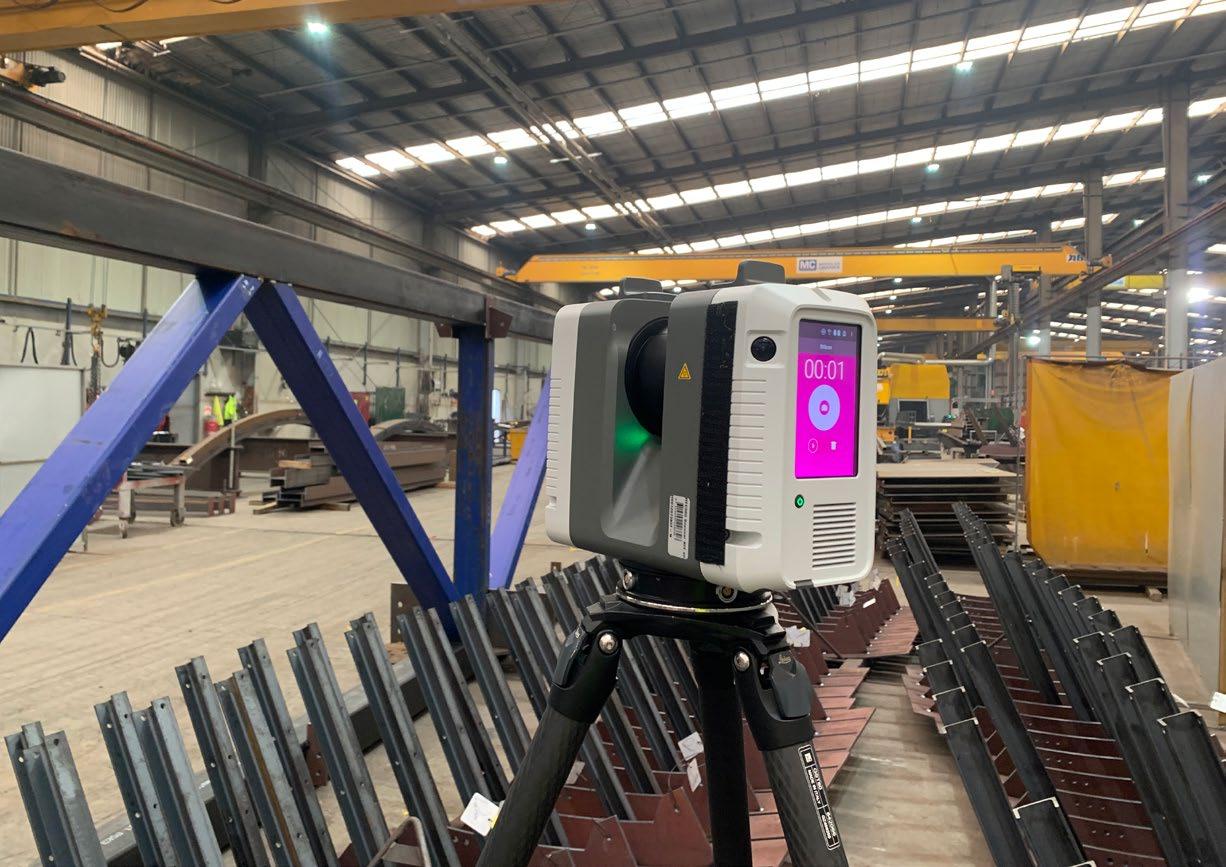
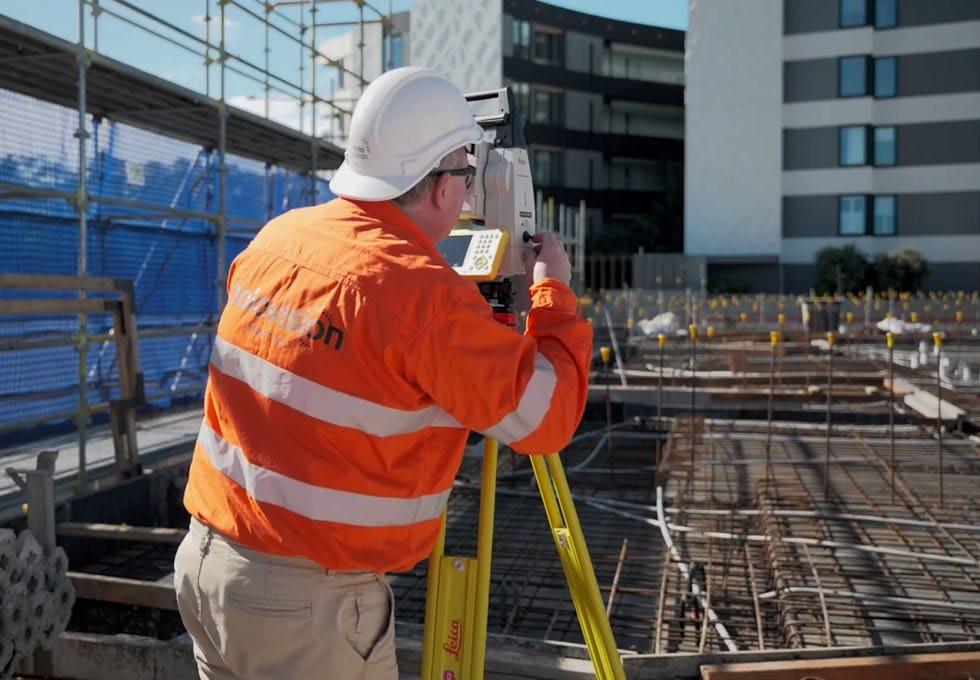
whole spectrum of design, fabrication and installation, and then back to the design phase once the construction is finished is a gamechanger,” he said.
Previously, a design would be completed in an office environment to a high level of specification. But once the steelwork was delivered to the site, and beams and columns were erected using tape measures and string lines, things could always go wrong.
Now, with the availability of robotic total stations, accurate 3D placement and set out of these structures takes away the risk of human error and allows fast, efficient work to be carried out with very low risk of any rework to be done. On completion, a laser scan of a newly constructed building ensures that the model is up to date with what has been installed on site – not just what was designed.
Bernard said, “With digital solutions like those supplied by CR Kennedy, the likelihood of errors is greatly reduced, rework is no longer a common
The RTC360 checking new steel structures.
Andy from Holovision using the Leica iCON.
The Leica RTC360 scanning on the factory floor.
occurrence and steelwork need not be torn down and replaced. CR Kennedy is able to contribute to construction efficiencies, helping ensure that projects are completed on-time and on budget.”
Living the future every day
As technology becomes more capable of handling huge data sets extremely quickly across the whole lifecycle of construction, designs have the potential to be improved and enhanced even further. The CR Kennedy team is also preparing for a wider usage of augmented reality and virtual reality in the steel space, particularly when it comes to setting out features on a site.
“You will be able to put on a headset and analyse anything within the designed 3D model as you walk around a construction site – a concrete wall, the edge of a slab, holding down bolts. The automation in layout and scanning technology is only getting better and better as well."
But one thing is clear for the organisation: the days of working with 2D paper drawings are well and truly over. “I feel like we’re living the future every day – every day the pace of technological advancement keeps us on our toes here at CR Kennedy,” Bernard said.
Leica Digital setout ensures clash-free steel design
CSD Group Australia was engaged for pre-construction works for the Aldi supermarket at Indooroopilly Shopping Centre in Queensland.
The project involved reinforcing the carpark roof deck below with additional steel supports. Initially CSD Group performed a laser scan and digital measurements prior to detailing the steel supports that will be installed beneath the new store.
Both the laser scan and digital setout were undertaken simultaneously and took just one day. CSD utilsed their in-house Leica iCON Setout Station (iCR85)—purchased from CR Kennedy—to setout all concrete fixings and steel fitting plates.
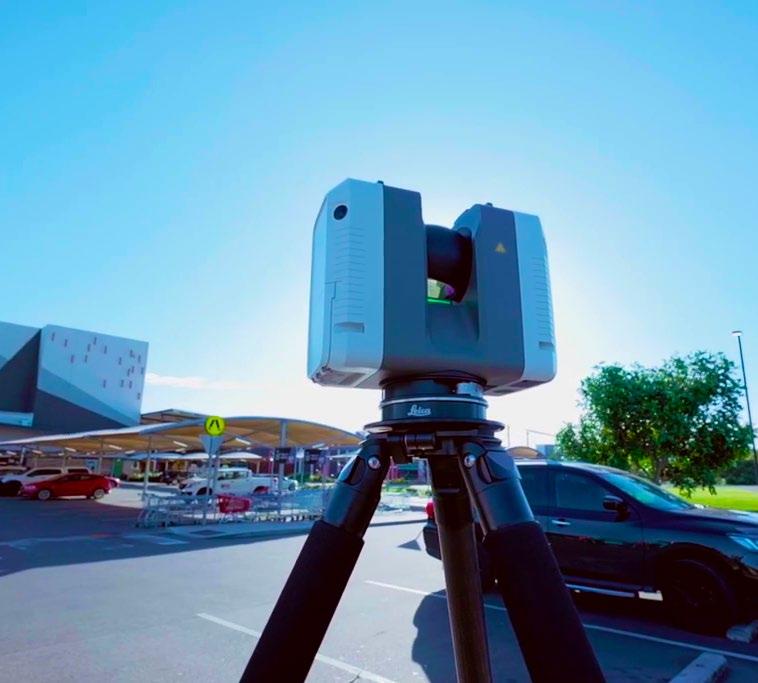
Back at the office, the laser scans were processed and registered together to produce a complete 3D point cloud of the carpark. The capture included concrete columns, pen marks showing Post Tension (PT) cables, conduit locations in the undercroft of the carpark as well as rebar in the concrete columns. The point cloud was imported into Tekla Structures to begin steel design, avoiding the existing structure and elements.
Despite the architectural design having regularly spaced brackets and beams, the site scan determined that: Some steelwork had to be redesigned
to be installed to the carpark undercroft. The redesign resulted in cost savings, easier installation and faster fabrication while maintaining structural integrity.
All steel was to be fixed to the underside of slab with masonry anchors at 1m centres. We managed to avoid all PT cables as marks (scanned by others) were all picked up. Beams were fixed to existing concrete columns with first fix bracket t-plates, each with six Hilti fixings. All rebar marks were picked up by the scan, so all 16 brackets were modelled individually to miss the rebar. Each bracket ended up being different.
Columns were not square to each other and many rotated. This would not be picked up with a tape site measure. The ceiling is sloping, so the steel is not all at the same level. It was adjusted to make grout between top fix plates and ceiling to a minimum.
The new steel model was re-imported to the point cloud in correct position. Using virtual reality (VR), a “walk through” of the carpark was also done while in the office. The VR enabled us to do a more enhanced clash check between new and existing structures.
Had the site scanned not been preformed, the original structural design would have resulted in extremely low headroom, in some cases below minimum 1950cm floor to ceiling/beam heights for this carpark.
| STEEL AUSTRALIA | WINTER 2023 19 INDUSTRY INSIGHTS
“ The ability to work within a 3D environment across the whole spectrum of design, fabrication and installation, and then back to the design phase once the construction is finished is a gamechanger.”
Leica RTC360 Scanner.
MENTIS AUSTRALIA : INNOVATION AND EXCELLENCE STAMPED INTO EVERY STEEL SOLUTION
Part of the Mentis global group, Mentis Australia is a leader in grating, handrail, expanded metal and a diverse range of high quality products for various industries. With over 70 years of experience, Mentis has established a global presence while maintaining agility in its specific domestic markets. From steel grating to handrail, guardrail and cutting edge 3D printing, the company's continuous global growth is built on strategic partnerships and acquisitions. With a focus on tailored solutions, Mentis Australia provides expertise in engineering and manufacturing, ensuring accurate designs and efficient production.
Mentis is a world leader in high quality grating, handrail, expanded metal, guardrail, and other light structural steel products. Investing in the latest manufacturing processes and technology, Mentis ensures professionalism, accuracy and efficiency.
Sheldon Upton, managing director of Mentis Australia and board director of the global group said, “Through continuous research, innovation
and over 70 years of experience, together with a genuine commitment to understanding our markets, Mentis has become a great example of a company with a global footprint, while remaining dynamic and nimble at a local level.”
The pursuit of quality, service and innovation
From the moment it opened its doors in 1950 as a precision engineering workshop in Johannesburg, South Africa, the Mentis name has been
synonymous with innovation and uncompromising quality. Founder Andrew Mentis grew the company’s reputation, often designing his own bespoke machines to manufacture components for specific industries.
After winning a material contract to design and manufacture a unique steel floor grating system for a new petrochemical plant, Mentis began to focus on the development and manufacture of steel grating.

Product profile: Grating
Engineered to carry loads with minimal dead weight, while maximising air flow and light penetration, grating is a worldrenowned economical floor solution with aesthetic appeal. Mentis open-floor grating is manufactured to a quality standard that delivers resilience and craftsmanship.
Mentis Grating can be specified as flooring, stair treads, and trench covers in various industries, such as construction, engineering, oil and gas, mining, and industrial markets. It can also be used for fencing, shelving, barricades, screens, and much more.
The Mentis range of grating products are built to last, with a design that maximises comfort, provides corrosion resistance, and creates the perfect blend of optimal strength and performance. These include:
• Pressure Lock Grating: a fully unified open-floor grating, locking flat bars and round bars together
• Fusion Welded Grating: open-floor grating, with flat bars and round bars fusion welded together
• Heel Guard Grating: redefines pedestrian-friendly grating through tightly spaced bars with the open-style functionality of traditional open-floor grating
• FRP Grating: combines fibre glass strength with polyester resin, to achieve the chemical resistance demanded from highly corrosive environments
• Aluminium Grating: utilises aluminium flat bar with a pressure-locked cross rod to offer a light weight and tough open-floor grating.
In the decades that followed, the company went on to supply worldclass, innovative, and high quality products to all of the major industries, from power generation, mining and petrochemical to motor, construction, food, paper and steel.
Mentis also expanded its offering to include metal, guardrail, industrial handrail systems, and other light structural steel products. Sheldon explained, “With an increasing international reputation, the company was looking to establish a global footprint. So in 2012, it strategically acquired Australian firm R&R Engineering.”
Established 12 years prior in the hills of Perth, R&R Engineering was already a known as a reputable grating and handrail fabricator to leading construction and project engineering companies in Western Australia.
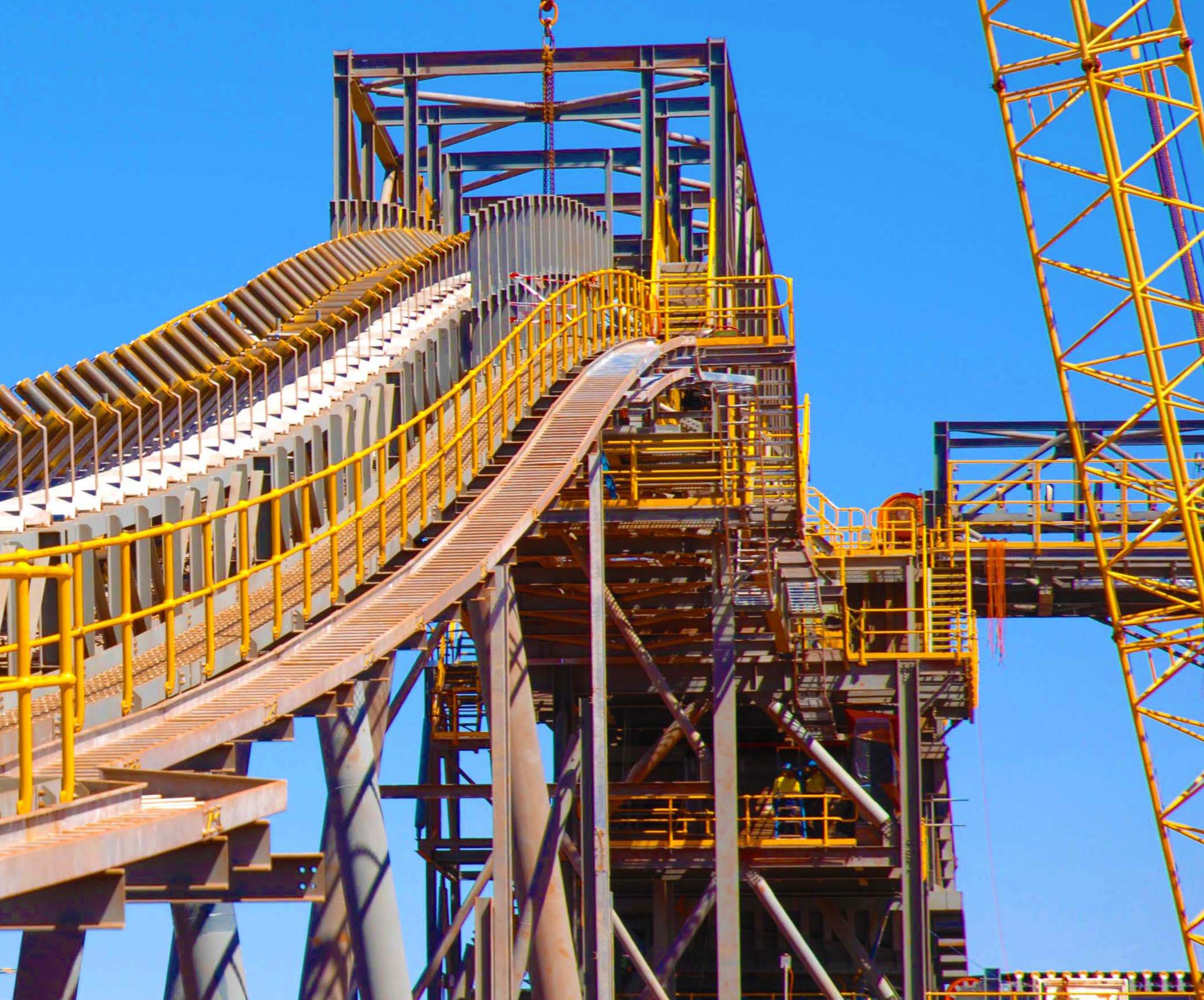
“The acquisition presented great synergies,” Sheldon said. “The two companies shared a similar passion
for innovation, customer service and bespoke solutions.”
To enhance efficiencies and quality, the company installed upgraded automated equipment and designed its own stanchion drilling machine.
In June 2018, Mentis went on to acquire Rhino Grating—a handrail and grating fabricator with facilities in Queensland, Victoria, and China, which operated on similar values of quality, service and unique solutions. Mentis had cemented its commitment to the domestic Australian market.
“The Mentis story is one of continued growth through relationship driven partnerships with all stakeholders. We believe in the value of human connection and apply this principal in all our dealings and in our endless pursuit of quality, service, and innovation," Sheldon said.
Delivering tailored solutions
Today, Mentis is a multinational group of diverse businesses,
| STEEL AUSTRALIA | WINTER 2023 21 INDUSTRY INSIGHTS
“ We believe in the value of human connection and apply this principal in all our dealings and in our endless pursuit of quality, service, and innovation.”
Product profile: Mentis handrail systems
The Mentis handrail system was developed by taking a new quality level through an innovative approach towards manufacturing and fabrication. Through the application of robotic welding technology, advanced manufacturing machinery methods and high standards in fabrication, Mentis handrail is fabricated to meet AS 1657.
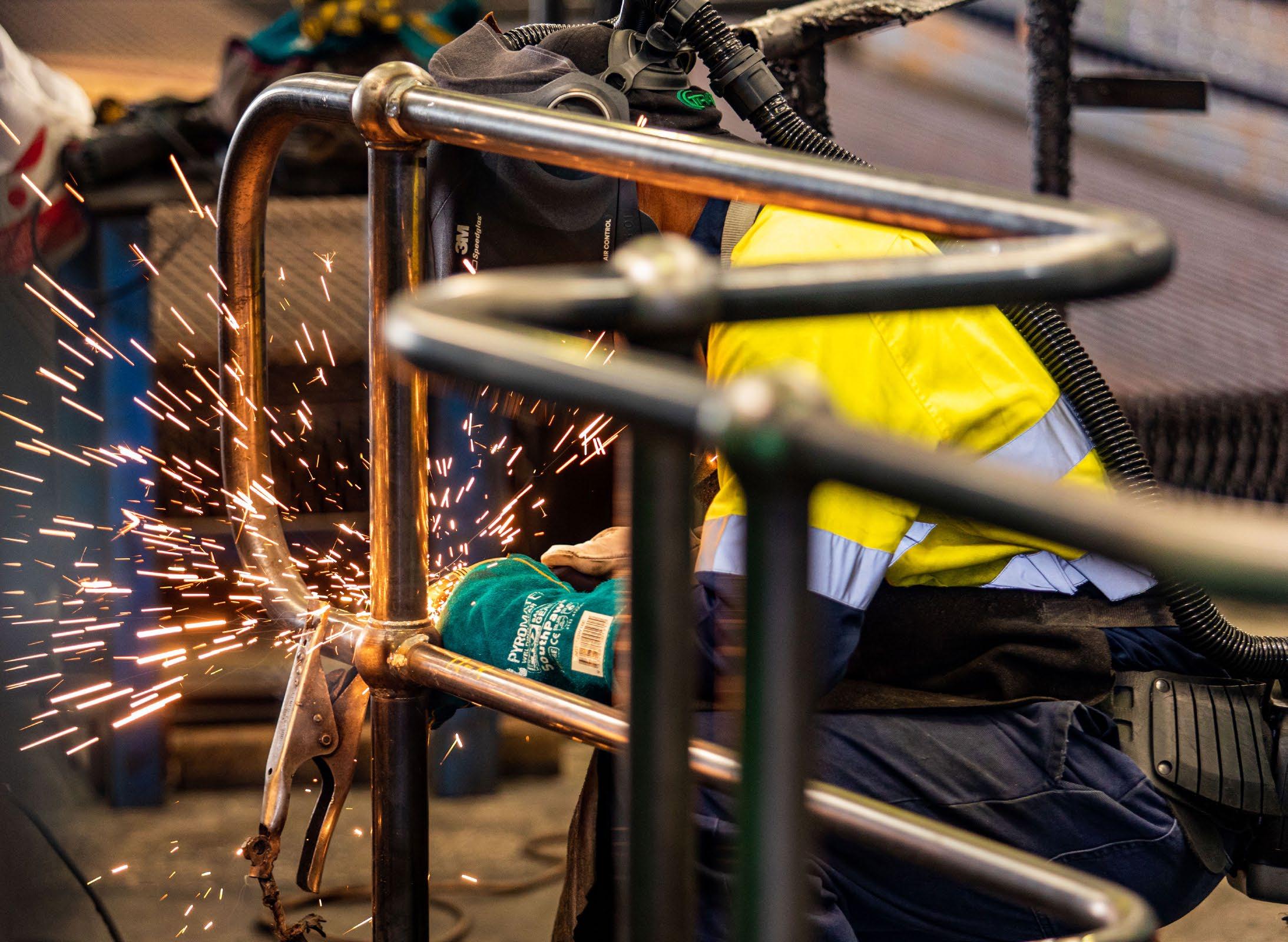
As a standard, all ball to rail joints are seal-welded. This provides a quality join that will mitigate moisture ingress, look neat and is extra strong. In addition, all handrail joins are designed to occur at a stanchion ball. If for any reason a join is outside a ball a spigot will be welded inside the pipe for strength.
When fabricating handrail, Mentis keeps the handrail and kneerail to the optimal length through the use of their CNC bender, which can bend 6.5m long pipe to suit the required handrail panel including multiple bends. This reduces welding and spigot joining, providing a stronger and higher quality product.
Mentis’ ball and tube Interlinked handrail system, heavy duty 4 ball handrail and unique self-closing gate systems combine high-end engineering standards and simple economics to deliver an efficient solution for heavyduty requirements. The stanchions, bends, closures, hand and knee rails, as well as accessories, can be supplied as loose components for easy site installation or as a prefabricated welded unit for fast installation on site.
The Mentis bolted handrail system is completely customisable and provides flexibility combined with strength and simplicity. Designed so that no welding is required, this DIY system is simple to assemble, reducing planning time. Their panelised handrail is designed to eliminate site welding altogether, which in turn keeps the surface treatment completely in tack and makes for rapid installation.
bringing together experts in grating, balustrades, handrailing, mesh, screens, platforms, walkways, expanded metal, gates, ladders and cages. Mentis services multiple industrial sectors namely resources, oil and gas, power, utilities, infrastructure, and commercial.
“We have in-depth knowledge of applications of all our existing products and are committed to adding new and innovative products to our offering in the near future.” Sheldon said.
This expertise and experience enables the Mentis team to provide solutions tailored to customer requirements, from exports of tons of grating across the world, to the design and fabrication of specific items.
With locations strategically located across Australia, Mentis’ is readily able to handle multiple large-scale projects at a time, and also assist with light structural steel, ladders, walkways and platforms solutions.
“We have a significant backing through the scale of the group, but remain extremely strategic, adaptable, decisive, and agile domestically in our regions,” Sheldon said.
A focus on continued growth
While nationally planned infrastructure spend remains high, with multiple key initiatives in the pipeline such as the 2032 Olympic Games, Sheldon believes there are both opportunities and challenges ahead for the Australian market.
“We are seeing a complex environment of economic uncertainty, increasing costs of capital and project delivery headwinds with a constrained labour market and increasing offshore threats. However, we will simply keep progressing our strategic growth initiatives,” Sheldon said.
To navigate these challenges, Mentis Australia is maintaining a high growth focus, based around organic and inorganic initiatives, including allocating investment into new initiatives.
But Sheldon remains optimistic about the future of Mentis Australia. “We continue to grow and develop our people capability and strengthen our stakeholder partnerships through relationship driven performance, in line with our medium term strategies. Watch this space,” Sheldon said.
Product profile: Mentis expanded metal Expanded metal is a passion for Mentis Australia. With years of engineering DNA in every sheet, Mentis expanded metal provides the reassurance of performance and reliability every time.
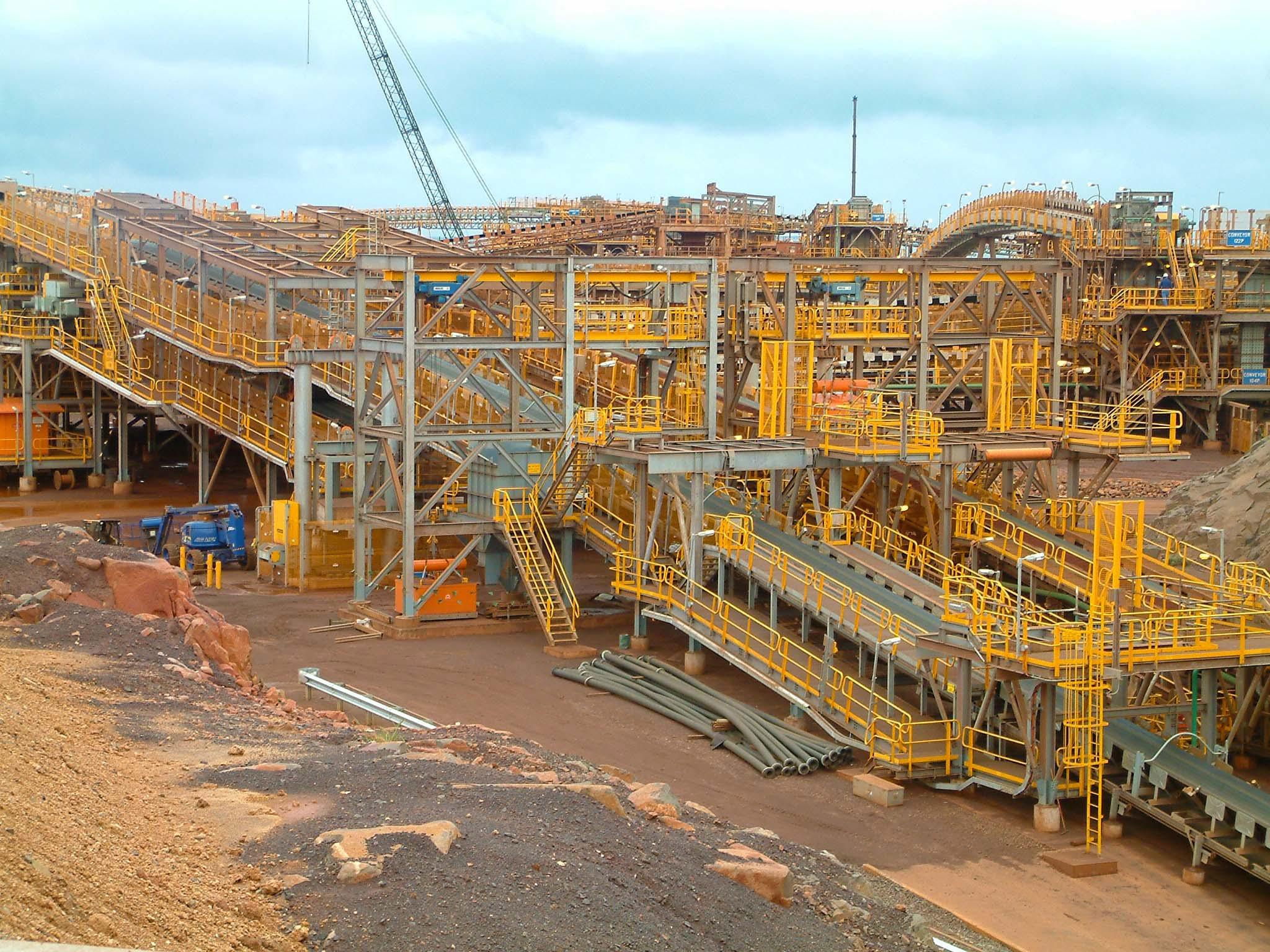
Expanded metal has the versatility to solve industrial and architectural requirements through clever utilisation of profile and material. Mentis Australia manufactures a comprehensive range of expanded metal products in varying sizes, masses, and thicknesses, including:
Raised expanded metal: engineered from coil, then cut and stretched to form a unique continuous pattern, without interrupting its integrity – to retain maximum strength and provide excellent non-slip attributes.
Flattened expanded metal: raised expanded metal is flattened to create an exceptionally versatile material that is both flexible and strong.
Building materials: Mentis utilises different expanded metals and transforms them into versatile practical building product solutions.
Planks: a single strip of metal formed into self-supporting planks with a grip surface – for the perfect combination of practical form and design.
Walkway planks: delivering ingenuity through design, the Mentis Walkway Planks provide a walkway with minimal supporting steel, revolutionising installation.
| STEEL AUSTRALIA | WINTER 2023 23 I NDUSTRY INSIGHTS
CLICK HERE TO LEARN MORE ABOUT MENTIS AUSTRALIA AND THEIR CAPABILITIES >>>
SUTCLIFFE ENGINEERING: BUILDING BRIDGES AND CREATING CONNECTIONS
Based in Melbourne, Sutcliffe Engineering is a leading provider of structural steel fabrication and erection services. With a specialised network of sub-contractors and suppliers, the company specialises in commercial and industrial works with substantial experience in complex engineering and architectural steel structures. Sutcliffe Engineering has a reputation for being customer focused, making the company the first-choice contractor for many tier one and tier two builders. This reputation has been forged over many years of building quality relationships, and delivering on time and on budget projects across Victoria. Sutcliffe Engineering regularly showcases its skills and experience in high-profile projects, playing a significant role in Victoria's Level Crossing Removal Project, the Kilmany Bridge, and a pedestrian bridge connecting two Deakin University campuses.
Established in 2001, Sutcliffe Engineering started out fabricating feeders for the mining sector, pressure piping, heat exchangers and furnace lances for overseas steel smelters. Over the years, the company progressed onto large scale infrastructure projects like railway stations, overhead structures, bridges and gantries, supplying to tier one and two contractors.

Today, Sutcliffe Engineering is a leading provider of structural steel fabrication and erection services. With a specialised network of subcontractors and suppliers, the company offers a complete package catered to customer requirements, from material procurement, shop drawings, and protective coating treatments, to onsite installation.
Exceptional steel services
Sutcliffe’s 2,300m2 facility comprises two undercover bays each with a lifting capacity of 36 tonnes. The facility is fully equipped for all major steel fabrication operations, including cutting, rolling, drilling, welding, lifting, and machining equipment. The team has extensive experience across all welding processes, using all types of materials such as copper to steel, and high nickel alloys.
According to Nick Palamaras, director of Sutcliffe Engineering, "We have extensive experience in welding exotic
materials such as copper to steel, including superalloys, high nickel alloys like Inconel and Incalloy, low ferrite stainless steel, Invar and Hastalloy— all to a wide variety of Australian and international standards. These cover normal structural steel fabrications, through to complex pressure vessels."

“An integral part of our delivery and quality outcomes is the excellent relationships we’ve developed with key suppliers. These include suppliers of raw materials, metal finishers, material processors, weld inspectors and transporters.”
Key to the Sutcliffe’s success is their simple philosophy of employing the best people available right across the organisation, to always ensure a high-quality outcome. "Managers, supervisors, and trades staff are backed by years of industry experience, offering their specialist fabrication knowledge to clients during the design phase of the project to provide more capable and cost-effective solutions," Nick said.
A focus on quality
Quality control and assurance are firmly embedded in Sutcliffe's company culture.“The manufacturing procedures we use are time proven and closely monitored during all phases of manufacture, and are chosen as fit for purpose for the complexity of task
involved. For each weld, we develop a full weld procedure according to the type of material, weld, and consumables, which is NATA approved for compliance to applicable standards and client specifications," Nick said.
Sutcliffe Engineering has a robust quality management system based on ISO 9001 requirements, and they are certified to AS/NZS 5131 Structural Steelwork - Fabrication and erectionCategory CC3, and comply with AS/NZS ISO 3834.2 Quality requirements for fusion welding of metallic materials
"We maintain detailed quality records that demonstrate conformance and traceability to its origin. Quality, inspection and test plans are established and verify that all aspects of specification criteria are met. For further quality assurance, our clients also receive substantial documentation in the form of a manufacturers data report, verifying that all aspects of their specification are met," Nick said.
"We are also dedicated to protecting and enhancing our environment in all works performed. Sutcliffe Engineering is recognised by the ASI as an environmentally sustainable facility, certified under the Environmental Sustainability Charter."
Armadale pipe mast with spiral flights.
Ormond overhead structure.
Building the Kilmany Bridge Sutcliffe’s construction of a new railover-road bridge at Kilmany has been hailed as a rare feat of engineering. The striking 95m long, single-span, steelarch bridge is part of the final stage of the Princes Highway East Upgrade, and will provide a significant improvement to safety and reliability for freight, tourists, and commuters.
Weighing approximately 3,200 tonnes, the bridge is the first of its kind in Victoria – replacing the former rail underpass that was built in 1965. It comprises a steel arch on either side of the railway track, a concrete bridge deck, and a network of high-strength steel 'hangers' that cross over each other, tying the steel arches firmly to the deck.
A number of site constraints challenged the engineering team – including the requirement for no central pier that would obstruct the line of sight for drivers on the highway, and the need to span the entire four-lane highway at a length of 94.5m. The network arch design was chosen because it allows one long span without a central supporting pier. It is a strong structural form with minimal bending, even under the heavy, asymmetrical load of a train.
For ease of installation, the bridge was prefabricated and assembled in a paddock next to the rail easement. Two sets of jacks then moved the bridge to its final location 27m away – a process which took 48 hours. Using off-site prefabrication minimised the total rail network occupation time to install the bridge and related rail infrastructure. This allowed V/Line to continue its regular schedule of passenger rail services with minimal disruption during the construction period.
The final bridge structure comprised 16 steel arch segments craned into place, and 1,000m3 of concrete poured to create the deck. Together, approximately 3,000 tonnes of materials were installed on the Kilmany Bridge, equivalent to nearly 50 trams. While more than 90% of the steel used in construction was produced in Australia, steel for the bridge hangers had to be sourced from a specialist manufacturer in Europe – one of the only manufacturers in the world capable of meeting the strict fatigue requirements for bridge hangers.


The Kilmany project is a testament to the power of thinking outside of the box when it comes to devising bespoke solutions that address and resolve site constraints and construction challenges. The result is a structure that will last well into the future, thanks to its strength and maintainability.
Sources: https://bigbuild.vic.gov.au/projects/mrpv/princes-highway-east-traralgon-to-sale/sections/kilmany-rail-bridge https://www.abc.net.au/news/2023-07-12/kilmany-rail-bridge-in-position-trains-vline-engineering/102576242 https://www.aurecongroup.com/projects/transport/network-arch-bridge-princes-highway-kilmany https://www.railexpress.com.au/kilmany-rail-bridge-a-rare-engineering-feat/ https://concreteinstitute.com.au/make-room-for-the-kilmany-bridge/
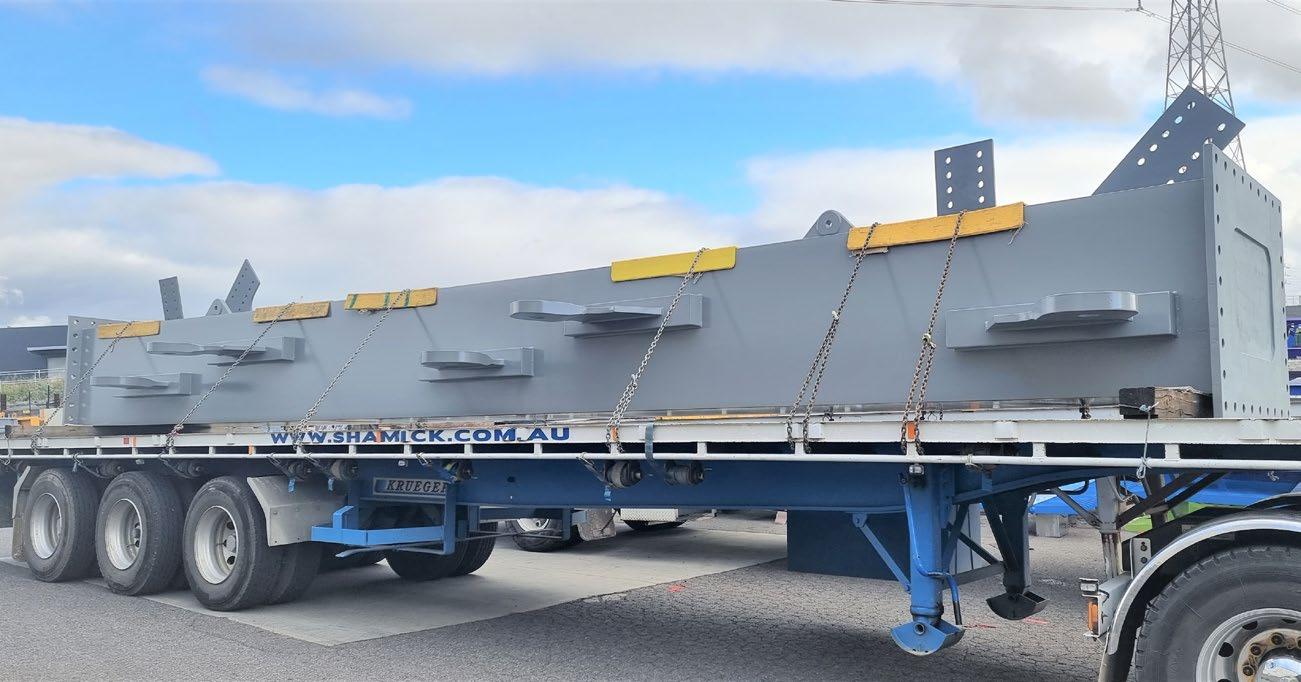


| STEEL AUSTRALIA | WINTER 2023 25
Transportation of a girder to site.
Transportation of a girder to the painters facility.
Erection on-site.
Erection of girders on-site.
CLICK HERE TO WATCH A VIDEO OF THE ERECTION OF KILMANY BRIDGE >>>
I NDUSTRY INSIGHTS
Connecting Deakin University
Sutcliffe Engineering was engaged in the building of a new pedestrian bridge at Deakin University, running over a creek to connect two campuses in Melbourne’s eastern suburbs. This three-dimensional modular bridge uses BlueScope REDCOR® weathering steel to deliver a practical, paint-free structure that requires minimal maintenance compared with conventional structural steel.

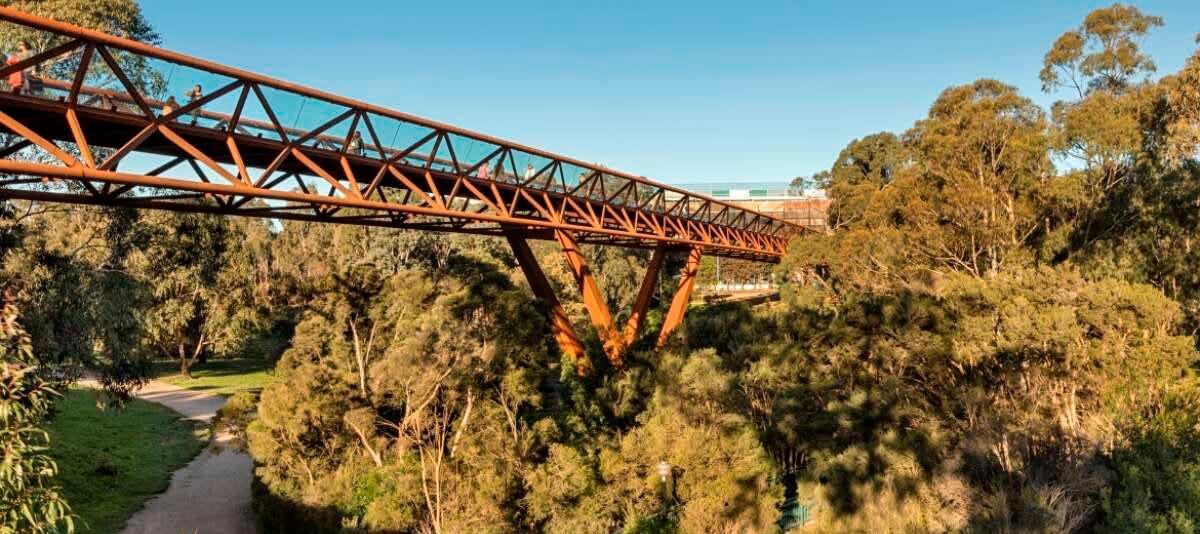
The site posed several key challenges, the primary one being access. The small existing bridge across the creek had stairs, making it inaccessible to people using wheelchairs and prams, or those with other mobility issues. Any new bridge had to comply with the requirements of the Disability Discrimination Act and provide safe and easy passage for people of all abilities.
Additionally, because the creek corridor is titled Crown Land, the flyover section had to be low maintenance and allow for quick and easy cleaning and repairs, to avoid protracted and costly access permits. The bridge also had to blend in with its native bush surrounding – an especially important consideration as a previous proposal had been scrapped following community opposition to the design. The complexity of the project was compounded by the fact that access to the walking paths and existing crossing had to be maintained throughout construction, allowing around 43,000 pedestrians to move through each week.
The new 250m long, aerial bridge was built using 200 tonnes of REDCOR® weathering steel, which requires low maintenance and has an appearance that was acceptable to the community. The innovative structural system includes an 85m long central section that touches the ground at just one point, minimising the bridge’s impact on the creek corridor both during construction and throughout its 100-plus year lifespan.
The bridge comprises a series of modular bays, each about 4m2, connecting to form a series of six trusses. The walkway deck consists of concrete panels cast in permanent formwork trays made from REDCOR® weathering steel, giving the underside of the bridge the same appearance as the rest of the structure. The steel was fabricated off-site by Sutcliffe Engineering, working with the architect’s 3D model as a reference to ensure geometric accuracy and coordination with other elements. The exacting steel detailing and precise prefabrication facilitated a smooth construction program on-site. Erection
had to be precise, with a tolerance of just 1mm from pin to pin, between the tie member plates.
“We undertook a lot of preliminary work to survey and check the dimensions,” Nick said. “We couldn’t trial-assemble it, but we did everything in our power to make sure that when the long truss sections arrived at the site, they were near perfect and would fit. We had contracted an independent surveyor to visit the factory and site beforehand, to double-check the survey against the PlanIT Designs model. I knew it was all going to go together beautifully, and when we set it over the bearings, it fitted exactly into place.”
The bridge, named Morgan’s Walk, was officially opened in 2017. As a result of its fully integrated and symmetrical structure, it appears to extend effortlessly across the creek corridor. The Deakin University community and local residents finally have a bridge that is accessible to everyone. And, according to local reports, the community is pleased with the elegant, efficient design of a weathering steel structure that boasts the unusual ability to both blend in and stand out.
It's little wonder that the project won the ASI's 2018 Victorian Steel Excellence Award in the Engineering Projects category.
Project profile: The Level Crossing Removal Project
The Victorian State Government has invested $15 billion in removing 110 dangerous and congested level crossings across Melbourne by 2030 – the largest project of its kind in Victoria's history. In addition, 51 train stations are being rebuilt, to transform the way people, live, work, and travel, paving the way for more services when the Metro Tunnel opens.
To date, Sutcliffe Engineering has been engaged in the successful rebuild of the Hallam, Preston, Moreland, Reservoir, Rosanna, Blackburn, and McKinnon railway stations. The revamped stations offer improved accessibility, with lifts and stairs to take passengers from the forecourt to the train platforms.
Better facilities make the stations safer and more comfortable for passengers, with upgraded, covered waiting rooms, elevating platforms with seating to protection from Melbourne weather, and more spaces to securely lock bikes. They are also designed for water and energy efficiency, including sustainable features such as environmentally friendly materials, solar panels, rainwater use, and LED lighting. New open areas around the stations create inviting spaces for the community to enjoy, with improved walking and cycling paths providing more ways for locals and visitors to get to the station.
Deakin University weathering steel bridge.
Deakin University weathering steel bridge.
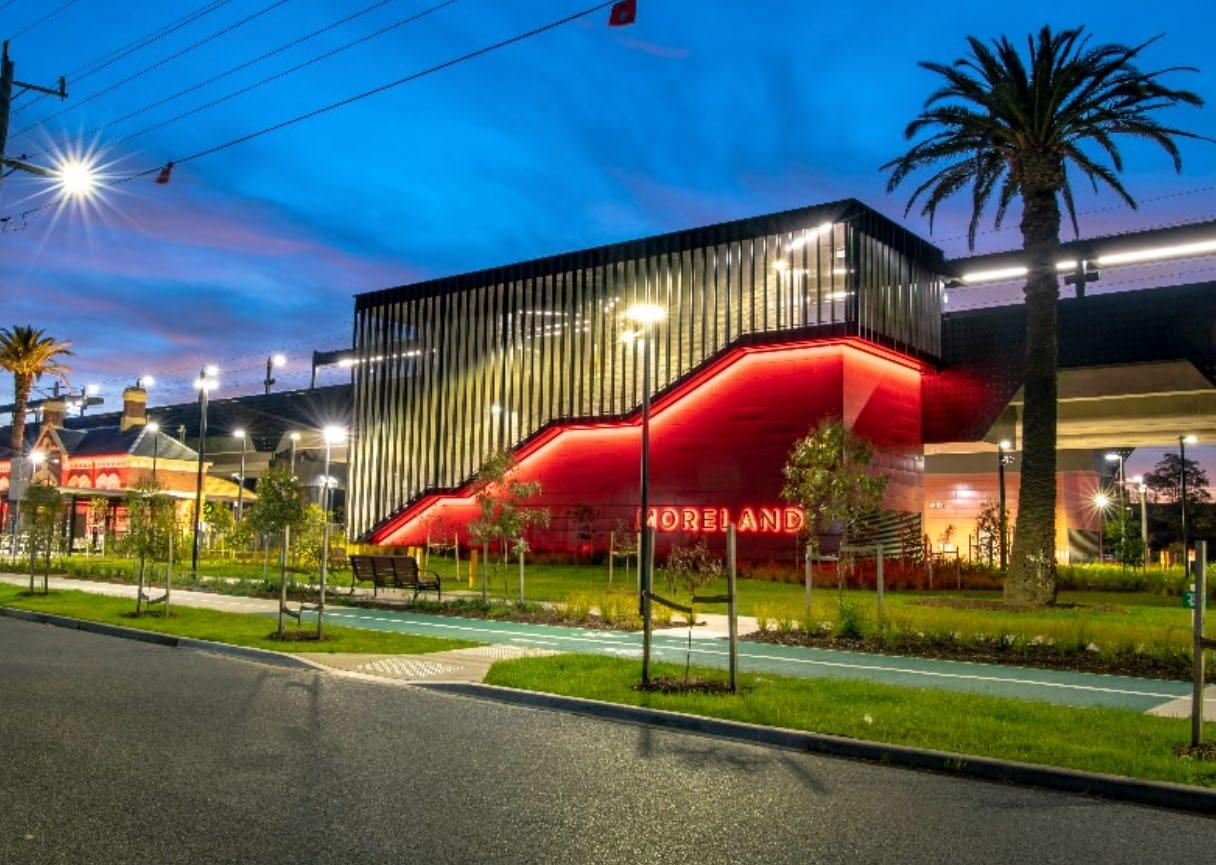
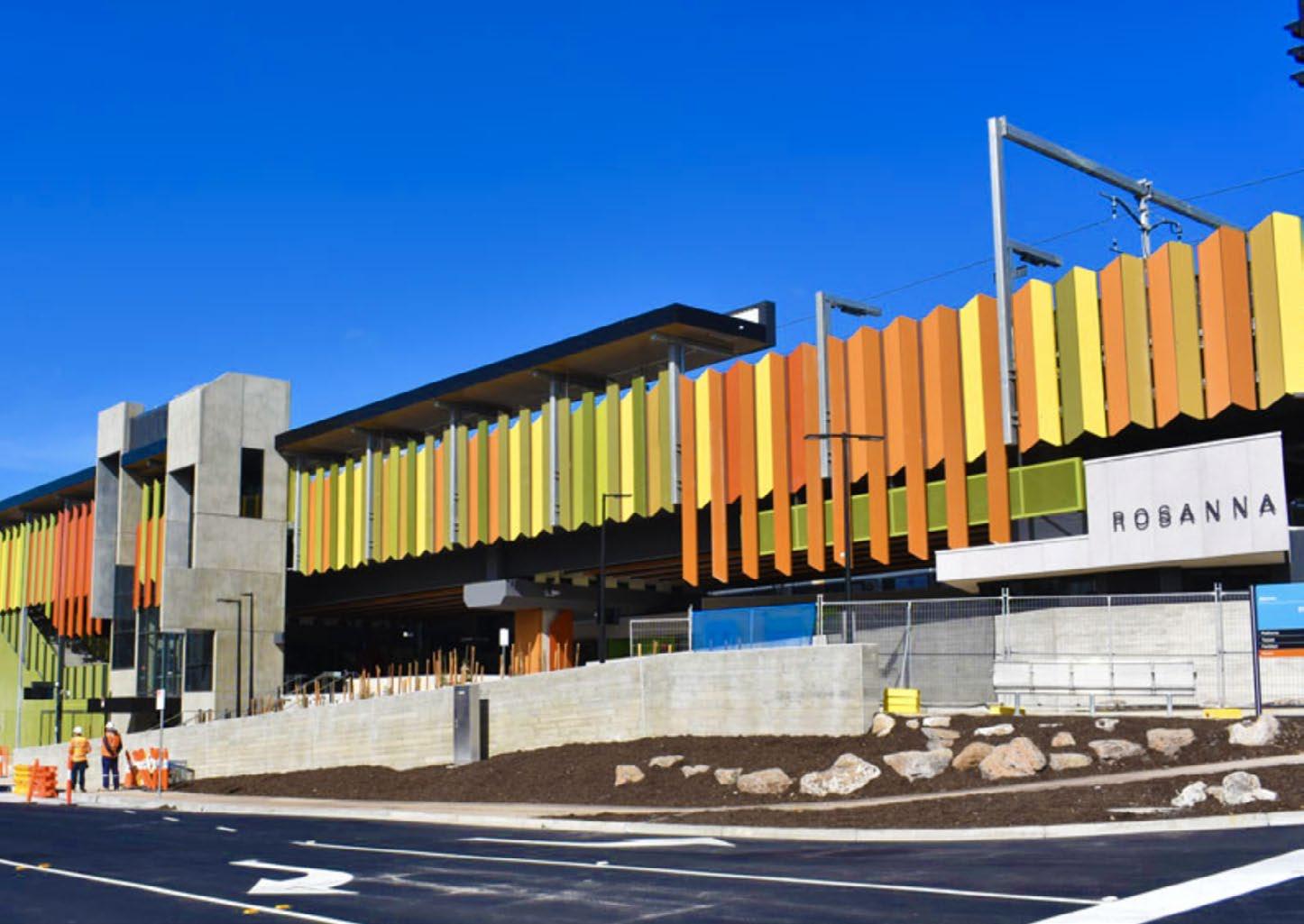
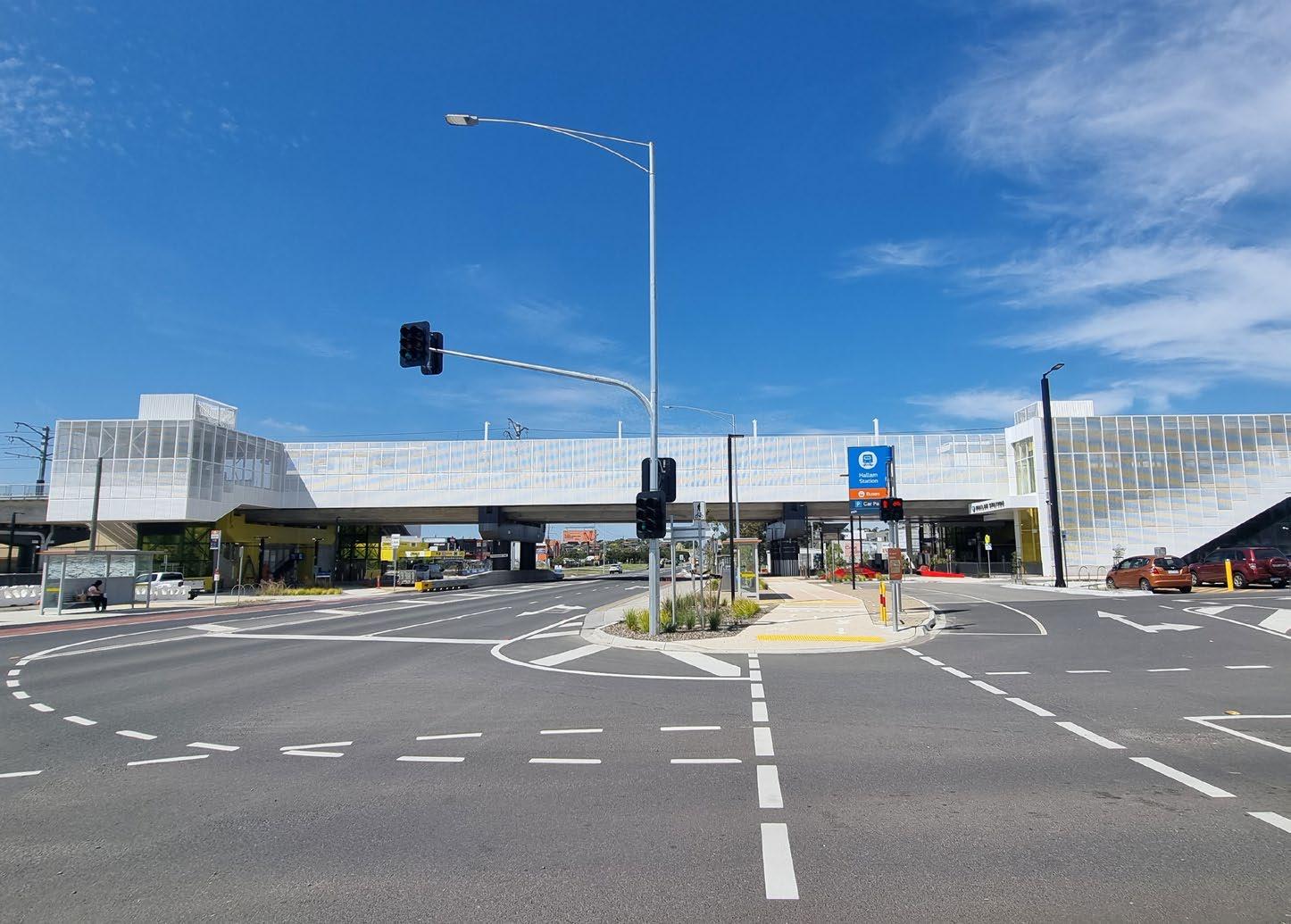
| STEEL AUSTRALIA | WINTER 2023 27
“ We maintain detailed quality records that demonstrate conformance and traceability to its origin. Inspection and test plans are established and verify that all aspects of specification criteria are met. For further quality assurance, our clients also receive substantial documentation in the form of a manufacturers data report, verifying that all aspects of their specification are met."
IMAGES
CLICK HERETO LEARN MORE SUTCLIFFE ENGINEERING AND THEIR SERVICES AND CAPABILITIES >>>
Top: Moreland train station.
Middle: Rosanna train station.
I NDUSTRY INSIGHTS
Bottom: Hallam train station.
RUD AUSTRALIA: TRADITION IN DYNAMIC INNOVATION
With a rich history spanning 150 years, RUD Australia is a leading provider of specialist solutions for chain technology and materials handling, offering high-quality products and services to diverse sectors such as mining, utilities, engineering and defence. Their in-house capabilities and deep understanding of customer needs enable them to deliver innovative solutions tailored to each project. From their manufacturing and engineering facility in Brisbane, RUD Australia produces a wide range of products, including heavy vehicle hoists, conveyors, and lifting and lashing systems.
RUD Australia provides specialist solutions for materials handling, delivering high-quality products to mining, utilities, engineering, and defence clients throughout Australia and New Zealand. Leveraging broad technical expertise across a wide range of sectors and the company’s one-stop-shop capabilities, the RUD team manage the entire design and fabrication process in-house with.
But what enables RUD to develop innovative solutions is their deep understanding of the customer and their needs – adopting a whole-oforganisation approach to ensuring the best products for their clients.
According to RUD’s managing director,
Peter Nuttall, “We understand the customer and their needs. Every company says this, but we actually mean it. We’ve been an innovator and trail blazer for hundreds of years.”
150 years of experience
RUD was established by the Rieger family in Germany back in 1875. It was originally founded as a blacksmith, with a focus on metal chain making. The Rieger family still leads the international RUD Group, which now boasts over 2,000 employees, 500 international patents, and products found in more than 140 countries.
In 1984, Peter Nuttall Senior established the company’s Australian subsidiary, following several years as the local
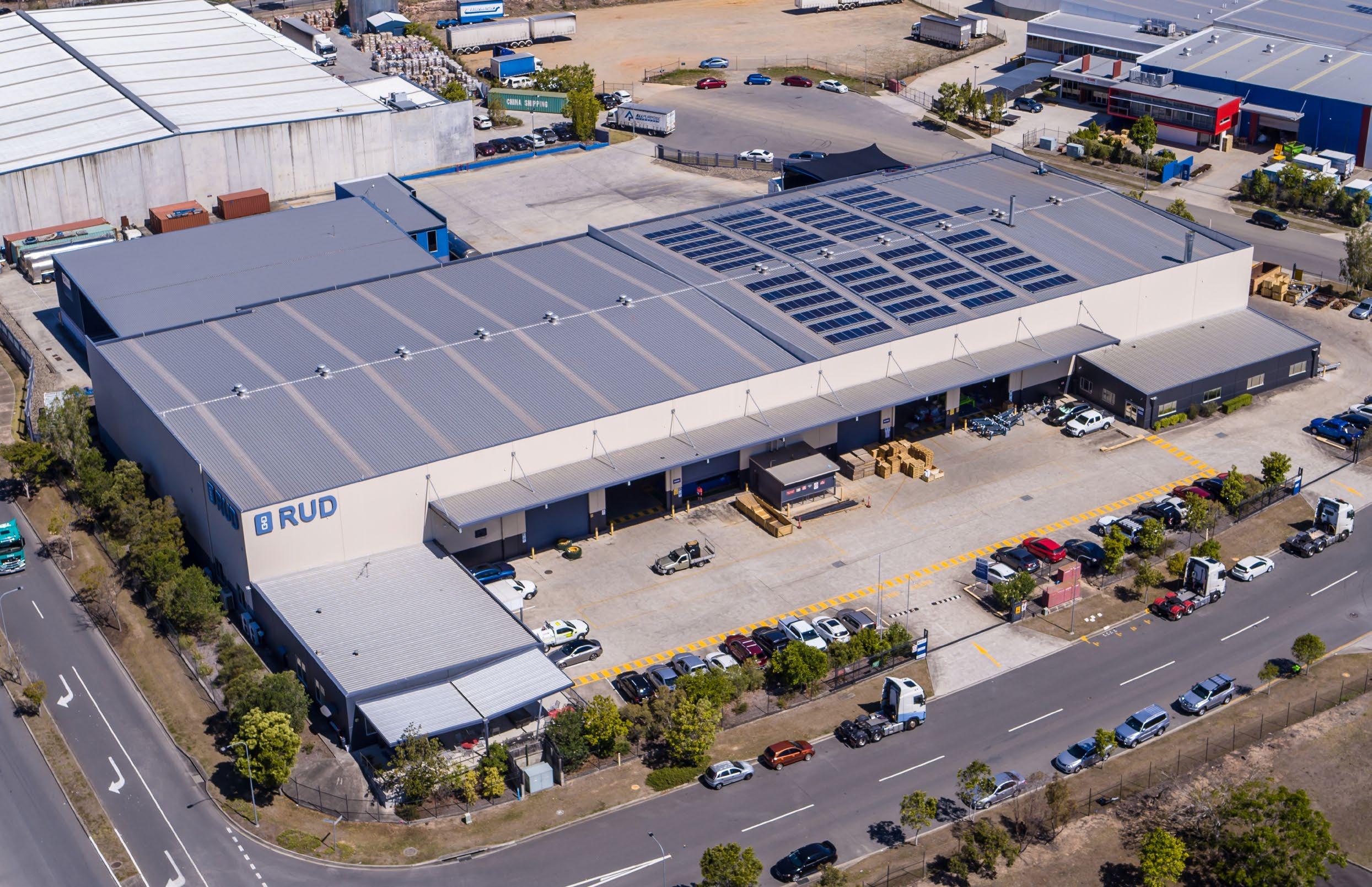
representative of RUD’s tyre protection chain business. Fast forward almost 40 years and with Peter Nuttall (the current managing director), RUD Australia has grown exponentially – with a team of 60 highly-skilled specialists and offices across all major Australian capital cities and New Zealand.
Global solutions made in Australia
Today RUD only has a minor stakeholder share in RUD Australia, giving the local business the freedom to operate fully independently – while harnessing the scale and resources of a global organisation.
“We have all the products that RUD Germany offers: the lifting and lashing products required when using cranes or
hoists; conveyors, which are mostly B2B heavy movement of materials haulage in industry like quarries, cement and mining; and tyre protection chains that give tyres a longer life in challenging environments like mines and quarries.”
“We also manufacture Endurequip— Australia’s heavy vehicle and truck hoist system. It is only used by trucks and buses over 7.5 tonnes.”
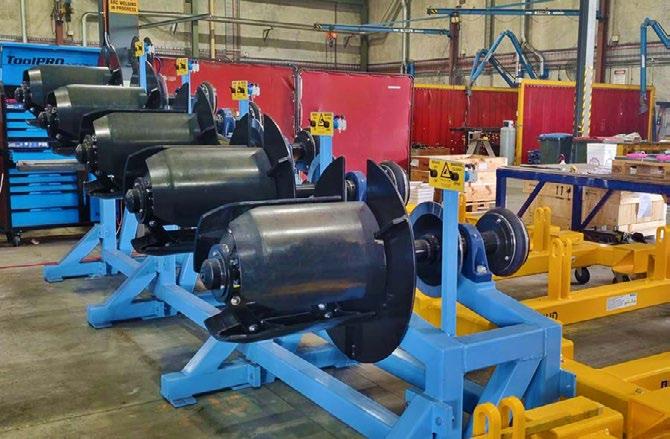
“To tie everything together, we also offer engineering expertise. So, if someone is building a plant for a particular application, we can design, engineer and manufacture bespoke solutions,” Peter said.
Many of RUD's products are manufactured locally in RUD’s worldleading manufacturing and engineering facility – a 6,000m2 workshop in Brisbane. RUD has the capability to test fabricated goods and lifting devices in-house, with two 200 tonne test beds and a recently-commissioned 500-tonne test bed. This enables the team to assess their final products, ensuring
quality and structural strength that exceed industry standards. With a robotic welder and laser scanning capabilities delivering greater accuracy of design, RUD is able to reverse engineer solutions to suit client specifications. And in addition to market-leading products, the team also offers engineering expertise, designing and manufacturing bespoke solutions tailored to the needs of each project.
Just one of these market-leading products is their five station uncoiler, which is ideal for roll forming companies. The five station uncoiler optimises the use of space around the roll former, helps reduce manual handling and increases safety and efficiency in the workplace. It can be used to perform multiple runs of different colours through the roll former to maximise machine uptime.
A trusted partner for infrastructure projects
RUD Australia is able to work with clients across a wide range of B2B sectors, including BHP, Wagners,
Endurequip heavy vehicle hoists
RUD Australia is the trusted manufacturer of Endurequip heavy vehicle and truck hoist systems, used by trucks and buses over 7.5 tonnes. The Portalift is Endurequip’s highly capable, highly reliable, heavy vehicle hoist, which is suitable for use with a range of different vehicles.
Designed to make heavy vehicle maintenance safe and convenient, the Portalift is the go-to for Australian transport companies, logistics providers, military divisions, and other organisations that need to maintain and

service heavy duty vehicles.
The Portalift heavy vehicle and truck hoists use a unique continuous RUD chain drive system that can safely work with weights up to 60 tonnes. This design minimises the need for electrical parts, reducing maintenance costs.

The lifting system provides complete body access, with mobile controls allowing operation away from the lifting zone for increased safety. The system is also water resistant and dustproof, enabling regular cleaning
of the fleet without damage. As a robust and portable solution suitable for field deployment, Endurequip is the only vehicle hoist trusted by the Australian Defence Force – and has been used in operations in East Timor and Iraq, as well as across Australia and New Zealand.
To complement the Portalift hoist, RUD Australia also offers vehicle ramps which reduce vehicle turnaround time in the workshop, and a wide range of accessories such as trailer adaptors and vehicle stands.
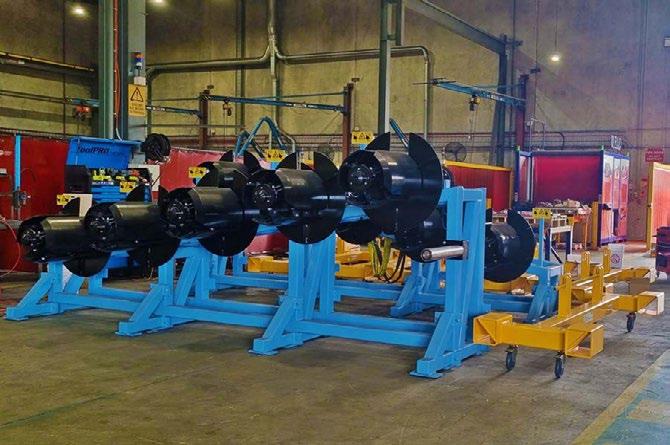
| STEEL AUSTRALIA | WINTER 2023 29
I NDUSTRY INSIGHTS
RUD's five station uncoiler.
WestConnex in New South Wales, the Australian Defence Force and BlueScope.
“The industries that we serve include mining, quarries, bulk handling, fertiliser, and anything with lifting, like bridges, girders or lifting materials inside a workshop or factory,” Peter said.
One major project was the Pacific Highway Upgrade on Exit 41. This project involved the erection of a two span bridge, consisting of seven girders per span for a total of 14 girders, each weighing 85 tonnes.
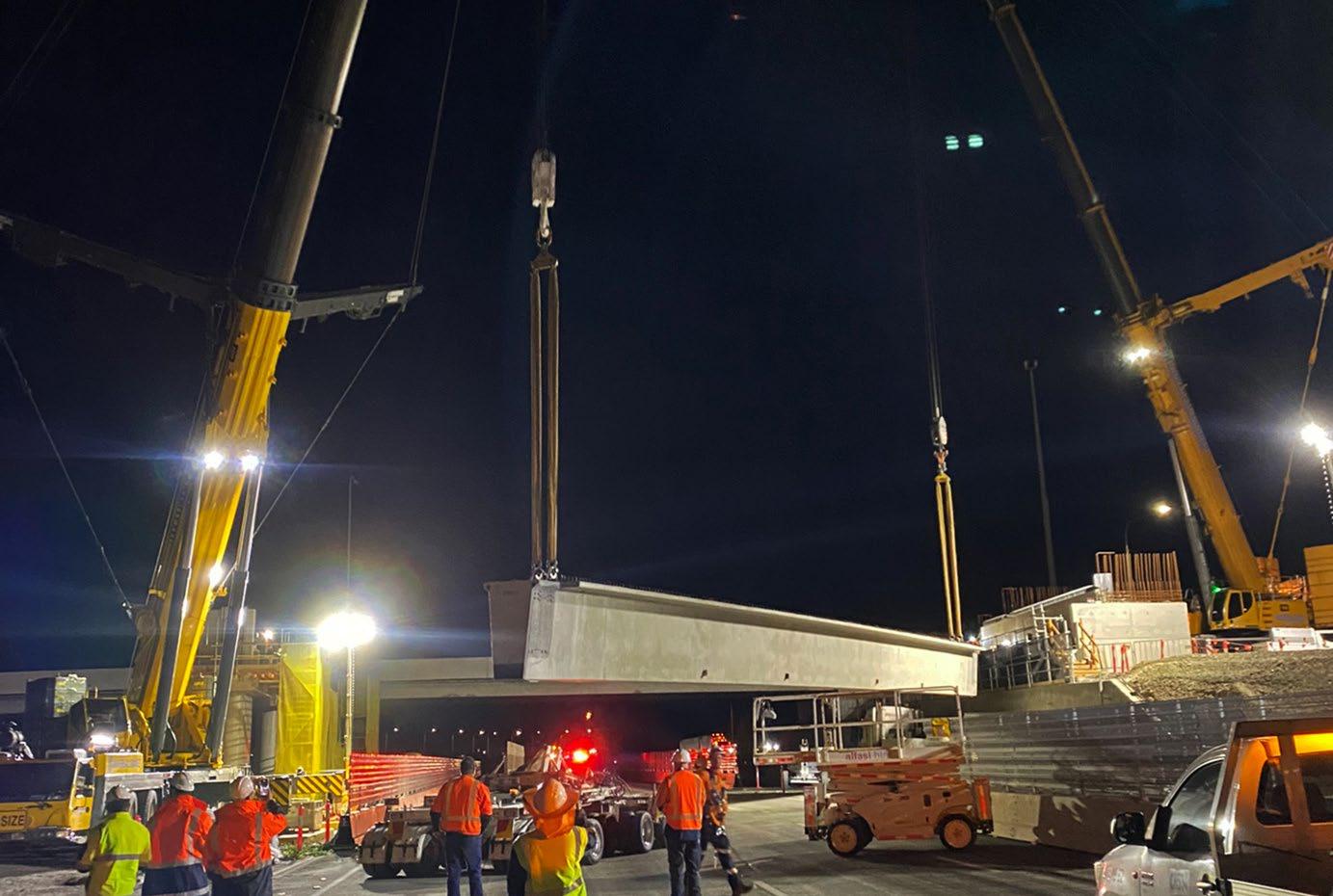
The crane used in the project was located in the median strip between the northbound and southbound pavements of Pacific Highway, requiring closure of the highway for four nights to ensure safe installation. RUD Australia supplied the hoops and lifting design which was crucial for the safe lifting of the girders.
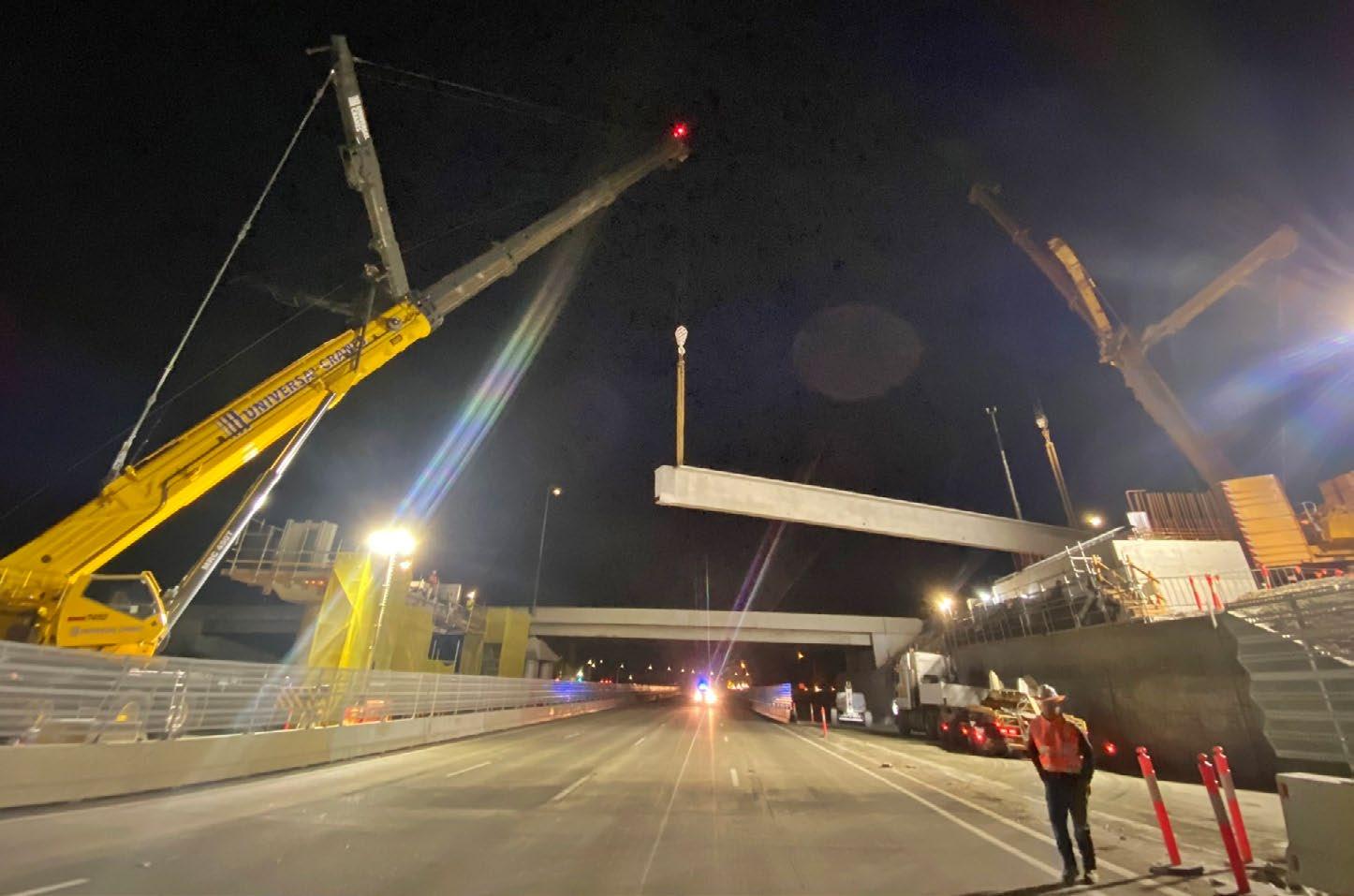
RUD/Philipp lifting hoops have wirerope bonded around a concrete core, so they can be used safely for high-load capacities. The hoops can be installed with the needs of recess formers, and connection is simple with a shackle and wire protection pulley or directly to the hook in smaller hoop sizes.
RUD Australia was also engaged in the construction of a new metal recycling plant in Perth, when a high-quality conveyor system was identified as being critical to the plant’s success. Metering and controlled flow were essential features needed in the system, allowing a controlled feed to an inclined belt.
After winning a tender for the design and delivery of the new system, RUD Australia devised a customised apron feeder conveyor system that would ensure continuous, reliable operation to maximise productivity and output.
Operable at various speeds, the conveyor system enabled the transfer of material in horizontal and inclined directions in a single process, with the ability to reverse objects out if needed.
The new conveyor system has proven to be an outstanding solution to ensure productivity in the recycling plant – with a longer lifespan and lower maintenance requirements and costs than the previous system.
And RUD’s role doesn’t end with installation: their dedicated specialists continue to provide ongoing support, delivering and refining the system to ensure the project’s success into the future.
Setting a benchmark for quality
Peter attributes RUD’s success – both locally and globally – to the depth of expertise they have in the products they manufacture and bring to market. The standards set at RUD’s global headquarters in Germany become the standard across much of the world, driving the industry forward as a whole.
“We succeed on the back of the expertise that we have in the products we manufacture and bring to the market. We are experts in the market. We set standards in Germany that become the standard for the entire industry. We were one of the first companies to use grade 80, then grade 100, and
then grade 120. Some companies in China are still using grade 80. All our products come from Germany, so they are subject to very stringent quality checking. The expertise and innovation in our products is second to none,” Peter said.
What’s more, RUD has established a reputation as a quality Australian product, with Endurequip hoists manufactured from Australian steel and stamped with the Australian-made logo. Peter added, “People know that when they purchase something from RUD, we’ve used Australian expertise to turn Australian steel into a quality product.”
CLICK HERE TO LEARN MORE RUD AUSTRALIA AND THEIR PRODUCTS AND SERVICES >>>
Pacific Highway Upgrade on Exit 41.
Project profile: Alfred Street pump lifting solution
RUD recently solved a pump removal problem for Logan City Council's largest wastewater pump station. The Alfred Street SPS69 wastewater pump station, situated in southeast Queensland, services 200,000 people.
RUD’s engineering team worked closely with the Logan Water and Infrastructure Alliance (LoganWIA), a body established to support Logan City Council’s delivery of water and wastewater infrastructure.
Focused on two key outcomes, RUD developed a lifting solution that: simplified the pump removal process; and ensured maintenance staff no longer needed to venture inside the wet wells, increasing safety.
The challenge
Previously, the SPS69 pumps at Alfred Street were removed for maintenance using two existing bridge cranes (an existing 10 tonne bridge crane and a smaller 2 tonne bridge crane). This configuration was a major issue for Logan City Council’s operations and maintenance staff, as it required personnel to be lowered into the wet well via a ‘man-cage’ using the 2 tonne crane.
LoganWIA understood this method of removal wasn’t a practical or safe long-term maintenance and removal procedure and sought a solution from a lifting and material handling specialists. LoganWIA selected RUD on this project to design and supply a lifting solution that could overcome the existing constraints and hazards.
Upon studying the existing procedures RUD established that:
• The SPS69 pumps weigh 5 tonnes each.
• Each pump sits inside 22m deep wet wells.
• Employees attached 10 tonne crane hooks to the pumps.
When developing the solution for LoganWIA, it was important for RUD engineers to approach a lifting solution with the client in mind. For LoganWIA’s unique access issues, RUD focused on two aims:
• Making the job safer.
• Overcoming the site constraints for efficient removal and servicing.
With these outcomes in mind, RUD identified the following challenges:
• Restricted headroom required a compact design solution.
• This eliminated proprietary systems due to unsuitable lifting bail arrangements.
RUD determined that the station needed new pump lifting points and devices for operating under wastewater and agreed on a comprehensive plan of action with LoganWIA before commencement.
The solution
RUD liaised closely with LoganWIA to devise:
• A 6 tonne WLL lift point for the existing pump.
• A 6 tonne WLL lifting device that would operate when submerged.
• A lifting device with a self-latching hook and a remote hook release mechanism.
• A lifting device that features an
axial adjustment mechanism to enable perfectly guided lifting and lowering of the pump. The counter weighted design of the lifting device provides a level lift when the lifting device is empty.
A collaborative approach to safety
With a focus on safety and efficiency, a staged approach to solution testing and commissioning was required prior to the lifting devices being passed for use. This involved comprehensive in-house trial procedures including:
• Testing the device and lifting points to twice the WLL under the AS 4991 2004 requirements.
• Testing the equipment on site to ensure it functioned properly.
• Involving key LoganWIA stakeholders, project partners and others relevant personnel.
The outcomes
The designs for LoganWIA:
• Improved operator safety significantly by eliminating confined space entry requirements.
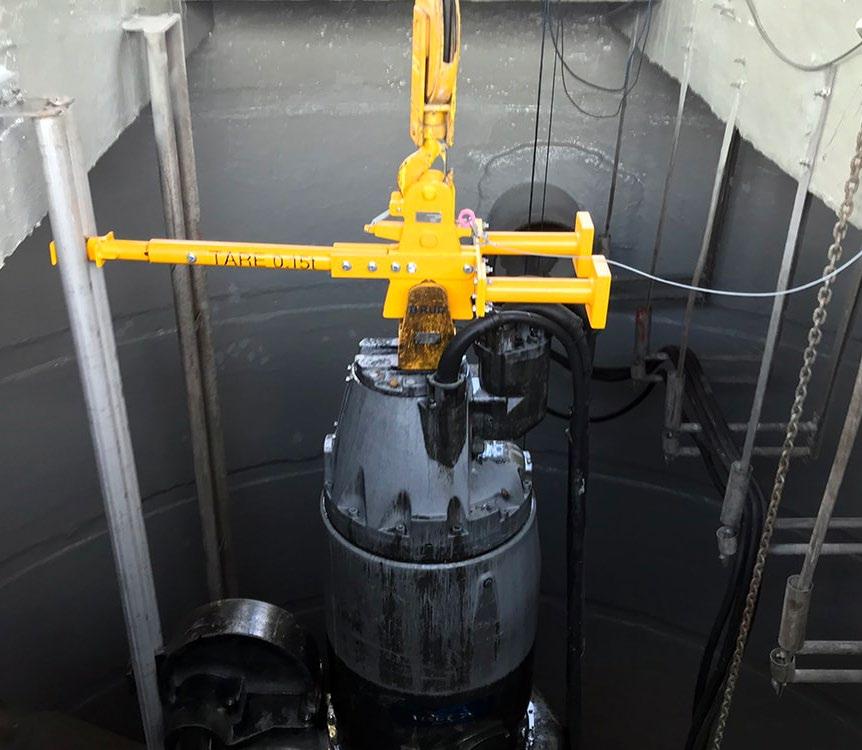
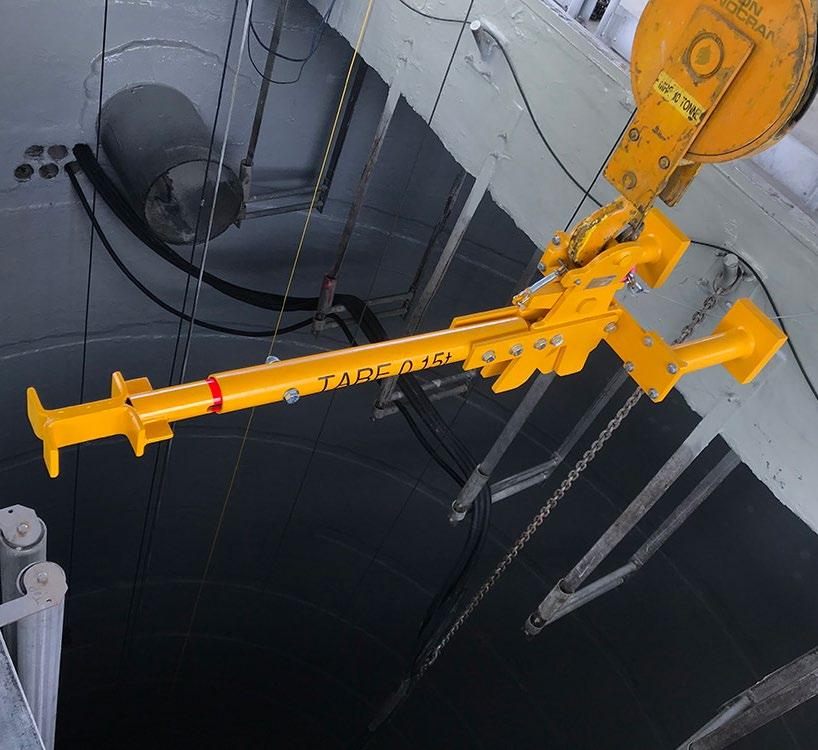
• Ensured the device retrieves pumps submerged under wastewater, if necessary.
• Proved there is a lifting solution that can be replicated and implemented at other pump stations and deep well situations.
• Offered a compact lifting system for low-headroom scenarios.
RUD liaised closely with all key stakeholders throughout this project to ensure a clear alignment of goals and an in-depth understanding of the safety and maintenance challenges. Then, in collaboration with the client, RUD overcame these challenges.
| STEEL AUSTRALIA | WINTER 2023 31
I NDUSTRY INSIGHTS
A S I C A R E E R C E N T R E
E x p l o r e a c a r e e r i n t h e
j o b s . s t e e l . o r g . a u
T h e A u s t r a l i a n S t e e l I n s t i t u t e ( A S I ) u n d e r s t a n d s h o w i m p o r t a n t i t i s t o a t t r a c t a n d r e t a i n g o o d p e o p l e W i t h t h i s i n m i n d , w e d e s i g n e d t h e A S I C a r e e r C e n t r e : a o n e - s t o p s h o p f o r a d v e r t i s i n g , f i n d i n g a n d p r e p a r i n g c a n d i d a t e s f o r a j o b i n t h e s t e e l i n d u s t r y
T h e A S I C a r e e r C e n t r e e n c o m p a s s e s r o l e s r i g h t t h r o u g h o u t t h e s t e e l s u p p l y c h a i n , f r o m e n g i n e e r s , d e t a i l e r s , b o i l e r m a k e r s a n d w e l d er s , t h r o u g h t o q u a l i t y m a n a g e m e n t , m a r k e t i n g a n d s u s t a i n a b i l i t y … t h e l i s t i s e n d l e s s
CAREERS RESOURCES
A S I h a s p u t t o g e t h e r a r a n g e o f r e s o u r c e s t h a t w i l l h e l p b u s i n e s s e s a n d i n d i v i d u a l s i n b r i d g i n g t h e g a p t o m a t c h t h e r i g h t p e o p l e t o t h e r i g h t j o b i n t h e s t e e l i n d u s t r y O u r r e s o u r c e s c a n h e l p i n d i v i d u a l s m a k e i n f o r m e d c a r e e r d e c i s i o n s a n d i n c r e a s e t h e i r m a r k e t a b i l i t y , w h i l e e n a b l i n g c o m p a n i e s t o d e v e l o p t h e i r w o r k f o r c e , o p t i m i s e r e c r u i t m e n t s t r a t e g i e s , a n d b o o s t p r o d u c t i v i t y O u r r e s o u r c e s i n c l u d e a s t e e l i n d u s t r y i n d u c t i o n c o u r s e , i n f o r m a t i o n o n t o p i c s l i k e b u s i n e s s v i s a s a n d c a r e e r s i n f a b r i c a t i o n , a n d a u n i v e r s i t y s u p p o r t p a c k
GET IN TOUCH
JOBS BOARD
ADVERTISE A VACANCY
O u r J o b s B o a r d p r o v i d e s a n u n m a t c h e d o p p o r t u n i t y f o r c o m p a n i e s t h a t w a n t t o r e a c h s k i l l e d , s p e c i a l i s e d c a n d i d a t e s w h o a r e p a s s i o n a t e a b o u t t h e s t e e l i n d u s t r y i t c a n e n h a n c e t h e q u a l i t y a n d e f f i c i e n c y o f y o u r h i r i n g p r o c e s s E n h a n c e d a n d P r e m i u m j o b a d v e r t s a r e h i g h l i g h t e d o n t h e h o m e p a g e o f t h e A S I w e bs i t e a n d e m a i l e d t o a l l 5 , 0 0 0 + A S I m e m b e r s P r e m i u m j o b a d v e r t s a r e a l s o p o s t e d o n o u r s o c i a l m e d i a a c c o u n t s a n d e m a i l e d t o t h e b r o a d e r A S I c o m m u n i t y ( 2 0 , 0 0 0 + c o n t a c t s ) .
FIND YOUR NEXT ROLE
A u s t r a l i a n s t e e l s u p p l y c h a i n VISIT
N o t o n l y c a n y o u b r o w s e t h e l a t e s t v a c a n c i e s r i g h t a c r o s s t h e A u s t r a l i a n s t e e l i n d u s t r y , y o u c a n a c c e s s a c a r e e r p l a n n i n g p o r t a l c o m p l e t e w i t h t i p s f o r i n t e r v i e w s , w r i t i n g r e s u m e s a n d c o v e r l e t t e r s , a n d e v e n a c c e s s c o a c h i n g
CONSIDER A CAREER IN STEEL
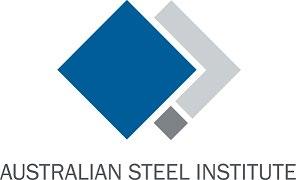
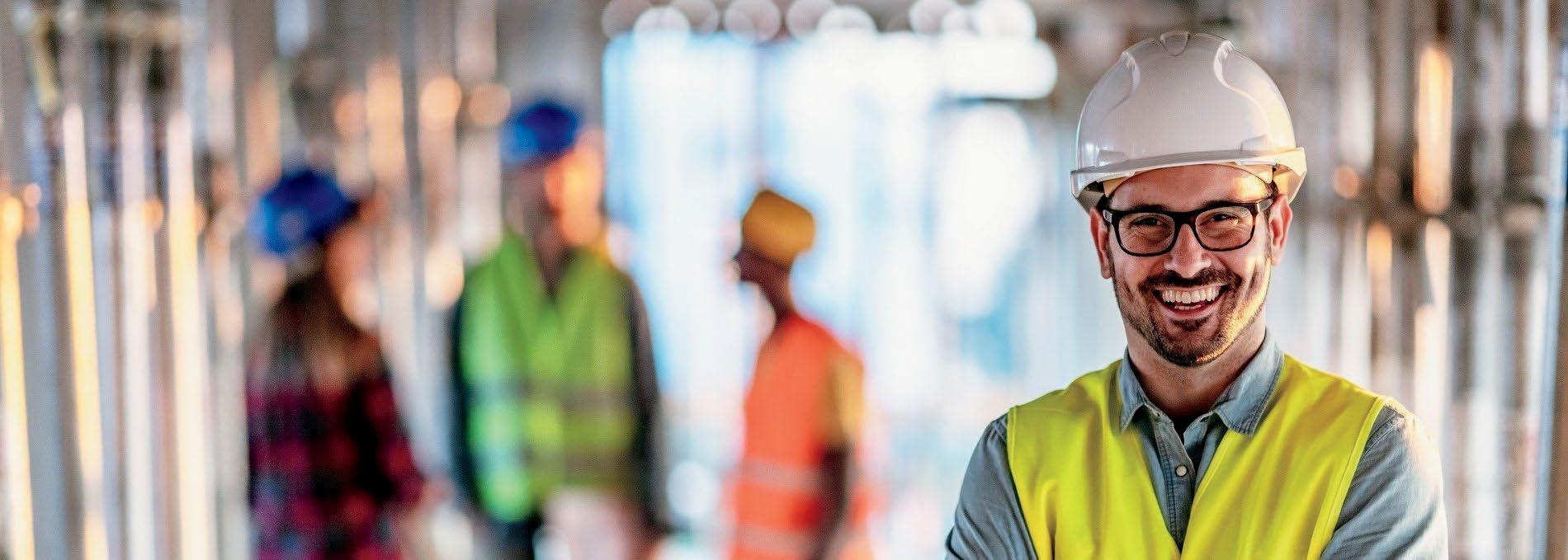

steel org au | membership@steel org au | 02 8748 0188
THE ASI JOBS BOARD
FEATURE: INNOVATION & COLLABORATION
Innovation and collaboration in the steel industry are endemic, driven by continual striving for cost-effective, time-efficient and risk-minimised solutions in a nationally and internationally competitive market. Every steel structure is ultimately a bespoke design, responding to external environmental influences and complex user requirements. Therefore, every solution has the opportunity for innovation to provide differentiation in a crowded marketplace—collaboration with likeminded partners makes this innovation easier.
Innovation and collaboration are vital ingredients for the success of the Australian steel industry, steering it towards sustainable growth and international competitiveness.
Innovation is paramount as it fuels the development of advanced technologies and processes, driving efficiencies in steel production, and contributing to the creation of high-quality, durable, and versatile steel products. This evolution is essential in the face of rising global demands for more sustainable and cost-effective solutions, with innovations in recycling and energy efficient production methods playing a crucial role.
For example, digital construction processes have impacted significantly and positively on the complete supply chain for delivery of a finished steelwork structure, resulting in improved speed, safety, constructability and quality.

Innovative materials are also impacting the industry. High-strength quenched and tempered steels offer design engineers a number of advantages that can be used as solutions to everyday and difficult or unusual engineering problems.
Collaboration, on the other hand, serves as the backbone for building synergistic relationships amongst various stakeholders, including steel producers, researchers, government entities, and end-users. It fosters an environment conducive to knowledge sharing, problem-solving, and harnessing diverse capabilities to achieve common objectives. Through collaboration, the industry can co-develop standards, lobby for supportive policies, engage in joint
research and development activities, and collectively respond to market dynamics and global trends.
Many of the Australian Steel Institute's members have longrecognised the value of ingenuity and partnership.
Focused on innovation and productivity, No 1 Roofing invests in the latest roofing solutions and technologies. Its forward-looking approach includes a focus on labour productivity and condensation management to meet evolving industry standards (see page 34).
The innovative and collaborative spirit of structural steel specialists, Belmore Engineering, are highlighted by their Flash Starts Program, a partnership with the Regional Industry Education Program to nurture future industry talent (see page 38).
The InQuik bridge system, an innovative modular construction methodology, simplifies bridge building using a steel reinforcing cage and permanent steel formwork. Collaboration with local firms like SMEC, BlueScope, InfraBuild and Nepean Engineering and Innovation has helped ensure InQuik's success (see page 42).
By intertwining innovation and collaboration, the Australian steel industry can solidify its position on the global stage, align with sustainability objectives, and better respond to the ever-changing needs of its customers. In essence, these twin pillars support not just survival, but also the thriving and evolution of the industry amidst a complex, competitive landscape.
| STEEL AUSTRALIA | WINTER 2023 33
FEATURE: INNOVATION & COLLABORATION
A STORY OF GROWTH & INNOVATION: THE CUSTOMER CENTRIC JOURNEY OF NO 1 ROOFING
No 1 Roofing, a family-run supplier of roofing products based in Sydney, Australia, has rapidly grown to become a leader in the industry. Founded by the Scali family, the business has expanded to 10 locations in just two decades. As a one-stop shop for roofing needs, it alleviates logistical concerns for roofers and builders alike. The company prides itself on customer service, supporting everyone involved in the construction cycle. Focused on innovation and productivity, it invests in the latest roofing solutions and technologies. Its forward-looking approach includes a focus on labour productivity and condensation management to meet evolving industry standards.
Since opening their first roofing and building supplies store in Sydney around twenty years ago, the Scali family has seen No 1 Roofing go from strength to strength. Now a leading wholesale supplier of roofing products, with the largest geographic footprint of any roofing business in Sydney, No 1 Roofing remains true to its core mission: creating a customer-focused business with an emphasis on serving the needs of roofers.

An immigrant success story
As a young migrant from Calabria working as a roofer in suburban Sydney, Tony Scali saw the need for a onestop supply shop – where a roofer could turn up or send their employees or subcontractors, without worrying whether their materials would be delivered on time or in full.
Matt Hennessy, general manager of No 1 Roofing & Building Supplies said, “When most people think of roofing, they assume that the only materials required are the COLORBOND® steel sheets, but there is so much more that is needed. Often there will be 15 to 20 different products required from 10 different suppliers."
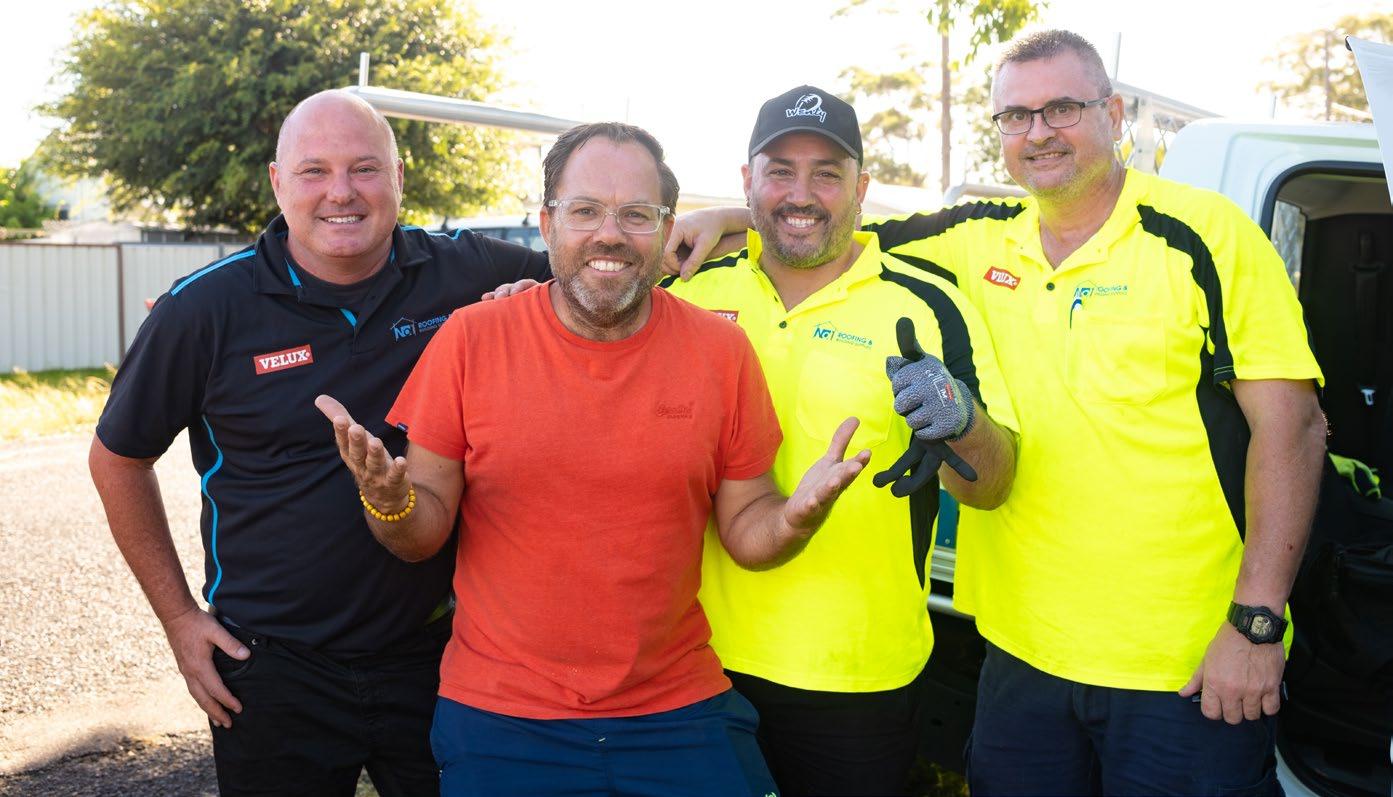
"Managing the logistics of this, and ensuring everything arrives on-site, in time is a huge undertaking. There can be lots of errors if orders aren’t handled correctly, which can have a huge impact on the productivity of a roofing business.”

Fast forward to 2002 when Tony’s son David came to work with his father – and together they came up with the concept of No 1 Roofing. Starting in Sydney's Northern Beaches where Tony lived and worked, the company grew slowly at first, adding a few branches around Sydney. But from 2015, that growth has accelerated, with David Scali taking over the reins as director last year.
“We’ve added six branches and now have 10 locations,” Matt said. “We’re at a stage now where we’re also doing a lot more of our own manufacturing. We still buy in a lot of products from our great suppliers, but we’re backward integrating into manufacturing so that we can really make sure we can support our customer’s time line demands.”
Taking a people-focused approach
According to Matt, it is No 1 Roofing’s exceptional customer service that sets it apart – not only for roofers and builders but stakeholders across the construction cycle, such as architects, specifiers, and designers. This allows the company to see the project right through from concept to delivery.
“We have dedicated people who help architects ensure that they can deliver a great aesthetic outcome that is also functional and practical,” Matt said. “We work very closely with thousands of customers to make sure that the materials delivered are in line with the requirements of the homeowner or builder, as well as the specifications of the architect.”
No 1 Roofing is built on the ethos that a business can only be as successful as its customers. In line with this principle, the team take a long-term approach that puts the customer at the centre of everything they do – with satisfied clients returning time and again.
Matt said, “We want our customers to grow, and we get a lot of satisfaction helping a small customer grow their business. We will take risks to help them grow, like extending credit and funding beyond what we may be comfortable doing at times, but we’ll take risks and back customers.
Dedicated support across NSW
As roofers are nomadic, they’re required to travel all across Sydney and New South Wales. Having the largest
geographic footprint in Sydney, and access to facilities statewide, allows No.1 Roofing to ensure local support for its customers.
“In Sydney, the roads and traffic are hard to navigate at the best of times,” Matt said. “That’s why our customers can deal with their local branch to place orders and get technical advice, and then pick up goods from any of our locations, all managed in a completely seamless way.”
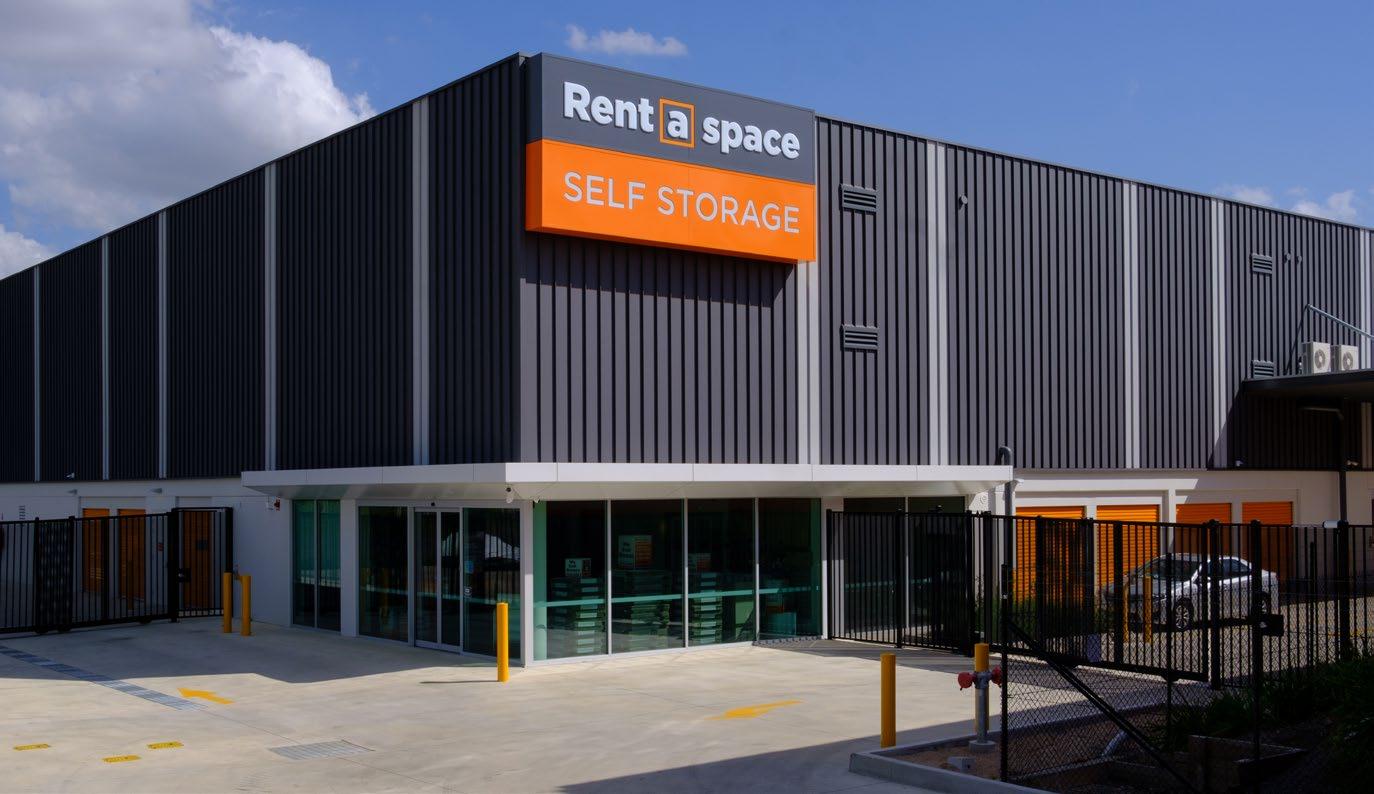
Because roofing is a complex job, mistakes and miscalculations are easily made – and can result in damaged materials on-site. Flashings are the last part of any job, so any delays in installing them will also push back invoicing and payment. This is why No 1 Roofing manufactures flashings at eight of their 10 locations, and can often supply them with a turnaround of just an hour or two.
Matt said, “Often roofers need flashings (or other components) urgently. Because of our geographic spread across Sydney, and our ability to manufacture, the wait is never long. Customers can phone us, place their order, and the product is ready for them in no time.”
| STEEL AUSTRALIA | WINTER 2023 35
IMAGES
Above (Top) Rent A Space self storage facility, for which No 1 Roofing & Building supplied Snap-Line45® Panelling to cover the whole of the facade.
Above (Bottom) Brickworks plant.
Left (Top) Celebrity designer, James Treble, with members of the No 1 Roofing team. Keep an eye out for his Channel 9 TV series— James Bought a House—airing later this year which features No 1 Roofing's SnapLine® and S5 system.
FEATURE: INNOVATION & COLLABORATION
Left (Bottom) Snap-Line 45® profile for roofing and walling applications, featured in the new facility for the West Tigers NRL team.
 Image Custom tapered Standing Seam in the Matt Monument profile adds a modern touch to the Storey Park Community Hall in Hornsby.
Above (Left) Snaplock profile roofing gives this classic weatherboard home in Balgowlah a chic avant-garde look.
Above (Right)
A residential project in West Pymble, for which No 1 Roofing supplied SnapLine45® Matt Finish Night Sky®
Image Custom tapered Standing Seam in the Matt Monument profile adds a modern touch to the Storey Park Community Hall in Hornsby.
Above (Left) Snaplock profile roofing gives this classic weatherboard home in Balgowlah a chic avant-garde look.
Above (Right)
A residential project in West Pymble, for which No 1 Roofing supplied SnapLine45® Matt Finish Night Sky®
“We work very closely with thousands of customers to make sure that the materials delivered are in line with the requirements of the homeowner or builder, as well as the specifications of the architect."
And when it comes to delivering specialist support, No 1 Roofing’s team have extensive technical expertise and knowledge of roofing processes and products. Many are long-term employees who have worked in the business since its very beginning.
“We’ve been around for 23 years now, and some of our employees that have been with us for that entire journey,” Matt said. “We’ve got somewhere between 800 and 900 years of roofing industry experience in the business."
A passion for innovation
Thanks to strong partnerships with major roofing product suppliers, No 1 Roofing is able to provide almost any product that a customer may require. And they’re always on the hunt for the latest roofing solutions, attending a major roofing expo overseas every year to look for innovations they can bring to their customers.
“More and more, as we develop our own manufacturing capability, we are offering some really innovative products,” Matt said. “We’re also focused on manufacturing innovation and have invested heavily in this.”
The company is one of just a few with a fully automated flashing line from SWI, an international leader in sheet metal machinery. This technology drives a huge amount of productivity in the business, allowing No 1 Roofing to produce more with the same amount of
people – with much higher accuracy. “This type of advanced machinery has helped us continue to employ more people,” Matt said. “We’re constantly looking at how we can be more productive ourselves and then pass that benefit onto our customers.”
One of the company’s fastest growing, innovative products is the Snap-Line 45® profile for roofing and walling applications, featured in the façade of all the Rent A Space self-storage buildings as well as the new facility for the West Tigers NRL team.
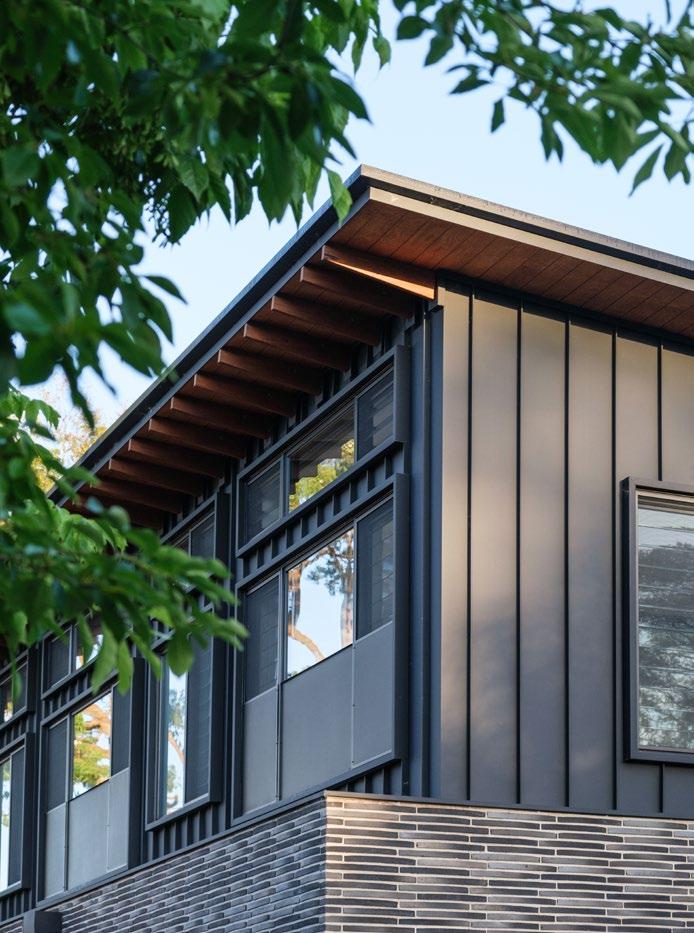
According to Matt, “It is a concealed clip fix system, which is very quick to install, and doesn’t require any postfixing, like exposed screwing or button punching. The aesthetic outcome is just exceptional. The product is very versatile in application and can be used in high-end residential projects, right through to commercial projects.”
No 1 Roofing is one of only three distributors in Australia for an innovative roof mounting system called S-5!, which is imported from the United States. Together with the GRIPPERFIX system, the S-5! series offers solutions for attaching almost anything to a metal roof – from solar panels, HVAC units, and duct supports, to walkways, roof
safety anchor points and pipes. Made from stainless steel or aluminium and boasting superior engineering strength, the S-5! clamps can be attached directly without violating the integrity of the roof or the roof manufacturer’s warranty.
Their versatility means they can even be used for working at heights as fall security and enhancing wind protection loads on vulnerable metal roofs. S-5! is so confident in the quality of the S-5! clamps that they offer a life time warranty against defects.

Ready for future opportunities
After materials, labour is the major cost item for roofers – and the greatest opportunity. For Australian steel businesses, new technology can play a valuable role in boosting productivity, from both a product and a service perspective.
Matt said, “The question is always how can we ensure our labour is more productive? That’s why we’re constantly looking for ways to improve labour productivity with innovative materials that are fast to install. What can we do differently and better so that we are an innovative industry?”
The changes to the National Construction Code offer further opportunities, particularly in the area of condensation management. No 1 Roofing is currently talking to a whole range of suppliers, both in Australia and internationally, for the best products around vapour, sarking, and underlayments.
“We’re working very closely with suppliers, particularly insulation suppliers, and looking for innovative products such as Vent-a-Roof to assist with solutions like passive ventilation. This is a big opportunity that we need to tackle, and will,” Matt said.
But for now, the company is planning to build on their recent success by doing what they do best: serving their customers well to help them grow, and bringing innovation to their customers and to the market. Matt said, “We have an insatiable desire for growth and will continue to expand at the same pace we have over the last five years.”
| STEEL AUSTRALIA | WINTER 2023 37 FEATURE: INNOVATION & COLLABORATION CLICK HERE TO LEARN MORE ABOUT NO 1 ROOFING, THEIR PRODUCTS AND CAPABILITIES >>>
“ We’re constantly looking at how we can be more productive ourselves and then pass that benefit onto our customers.”
BUILDING BEYOND BOUNDARIES: BELMORE ENGINEERING INNOVATES FOR SUCCESS
Structural steel specialists, Belmore Engineering employ innovative and collaborative strategies to navigate Australia's construction industry. Operating from Tamworth, Belmore partners with leading construction firms nationwide, demonstrating agility in managing evolving on-site situations. The company's growth, under David Green's leadership, has seen a shift from basic fabrication and fencing to customised structural steel fabrication for large-scale, high profile projects like the Western Sydney Airport and Shell House. Their innovative spirit and collaborative approach are highlighted by their Flash Starts Program, a partnership with the Regional Industry Education Program to nurture future industry talent.
Belmore Engineering is a structural steel specialist, with one of the largest steel fabrication workshop in northern New South Wales. Based in Tamworth, the business now covers all areas of New South Wales, collaborating with major construction companies on an array of structural steel projects locally, regionally, and interstate.
According to Allan Eunson, project manager, the secret to Belmore’s success is its adaptability: “We never look at challenges as roadblocks. We don’t throw up our hands in frustration. Instead, we see what we can do to help. Designs change, and situations onsite evolve. The ability to adapt sets us apart. We’re willing to go with it and do our best to make sure there is progress in the work we’re doing.”
From farm shed to workshop Having already moved out of the farm shed that was his first workshop, in 2004 company director, David Green, was again in search of a new site for the expanding business. David knew that the original Belmore company was up for sale, and was interested in their premises. Along with the site, he inherited the company name – and so Tamworth Balustrade and Fabrication became Belmore Engineering and the new company was born, with David as managing director.
Since then, Belmore Engineering has continued to expand and evolve its capabilities. Allan said, “From a basic fabrication and fencing company, we are now one of the largest structural steel fabricators in New South Wales
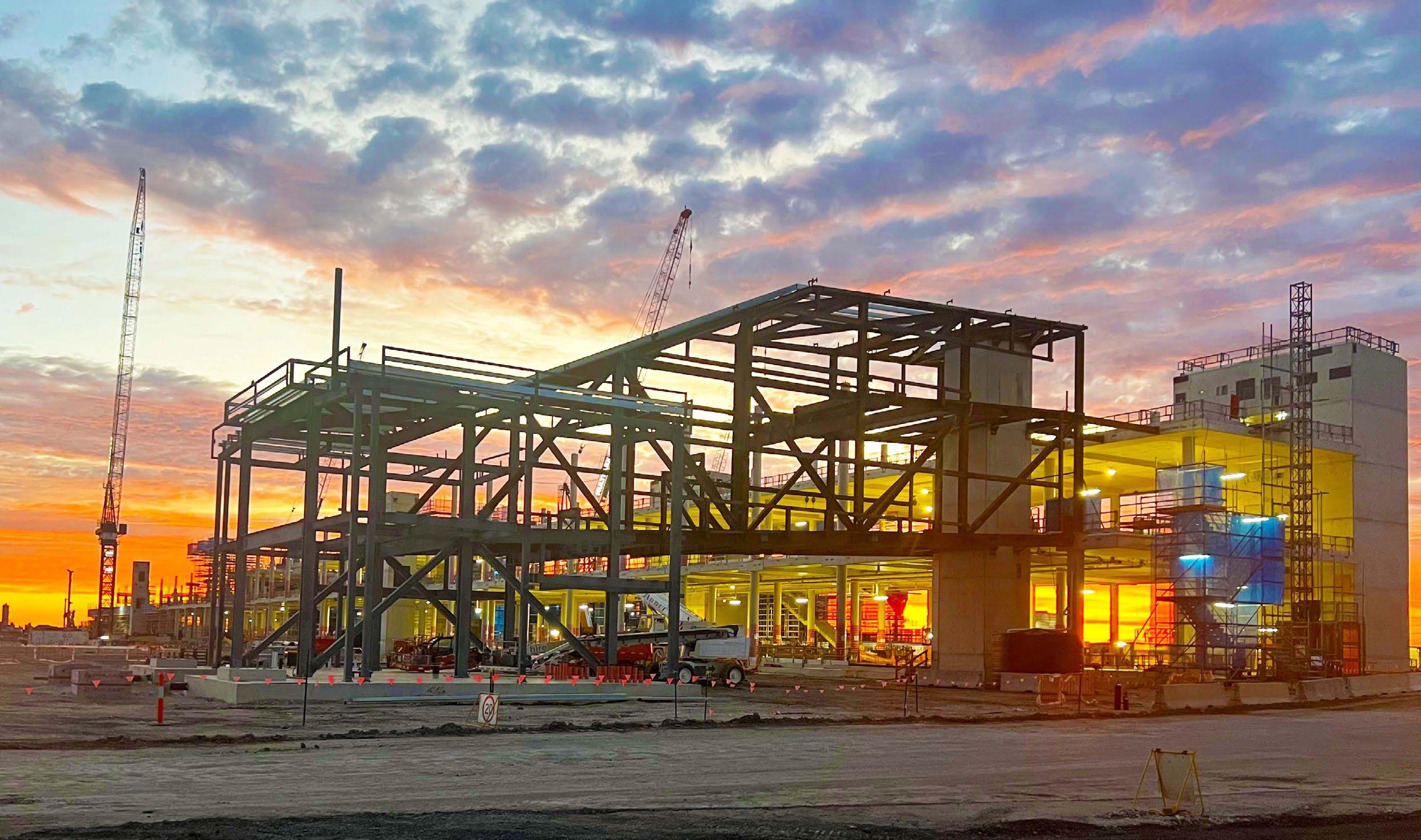
– certainly regional New South Wales. The growth was predominantly driven by David and his drive for expansion.”
Moving away from balustrade and fencing, Belmore Engineering now focuses on structural steel fabrication –working with a broad range of clients to create custom made projects, with no two the same.
“We work across just about any type of construction project, whether its health, residential, industrial, or commercial. We’ve worked on everything from shopping centres and hospitals, through to sheds for local families,” Allan said.
Over the past decade the company has pivoted to working primarily with large tier one and two construction
Western Sydney International Airport
companies, as a strategic business decision. However, they still engage in smaller projects with clients that they’ve built a long-standing relationship with over the years.
“We’re ready to get in and do what needs to be done—to work with clients and get projects finished.”
The Flash Starts Program
When the pandemic struck, Belmore Engineering suddenly found that they were struggling to find apprentices.
Emma Carrigan, administration and finance manager, said, “Throughout COVID, we didn’t have the work experience opportunities that we usually do. We were offering apprenticeships to anyone who walked in the door, whether they had an interest in fabrication or not—it was just a matter of first in best dressed. We also discovered that not all our local high schools offered metalwork
as a subject. They often had one or two woodwork classes, but not metalwork.”
So they took an innovative approach, setting up a partnership with the Regional Industry Education Program (RIEP). An initiative of the New South Wales Government, RIEP designs and delivers bespoke opportunities for employers to connect with secondary schools. Through these connections, students learn about jobs and pathways to employment. They develop new skills and employer networks, allowing them to make informed decisions about their career pathways. Employers have the opportunity to educate students about their industry and actively participate in the development of talent pipelines.
With the support of RIEP, Belmore Engineering developed the Flash Starts Program in 2022. "Our objective with the Flash Starts Program was to build up interest and passion for our industry in the next generation—not just for
PROJECT PROFILE: SHELL HOUSE
Sydney’s Shell House is a 1930s commercial palazzo-style heritage building in the heart of the CBD, formerly owned by Shell Oil Company. Taylor Thomson Whitting (TTW) and Multiplex devised a unique temporary works solution used for Brookfield Properties’ redevelopment of Shell House: an intricate bracing and propping design that enabled the building’s 400 tonne heritage clock tower to be suspended over the live construction site during restoration.
The solution also allowed bracing of the 65.5m heritage facade while Shell House was completely gutted and upgraded, including demolition of its structural system. TTW created a comprehensive support structure made from bracing, columns, and beams, with Multiplex providing numerous sequence and methodology revisions driving and refining the design.
Belmore Engineering supplied and installed 2,400 tonnes of permanent and temporary structural steel to make this innovative project possible. Steel was used to construct temporary stability core in the building’s lightwell, and connect this to support columns for the clocktower while a 380 tonne permanent reinforced concrete transfer structure was constructed beneath.

The unique propping design suspended the clock 55m above ground as the works were successfully carried out below.
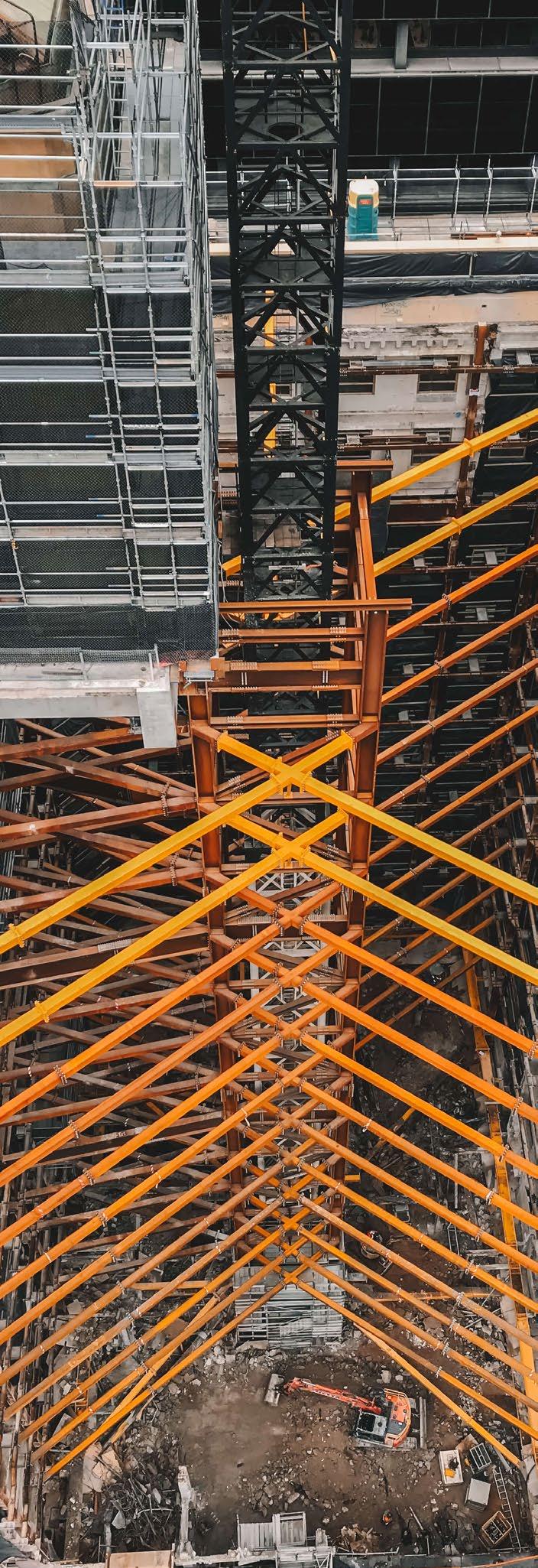
| STEEL AUSTRALIA | WINTER 2023 39
“ The secret to Belmore’s success is adaptability. We never look at challenges as roadblocks. We don’t throw up our hands in frustration. Instead, we see what can we do to help."
IMAGES
Left: Icon Metal boilermaker works on a complex geometric spiral stair at AMP Capital's Quay Quarter Tower Precinct.
FEATURE: INNOVATION & COLLABORATION
Right: Quality control checks by Icon Metal at AMP Capital's Quay Quarter Tower Precinct.
Belmore, but for the entire local area,” Emma said.
Allan agreed. “Having more skilled, local tradespeople is always going to be beneficial for the region. If we have 50 or 60 kids come through the Flash Starts Program each year, and Belmore employs a few that are very good, and some of the other local fabricators take on a few kids as well, it can’t be anything but good for the local industry.”
The Flash Starts Program saw groups of 10 students from seven different schools in the local area visit the Belmore workshop. They all had to be clothed correctly in the right PPE, from high-vis vests through to safety boots.
They toured the facilities, attending a presentation and a safety induction, before working on a fire pit project that involved cutting, welding, and grinding. The groups were rated on their fire pits, with the winning student from all schools taking home a welding kit as a prize.
According to Emma, “All the kids had the opportunity to work in a live workshop environment. It was fantastic to see their eyes light up – some of the kids had never even held a welder or grinder before.”
And the Flash Starts Program had benefits not just for the students, but also the Belmore staff. Director of
Belmore Engineering, Daniel Bullen, said, “Each team had one of our experienced fabricators guide through the entire process. This was great for our own workforce as well – it was something different, something out of the ordinary that took our fabricators out of their day-to-day.”
"This also inspired a competition between our tradesperson mentors as to whom was the superior ‘tradie’ collecting points for each winning student to come from their respective teams," said Daniel.
Overcoming the skills shortage
As more experienced tradespeople are reaching retirement age without the same number of new apprentices coming through, the steel industry is experiencing a growing labour shortage. The goal of the Flash Starts Program was to bridge the skills gap, driving the entire industry forward.
With many high school students still unsure of what they want to do after they graduate, the Flash Starts Program aimed to capture that pool of potential apprentices and spark their interest in the steel industry, by showcasing the large-scale projects that the company works on.
Daniel said, “A lot of the kids in our local area wouldn’t have a clue what it is we do. They might walk past our facility every day, but not be aware of the
type of work going on inside. Until they experience it, kids don’t understand the type of job satisfaction they might enjoy in the fabrication industry.”
And by opening up career pathway opportunities, Belmore Engineering landed three new apprentices from the program. “We found that the calibre of apprentices we landed as a result of the Flash Starts Program was high because they had an understanding of the fabrication trade,” Daniel said.
“They hadn’t been told by their school, or by their Mum and Dad, that they had to get a job or a trade. Instead, we found apprentices who were genuinely interested and passionate about the trade. This means that they have the right attitude and approach – their heart is in it so they excel and take on bigger challenges.”
“There are a lot of high schools kids who know that they are going to do a trade or go to university. But there is a bigger pool of kids who just aren’t sure what they want to do. The Flash Starts Program was about trying to capture that pool—to spark their interest.”
A growth mindset for the future
While the Belmore Engineering team is excited about the future of the Australian steel industry, the challenge is to attract and retain talented staff in order to make the most of opportunities as they arise.
PROJECT PROFILE: WESTERN SYDNEY AIRPORT
Belmore Engineering was commissioned by Multiplex Constructions to supply and erect structural steel for the construction of Western Sydney International Airport.

Belmore is engaged in multiple aspects of the airport’s construction, including delivering and installing structural steel for seven fixed link bridges (1,200 tonnes), baggage handling (1,100 tonnes), and the terminal roof skylights and pop ups (80 tonnes).
Construction of Western Sydney International Airport is currently underway and on track to begin operations in 2026. With Sydney's aviation demand set to double over the next 20 years, the airport will help Sydney to meet this demand. Once complete, the airport will operate curfew free to deliver international, domestic and freight services.
In addition to meeting Sydney’s growing aviation needs, this project will generate significant economic activity and provide employment opportunities closer to home for people in the western Sydney region.
Daniel said, “There are so many opportunities in the steel industry at the moment. We’re turning work away because we don’t have the capacity. The work is there. The issue is finding the labour. There is so much room for the Australian steel industry to grow. Our governments need to support Australian businesses to expand to keep products like steel manufactured locally.”
Even though the company is currently operating at capacity, they have their eyes set firmly on the future – with aspirations to expand and become more efficient. This means investing in more CNC technology and other innovations so they can take on more work with the staff that they have.
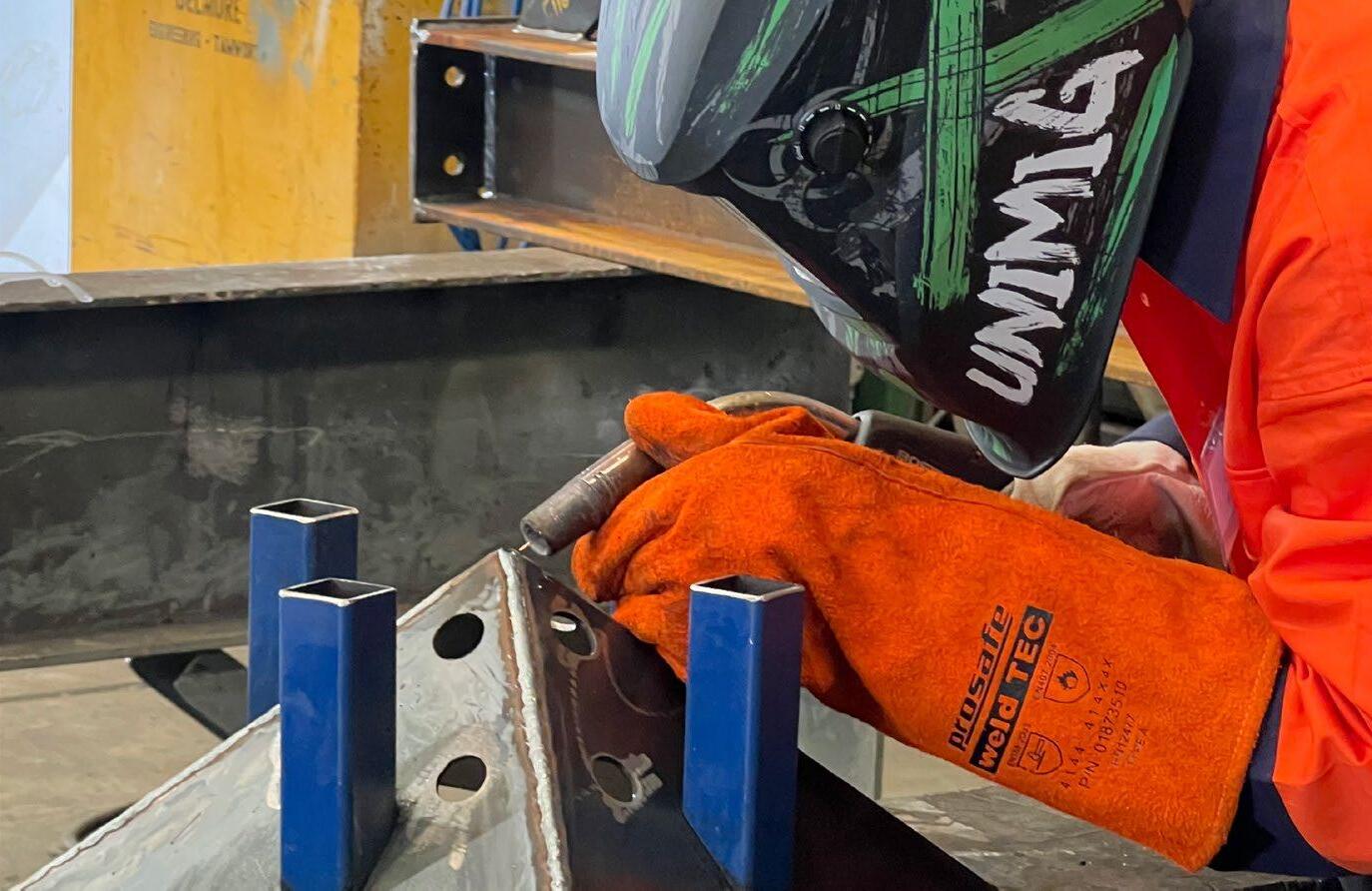
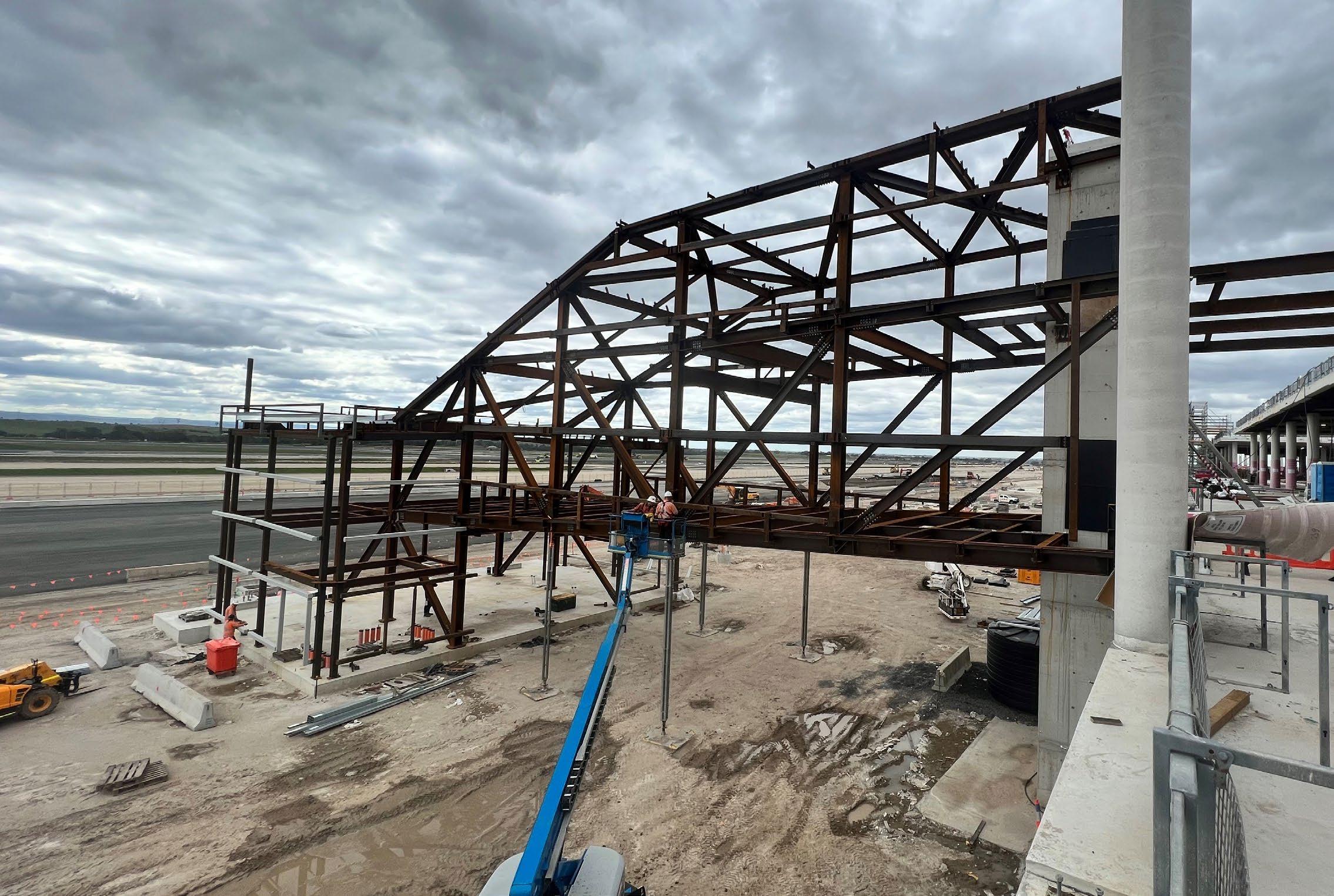
It is a testament to Belmore Engineering’s culture and environment that so many of their employees stay with the business long-term, some for more than 20 years. Daniel said, “In light of the skills shortages, David our MD and the business as whole, has done an incredible job of retaining team members that have the company’s best interests at heart.”
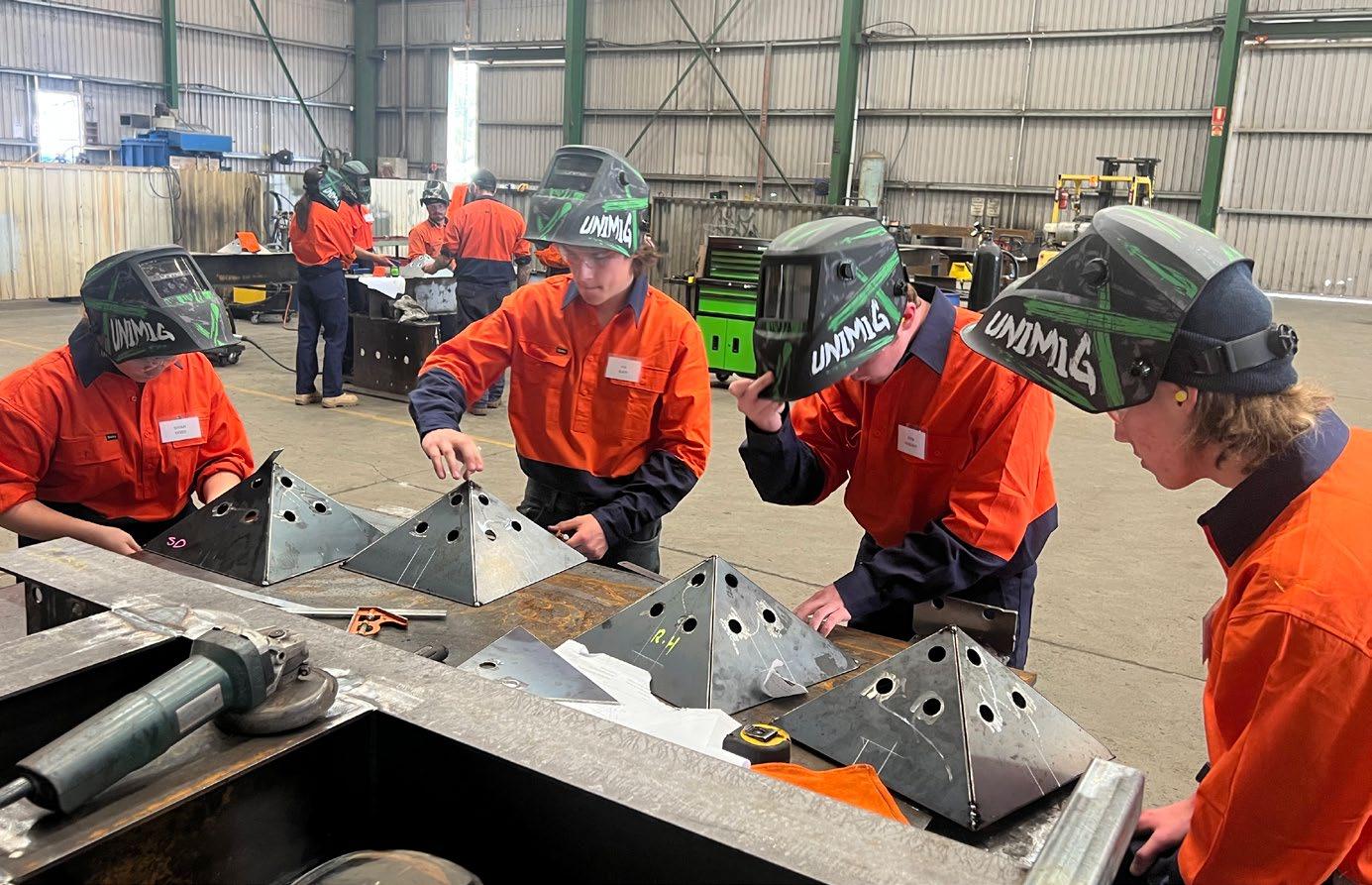
| STEEL AUSTRALIA | WINTER 2023 41
CLICK HERE TO LEARN MORE ABOUT BELMORE ENGINEERING >>> FEATURE: INNOVATION & COLLABORATION
The Flash Starts Program.
Western Sydney International Airport
INQUIK: BRIDGING THE GAP THROUGH PARTNERSHIP POWER
The InQuik bridge system, an innovative modular construction methodology, simplifies bridge building using a steel reinforcing cage and permanent steel formwork. This Australian invention offers self-supporting structures with a minimum 100-year design life and minimal maintenance requirements. The system, which entered the market in 2017, has gained significant local traction due to its easy installation and structural advantages. Collaboration with local firms like SMEC, BlueScope, InfraBuild, Australian Reinforcing Company and Nepean Engineering and Innovation has helped ensure InQuik's success.
A modular bridge construction methodology, the InQuik bridge system was invented and developed by Bruce Mullaney, Logan Mullaney and Jim Howell in 2015.
The system is based on a standard reinforced concrete bridge methodology, which has been used around the world for more than 100 years. It is currently the most widely used bridge construction methodology in every country, especially due to advancements in pre-casting and tensioning cables.
The key idea behind the InQuik system is that a welded steel reinforcing cage is connected to a permanent steel formwork so that the construction load from the concrete is transferred to the internal reinforcing. Thus, the structure is fully self-supporting and concrete can be poured on-site.
This simple concept has numerous constructability and product quality advantages, and the structure has a minimum 100-year design life (achieved by using 40 MPa concrete, or 50 MPa in a B2 coastal environment), with minimal to no long-term maintenance requirements.
The maximum single span currently offered by InQuik is 18.5m. However, multi-span options are available, using the InQuik headstock to build bridges with no real limit on the total length achievable.
Revolutionising bridge design
As Bruce Mullaney describes it, he and Jim never intentionally set out to revolutionise the engineering and construction of bridges. "My brother in-law Jim and I were developing a new fire-rated high-rise housing system that used concrete suspended floors. When we looked at the drawings, we realised that the system could also be used as a bridge. And so our bridge journey began," said Bruce.
InQuik was keen to work with other local companies from the outset. According to Logan, "We looked to team up with Australian companies to get off the ground. That's one of the reasons why, in 2015, we partnered with SMEC—the originally state-owned company that built Snowy Hydro."
As a result, the InQuik bridge system was designed and certified by SMEC to comply with the requirements outlined in the Australian Standard AS 5100 Bridge design, including SM1600 and
HLP (Heavy Load Platform) 320 and 400 loadings, as required.
The system first entered the Australian market in 2017. Since then, it has rapidly gained local market share as the product’s ease of installation and structural advantages are converting customers to using it as their preferred option for new and replacement bridges.

Logan explained how quickly the system has gained traction within the market. "Our first bridge sale was part of the Snowy Hydro 2.0 project—that was the first commercial bridge we ever completed. It only took 12 hours to build, including pouring all the concrete. In 2017, in our first year, we built three bridges. The year after, we built eight bridges. To date, we've built more than 200 bridges."
Collaboration with local partners
The InQuik system includes a variety of steel elements, from corrosion resistant steel, through to stainless steel and reinforcing bar. The steel consumption is approximately 70% pre-fabricated steel reinforcement, 25% coated steel product, and 5% stainless steel and ancillary steel elements. InQuik collaborates with local companies to
Belimbla bridge (Magnelis® steel).
ensure this steel is locally sourced, including leading manufacturers like BlueScope and InfraBuild.
According to Michael Wright, InQuik's director of technology and innovation, "BlueScope has been fantastic—we work closely with their team. We need steel sheet and plate, of course, which they supply. However, when we moved into the use of REDCOR® weathering steel, BlueScope was particularly helpful, providing technical support around how to handle and weld REDCOR® weathering steel so that it delivers the best possible performance."
The formwork for the InQuik system can be made from a selection of steels (REDCOR® weathering steel, zinc-alum coated steel, or stainless steel) which each have different corrosion behavior. The most suitable cladding component would be selected based on its corrosion performance in each bridge’s specific environment.
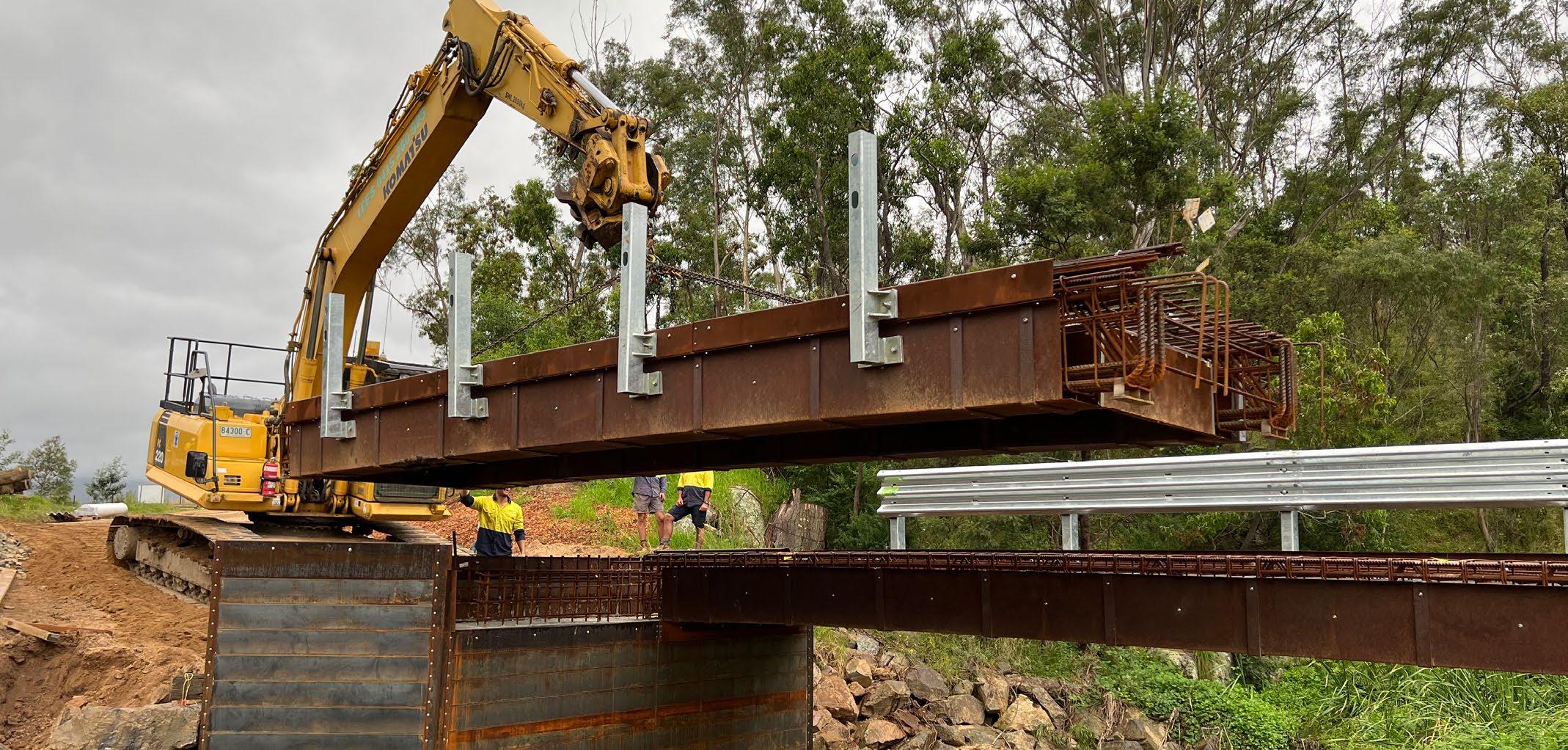
The formwork is left in place for the life of the bridge. More conventional concrete construction uses temporary formwork, which is not typically made from steel and is reusable. The use of permanent steel formwork increases steel consumption of the InQuik system by approximately 20% compared to conventional methods.
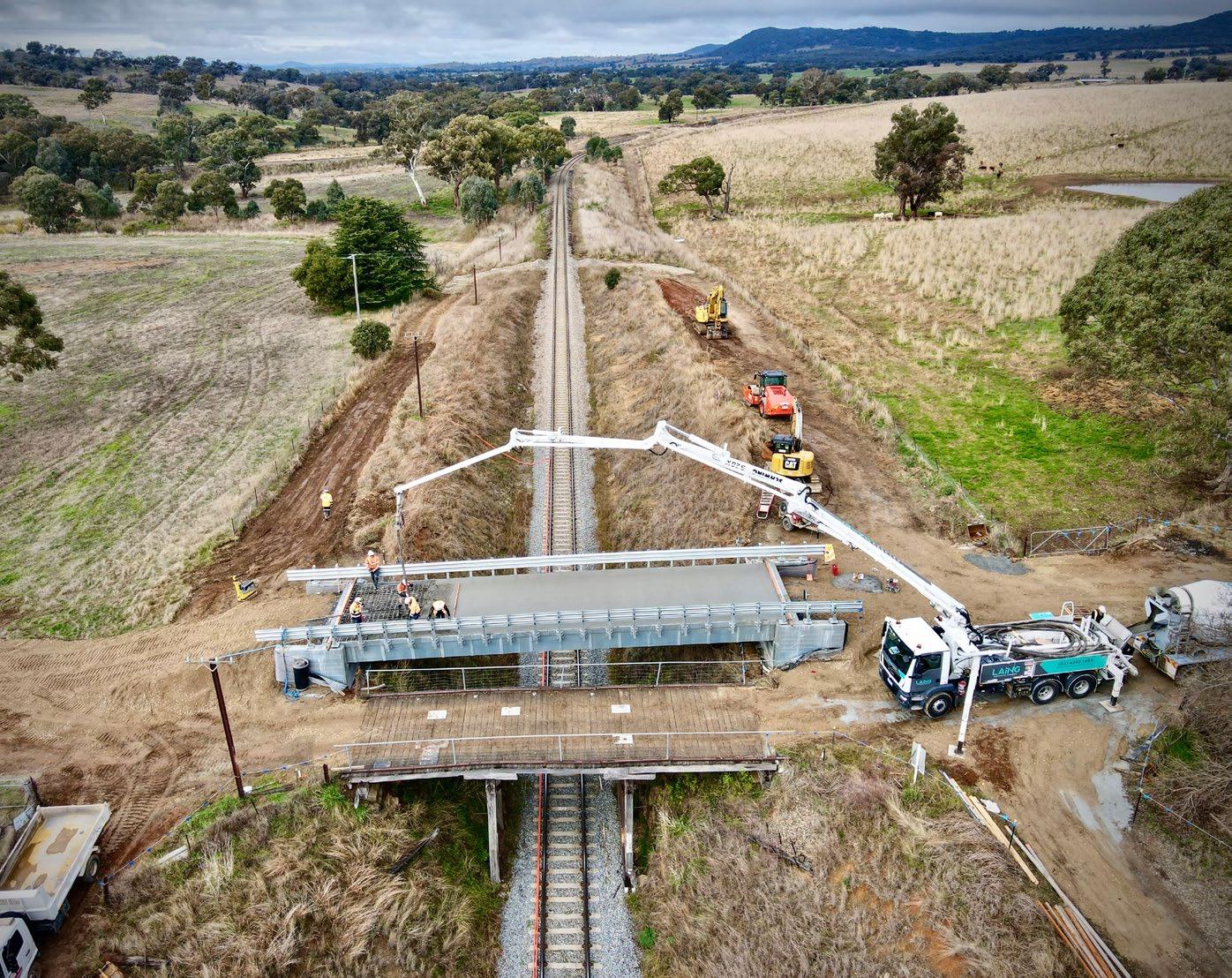
As Michael explained, "We currently import the coated steel product used in the formwork. However, we're working with BlueScope on an Australian equivalent so that we don’t need to import the material from Europe and can use Australian products, which is always our preference. BlueScope has taken us through their mills and given us access to their technical people—their collaboration has been great," said Michael.
"We have a similar working relationship with InfraBuild, who supply a lot of our rebar. They’ve always been very responsive to our needs and supplying products for us."
In order to have sufficient steel for the structure to be self-supporting, an additional 25% of reinforcing steel is required compared to conventional methods. Additional reinforcing steel is required for the integral InQuik bridge design where the abutments, decks and wingwall all form a monolithic bulk. The integral design reduces long-term maintenance requirements through eliminating longitudinal deck joints and removes tiedowns and bearings. These extra steel elements mean the InQuik bridge system required an additional 35% more steel compared to a conventional bridge of this type. Additional reinforcing is consumed
| STEEL AUSTRALIA | WINTER 2023 43
FEATURE: INNOVATION & COLLABORATION
“
There is a real willingness in the Australian steel supply chain to get involved and help out. Once you know you're helping another Australian supplier, everyone is willing to contribute and lend their support."
Logan’s bridge (Redcor® weathering steel).
Frampton bridge (Nepean supplier partner).
for the integral InQuik bridge design and there are numerous stainless steel connectors, supports, and so on used in the concrete cover zone. These steel elements mean the InQuik bridge system consumes an additional 50% more steel compared to a conventional bridge of this type.
InQuik's collaboration extends into the fabrication process as well. "Nepean Engineering and Innovation has been a very important partner for us. They’ve done a lot of fabrication work for us as we have grown our business. Nepean has been fabricating our structures on their site and shipping direct to our clients. They have a solid understanding of how we make all our components, backed by our technical support on drawings and structures."
"There is a real willingness in the Australian steel supply chain to get involved and help out. Once you know you're helping another Australian supplier, everyone is willing to contribute and lend their support."
MURPHY'S BRIDGE
Murphy’s bridge was the lifeline that connected the widespread community around Cadgee in New South Wales.
On New Year's Eve in 2019 as the sky turned purple and red, most of the people fled their home as the bushfire
descended. On returning home several days later, the bridge across the Tuross River had been damaged beyond repair.
Initially, local residents installed a temporary crossing, but it was washed away in the first of 15 floods that would impact the area over the next two and a half years. Once the river became unpassable, a 64km drive through back roads was required for even the simplest of trips—including school drop. As a result, many families used kayaks or stand up paddle boards to cross the water to the school bus stop.
InQuik's solution
InQuik proposed a five-span (13.7m x 4.8m) semi integral bridge, with a full abutment-to-abutment length of 70m.
By raising the bridge level and using a fully integral design, the InQuik® system enhanced flood protection and increased the structure's overall resilience in the face of heavy loading, flooding, and other natural disasters; even when submerged by the river.

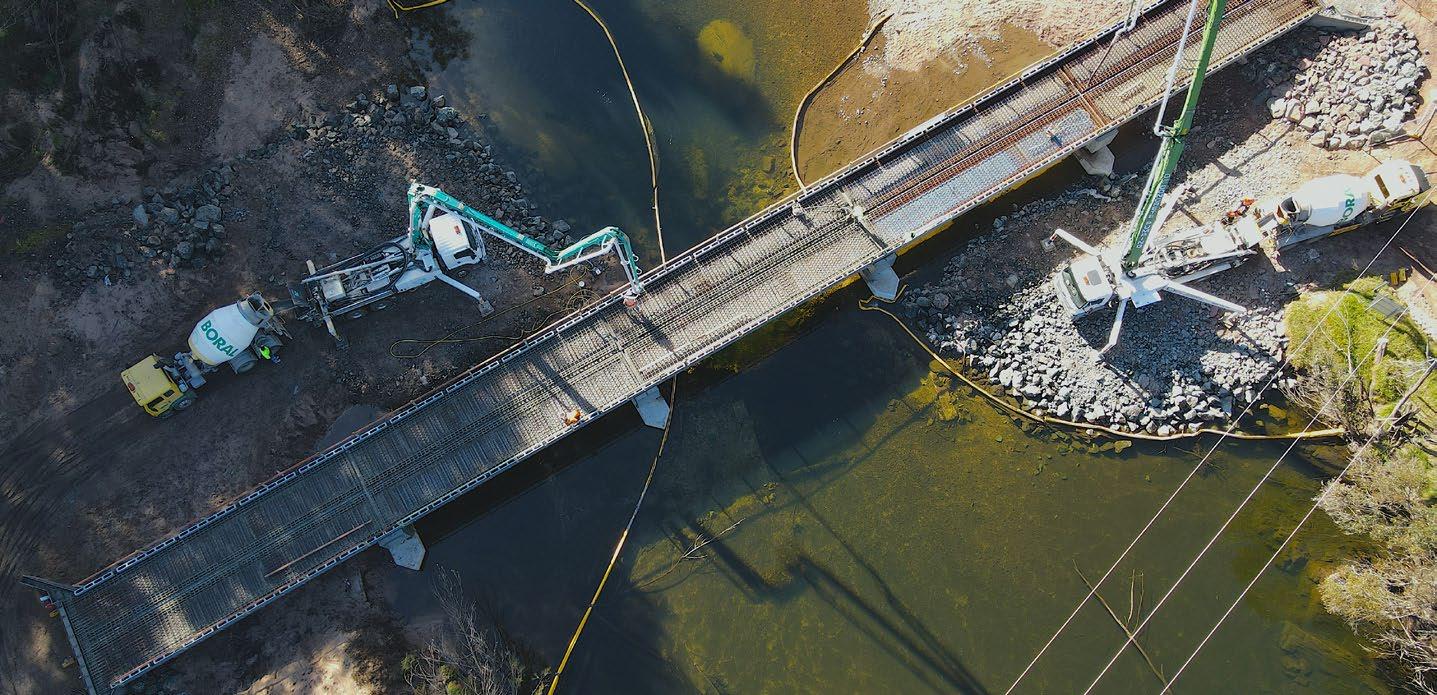
Concrete and steel design would also help to prevent bushfire damage in the future. In addition, the InQuik bridge system meets both T44 and SM1600 design standards, thus meeting the current and future transport needs on behalf of the community.
The Eurobodalla Council installed the InQuik® system using local plant, materials and labour, ensuring funds and work were retained with the local community. Site preparation
The completed Murphy's Bridge in Cadgee, New South Wales.
Site preparation works at Murphy's Bridge.
works included a partial causeway with earthworks, realignment of the bridge for better traffic flow, installation of four piers in the riverbed and headstocks on the piers to support the bridge decks, establishment of abutments on either side of the river.
The installation process was rapid, with bridge span sections positioned in August 2022 and concrete poured later that same month. The concrete was allowed 28 days to fully cure while the approaches and riverbank work was completed. The bridge was ready for service by September 2022.
Then, just one month after being opened, to test the resilience of the structure, the Tuross River flooded. An estimated 120mm of rain fell in just three hours in the ranges just west of Moruya with 170mm in the six hours to 5am. The 2,180km2 catchment area funnelled the rainfall into the Tuross River and the river heights rose to accommodate the flow. At its peak, the water was estimated to be 5m over Murphy’s Bridge.
As the water level receded, the bridge emerged from the river unscathed.
The InQuik bridge is a reliable and cost effective solution, designed to last for a century with minimal to zero maintenance, providing long lasting benefits for generations to come.
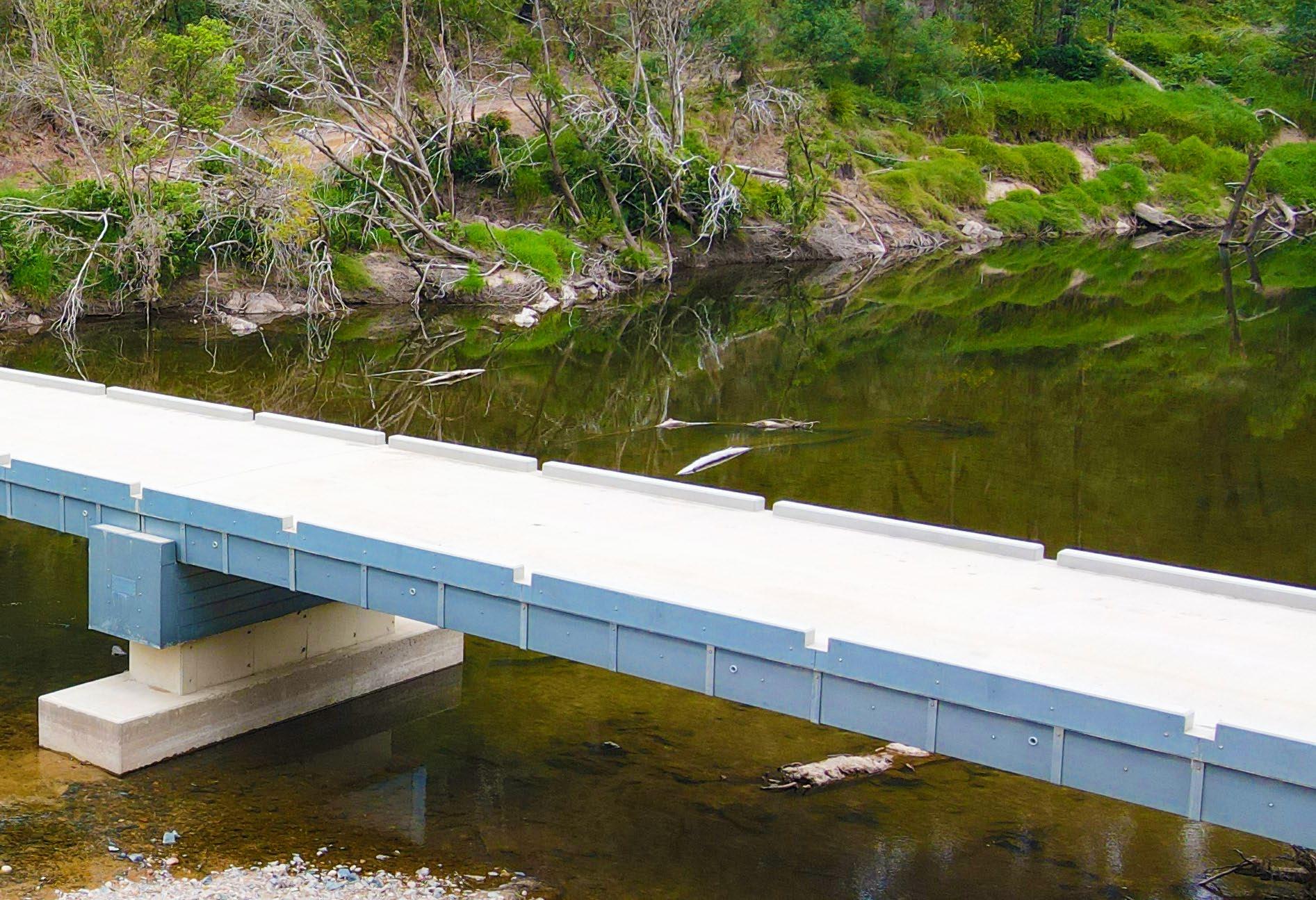
INQUIK INTERNATIONAL INNOVATION CENTRE
Construction recently commenced on the InQuik International Innovation Centre (IIIC). The facility, located in Heatherbrae New South Wales, is set to become InQuik’s flagship manufacturing facility in Australia. The facility will not only manufacture product for customers, but also act as InQuik's innovation hub for new product development, and a training centre for international manufacturers of InQuik products.
According to Michael Wright, InQuik's director of technology and innovation, "We’ve been working from a rented premises at Tomago since the company was established in 2017. Our rapid growth rate has meant that we’ve outgrown our existing premises. We purchased a block of land 12 months ago and recently started building our own bespoke facility."
"The entire factory is designed and built for purpose, following our natural work flow—raw material comes in at one end, flows through, and the finished components are shipped out from the other end. The design makes provision for all the cranes and lifting equipment we need, and the size of the bays reflects the width and length of the components we make. Bruce Mullaney our founder, designed the factory and has been very hands-on throughout the construction process."
"The new facility not only suits what we want now, but what we will need well into the future," said Wright.
The IIIC was made possible through the support of the New South Wales Government’s Regional Job Creation Fund. The fund supports existing businesses in regional New South Wales to grow, and encourages interstate or overseas businesses to invest in the region. InQuik received a grant of $1 million, and is expected to create 50 new jobs in the Hunter region.
| STEEL AUSTRALIA | WINTER 2023 45
FEATURE: INNOVATION & COLLABORATION
CLICK HERE TO LEARN MORE ABOUT INQUIK AND THEIR INNOVATIVE BRIDGE SYSTEM >>>
AN UPDATE FROM THE STEEL RESEARCH HUB
The ARC Research Hub for Australian Steel Innovation (Steel Research Hub) is a five year, $28 million research program designed to support the transition of Australia’s steel manufacturing industry to a more sustainable, competitive, and resilient position based on the creation of new, higher value-added products and more advanced manufacturing processes. A globally competitive domestic steel manufacturing industry is a strategic asset for Australia’s nation-building, economic growth and employment. steel Australia brings you the latest news from the Hub.
The Steel Research Hub is focused on four key programs: process integration and sustainability; product innovation and technology; advanced corrosion performance and operational efficiency; and steel supply chain transformation.
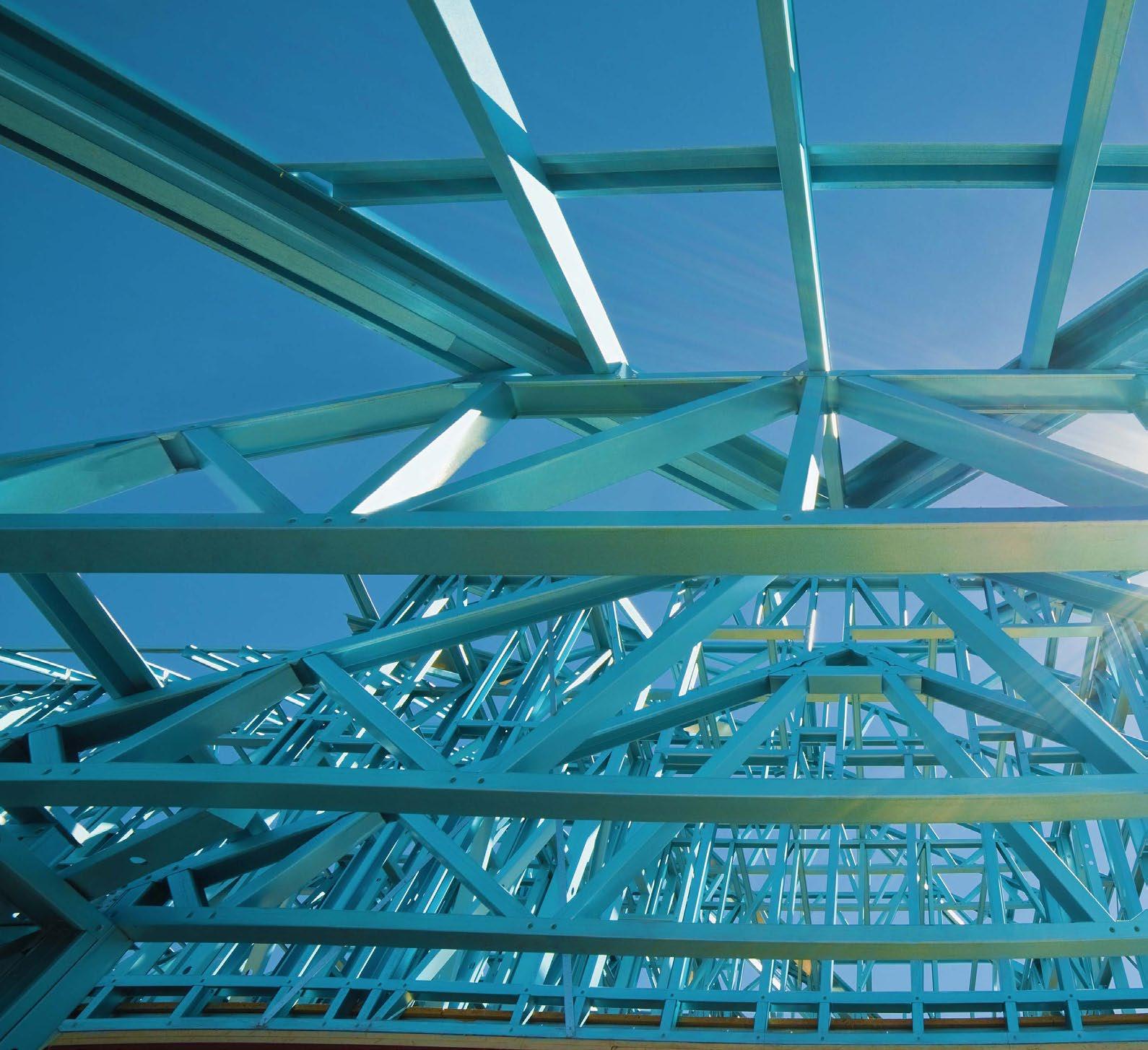
The majority of projects across the Steel Research Hub's four programs have commenced, with some already producing some great outcomes. The hub expects to have the remaining projects up and running before the end of the year.
Development of a sensing system for onsite corrosion monitoring
One of the exciting projects underway within the Steel Research Hub, brings together expertise from the University of Wollongong (UOW) and BlueScope to focus on the development of a sensing system for onsite corrosion monitoring.
This project is part of the Corrosion Protection and Prediction program, specifically theme one: improved corrosion assessment. In theme one, characterisation of the corrosion products that form on test panels after known and ostensibly similar outdoor and accelerated exposure cycles will be used to confirm corrosion mechanisms and kinetics within said exposure cycles.
BlueScope maintains a large corrosion assessment program for bare alloy and organic coated (prepainted) steel products using a combination of realworld outdoor (washed, unwashed and sheltered conditions) and laboratorybased accelerated corrosion exposure methods. The composition and morphology of corrosion products forming on coated steel samples and products are reported to be a function of the exposure environment, such that different corrosion products form on nominally identical samples and products after outdoor and accelerated exposure respectively.
The project team consists of UOW’s chief investigator Dr Cormac Fay from the SMART Infrastructure Facility and is
Land Bridge for WestConnex 3B Rozelle Interchange Project.
strengthened by BlueScope's associate researcher’s Dr Thomas Jurak and Andrew Collins.
A proposed outcome of this project is the correlation of specific exposure conditions and history with identified corrosion products on coated steel panels in both outdoor and accelerated exposure conditions. This will permit identification of micro corrosivity trends through a deeper understanding of local environmental variables measured via appropriate sensors (such as local humidity, time of wetness, salt accumulation, and detritus accumulation) and how these environmental variables influence the formation of specific corrosion products on coated steel.
The expected outcome of this project is the development of an operational prototype capable of monitoring the key sensory targets in the field and in an accelerated test chamber, with energy replenished through solar cells where required. The prototype is to regularly transmit harvested sensory data wirelessly. This is expected to enable the gathering of real-world data at outdoor exposure sites and therefore provide BSL with valuable information towards the advanced development of future coating products.
Cold-formed steel structural floor systems for residential and mid-rise construction
An exciting project has commenced at the Steel Research Hub under
the Product Innovation and Technology program. The project sees the University of Sydney and the Enduroframe® division of BlueScope Steel join forces to investigate coldformed steel structural floor systems for residential and mid-rise construction, to enhance product functionality and create alternative design solutions for steel floor joists.
BlueScope is one of the world’s leading manufacturers of painted and coated steel products, and with a strong expertise in steel they provide vital components for houses, buildings, structures, automotive and more. The Enduroframe® division is a leading developer of software and light gauge steel framing systems for the residential and commercial building segments.
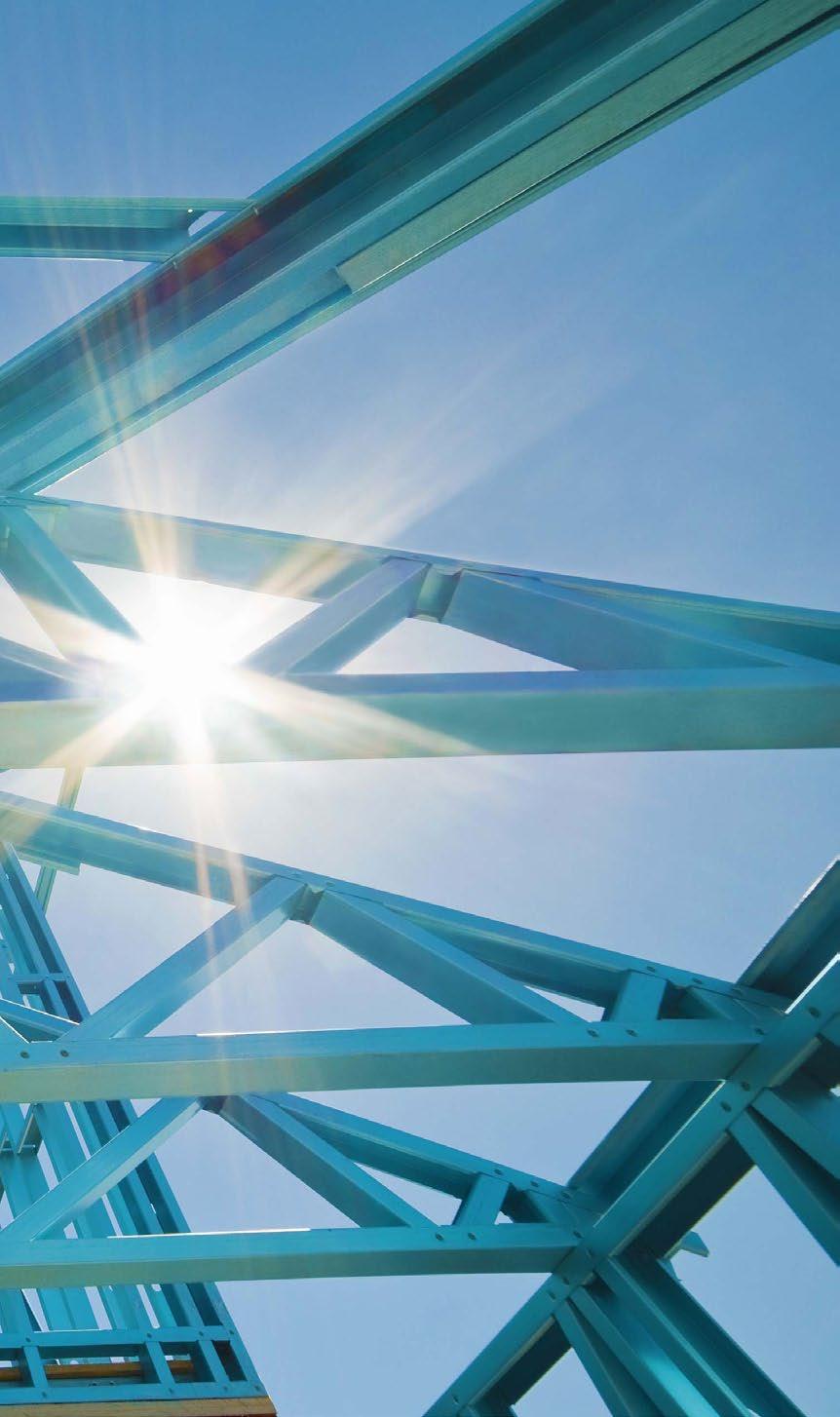
Floor joists are manufactured using a range of systems with top and bottom chords, and diagonal web members spanning between the top and bottom chords. While widely used, there seems to be limited research carried out on their strength, deflection and frequency performance. Theoretically calculated deflection values often do not line up with actual deflection values, which may impact the accurate design of floor joists.
The aim of this project is to investigate
specific issues with steel floor joists manufactured in the wall frame orientation to determine design methodologies for typical dead and live loads. This will provide further understanding of the serviceability criteria to minimise vibration, deflection and noise in the floor systems, and ultimately help to develop design criteria for optimally performing floor joists.
For BlueScope, the analysis and design methodology to be developed in this project will enhance their preeminent record of producing innovative structural solutions and maintain their competitive edge nationally and internationally. It will also allow them to produce more efficient and reliable design capacities of joist systems in residential and mid-rise construction.
Research outcomes from the project will be incorporated into national standards such as AS/NZS 4600 Cold-formed steel structures
The University of Sydney project team consists of Project Leader Associate Professor Cao Hung Pham and PhD candidate Hoang Vu Le. A postdoctoral research fellow will also be hired to contribute to the research. From BlueScope, the research team includes Mark Eckermann, Paul Jones and Trevor Clayton.
SME SUPPORT, ENGAGEMENT & COLLABORATION
The Steel Research Hub is making steady progress on its dedicated program that aims to grow a network of innovative Small-Medium Enterprises (SMEs) operating within the steel supply chain. The engagement program seeks to create opportunities for advanced manufacturing initiatives to be designed, developed, and trialled in partnership with SMEs through subsidised and leveraged access to Australia’s extensive university-based researchers and facilities.
Australian steel industry peak bodies, such as Australian Steel Institute, Weld Australia, Australian Industry Group, and Advanced Manufacturing Growth Centre, will play an important advocacy role with respect to their members – many of whom are SMEs. In 2022 the Hub convened initial meetings with the peak bodies to tap into their expertise to inform strategies for connecting with SMEs and devise the support that would be needed for successful collaborations.
As a next step, the Hub will finalise a strategic plan in collaboration with the peak bodies to guide a series of targeted communications and activities to raise SME awareness and interest in the program in pursuit of individual innovation goals. While still early days, this program aims to create the environment for the transformational shift required, and bridge the gap between current business conditions that SMEs face and their future aspirations. For information, contact: steel-research-hub@uow.edu.au.
MORE ABOUT THE STEEL RESEARCH HUB AND THEIR INNOVATIVE, COLLABORATIVE PROJECTS >>>
| STEEL AUSTRALIA | WINTER 2023 47
Chess Engineering's Perth facilities.
CLICK HERE TO LEARN
FEATURE: INNOVATION & COLLABORATION
“ The Hub’s overarching goal is to support the transition of Australia’s steel manufacturing industry to a more sustainable, competitive and resilient position based on the creation of new, higher valueadded products and more advanced manufacturing processes.
INNOVATION IN SUSTAINABILITY : STEEL MAINS PUBLISHES ITS FIRST EPD
Steel Mains recently published its first Environmental Product Declaration (EPD) for their SINTAKOTE ® Mild Steel Cement Mortar Lined, medium-density polyethylene coated pipes. The primary purpose of the EPD is to provide transparent and detailed information for the selection of SINTAKOTE ® steel pipe and its impact on the environment through selection and life cycle use by customers and water infrastructure asset owners.
Originating in 1878, Steel Mains is Australia’s leading manufacturer and supplier of complete steel pipeline systems for the transportation of water and wastewater, offering a total solution approach to our customers. Throughout Australia and the rest of the world, steel pipelines have long been used in water supply, particularly where high pressures, difficult laying conditions, security of supply, have required the strength, toughness, and security of steel.
Steel Mains and its forerunners have been at the forefront of providing solutions to the water industry for more than 140 years of pipeline manufacturing in Australia.
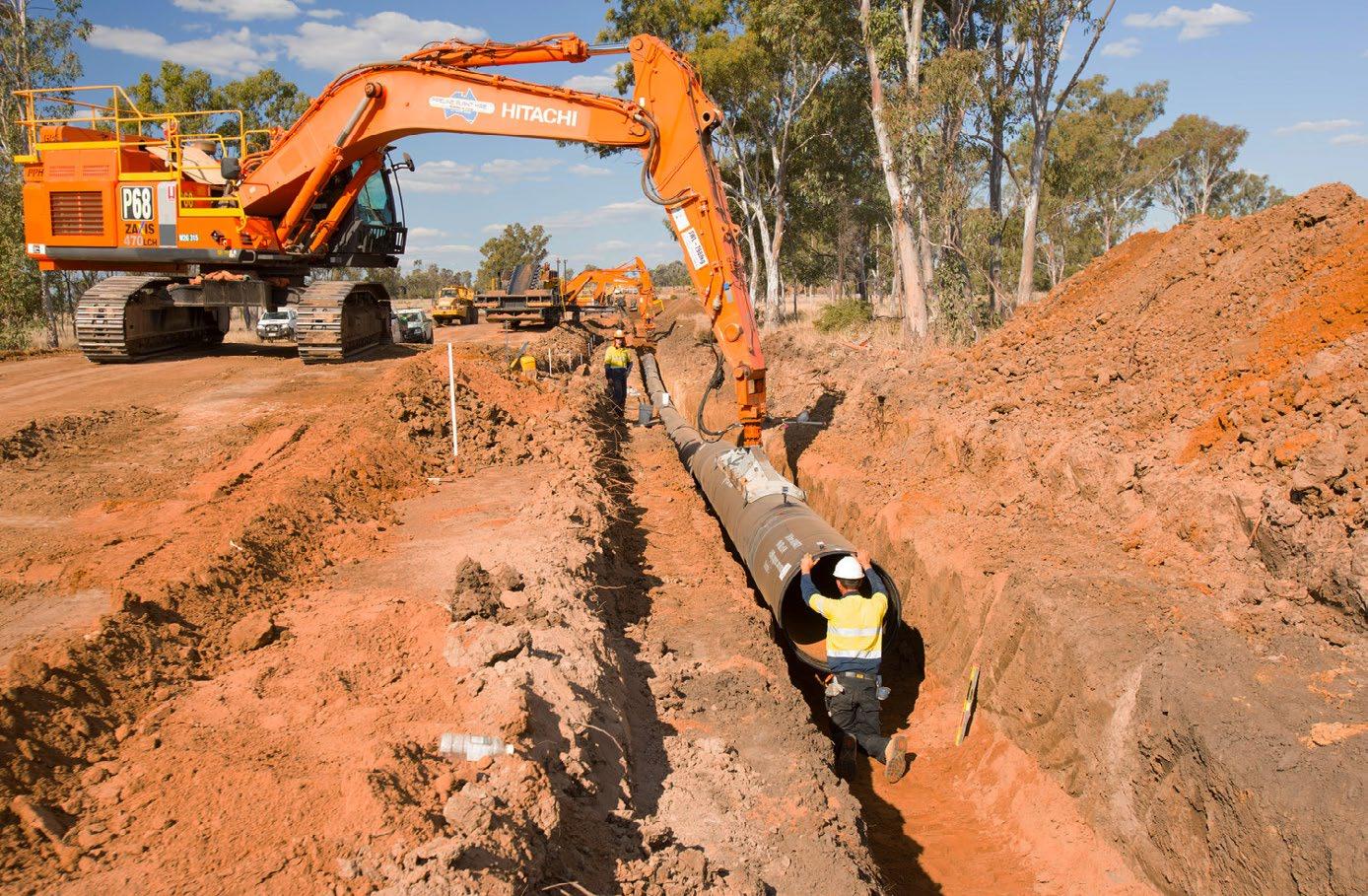
Over that period, steel pipeline design, manufacturing processes and technology have evolved into the SINTAKOTE® steel pipeline system, providing unique product solutions that will endure for a lifetime of water
security for the communities they service. SINTAKOTE® steel pipes are manufactured in accordance with AS 1579 Arc-welded steel pipes and fittings for water and wastewater, utilising steel coil that is manufactured to AS/NZS 1594 Hot-rolled steel flat products
SINTAKOTE® is a proprietary corrosion protection system which comprises a black medium density polyethylene which is fusion bonded directly to the steel pipe and fittings. The coating provides complete corrosion protection, as well as encompassing a unique rubber ring pipe jointing system.
A detailed technical study completed by Steel Mains confirms that the SINTAKOTE® steel pipe product has a lifetime of up to 200 years, owing to the fact that the external fusion bonded polyethylene coating provides superior external corrosion protection in almost all operating environments.
Today, Steel Mains' products and services cover a range of industry needs both within Australia and globally, delivering quality, strength, durability and endurance.
Steel Mains has over 70,000 tonnes of annual capacity to support project owners and contractors across the country through three world-class pipe production mills in Somerton, Victoria and Kwinana, Western Australia.

Environmental product declaration for SINTAKOTE® steel pipe
To demonstrate Steel Mains’ commitment to sustainability and transparency, the company recently published an independently verified and registered Environmental Product Declaration (EDP) as part of its sustainability strategy moving forward.
Steel Mains’ environmental commitment is to manufacture our SINTAKOTE® steel pipe more sustainably. In addition to reducing, reusing and recycling materials where possible, Steel Mains is always investigating new ways in minimising the environmental footprint of its product.
According to Ben Twigg, environment, sustainability and internal training lead at Steel Mains, "For us, the whole journey of obtaining an Environmental Product Declaration was very positive. We really wanted to kick-start our journey in terms of taking on more environmental responsibility—securing an EPD was a good starting point for us. Through the process, we were able to start setting goals and targets for the business that were realistic, but would make the largest possible impact."
"When undertaking the lifecycle assessment of our product during the EPD process, we had to assess all the components that make up the SINTAKOTE® steel pipe product. From all the ingredients in the feedmix— including steel, sand, polyethylene, flux and welding wire—through to transport, installation, deconstruction and reprocessing."
"It was a really good exercise in terms of evaluating our everyday activities. It gave us in-depth data on our raw materials and what their contribution to our products—and the broader environment—actually are."
"The entire EPD process, from start to finish, took about a year and a half. The data collection portion of the process took six to eight months, and then all our data had to be verified."
"Publishing our first EPD was definitely a necessary step for our business to take. Increasingly, our clients are calling for evidence of all the information contained with our EPD. Local councils, in particular, are looking for information on embodied carbon. Without undertaking the EPD process, we simply wouldn't have that information on-hand," said Ben.
Their EPD is—by no means—the end of the sustainability road for Steel Mains. The company is committed to providing an Australian steel solution where 98% of its product content is locally sourced and locally made from Australian raw materials. In fact, the Australian-based Steel Mains supply
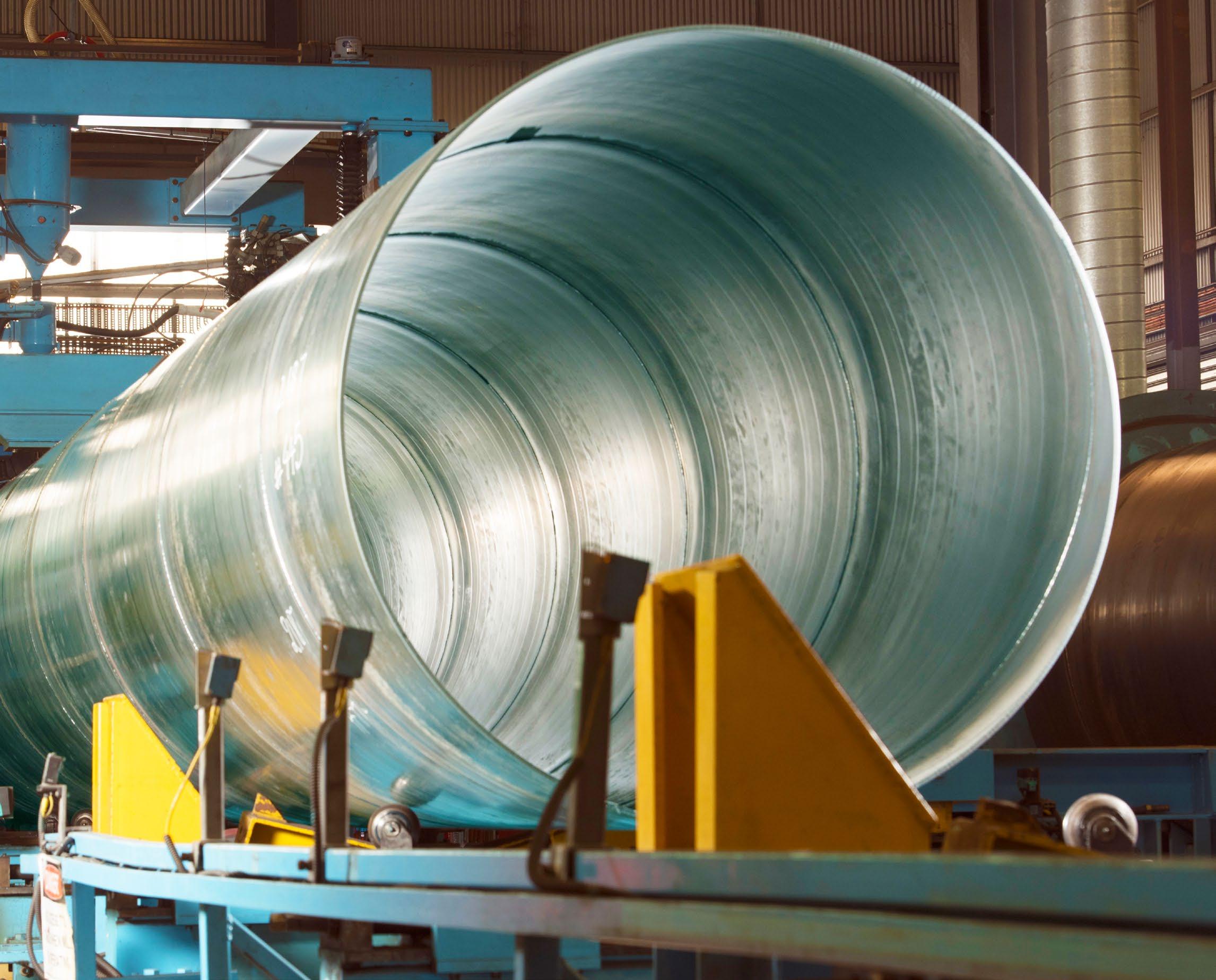
chain extends beyond materials, through to transportation and finally in construction.
In addition, Steel Mains is currently completing the Steel Sustainability Australia (SSA) certification process under which EPDs are awarded. Superseding ASI’s Environmental Sustainability Charter (ESC), the SSA Program is designed to identify sustainable steel suppliers by assessing the environmental and social impact of their steelwork manufacturing and processing operations.
It provides a holistic sustainability best practice platform for steel industry members, which enables wide participation for all steel sectors and companies, common approaches to measuring sustainability performance for the built environment, and escalates strong sustainability credentials for steel.
| STEEL AUSTRALIA | WINTER 2023 49
CLICK
EPD >>> FEATURE: INNOVATION & COLLABORATION
Chess Engineering's Perth facilities.
HERE TO LEARN MORE ABOUT STEEL MAINS, THEIR SINTAKOTE® STEEL PIPE AND FIRST
NEW ASI MEMBERS
ASSOCIATE MEMBERS
ATV-Adelaide Trucks and Vans
T: 08 81667539
E: adelaidetrucksandvans@gmail.com
W: adelaidetrucksandvans.com.au
A: 25 Sharp Court Cavan, South Australia
Baumann Sideloaders Australia
T: 0466 533 178
E: info@baumann-sideloaders.com.au
W: baumann-sideloaders.com.au
A: 6 Glenn Court
Rowville, Victoria
Choice Energy
T: 1300 304 448
W: choiceenergy.com.au
A: Level 6, 580 St Kilda Road Melbourne, Victoria
GridBeyond
T: +44 7918 359 693
W: gridbeyond.com
A: Suite 29, 55 Pyrmont Bridge Road Pyrmont, New South Wales
Licenses 4 Work
T: 02 8292 0111
E: info.syd@licences4work.com.au
W: licences4work.com.au
A: Unit 3/69 The Mall Bankstown, New South Wales
MANUFACTURER MEMBERS
No.1 Roofing & Building Supplies
T: 02 9970 8359
E: narrabeen@no1roofing.com.au
W: no1roofing.com.au
A: 1 Warraba Road North Narrabeen, New South Wales
DISTRIBUTION CENTRE MEMBERS
Southern Steel Supplies

T: 08 8382 0466
W: southernsteelsupplies.com.au
A: 69-71 O'Sullivan Beach Road
Lonsdale, South Australia
The Metal Warehouse
T: 02 4545 2828
E: sales@themetalwarehouse.com.au
W: themetalwarehouse.com.au
A: 9 Aspinall Place, Mulgrave New South Wales
CLICK HERE TO LEARN MORE ABOUT ASI MEMBERSHIP >>>
PROFESSIONAL MEMBERS
Eiger Structural Engineers
T: 07 3114 3143
E: admin@eigereng.com.au
W: eigereng.com.au
A: PO Box 1022 Capalaba, Queensland
Field Engineers
T: 1300 854 782
E: enquiries@fieldengineers.com.au
W: fieldengineers.com.au
A: Unit 8, 38-42 Margaret Vella Drive Paget, Queensland
Intrax Consulting Engineers
T: 1300 468 729
E: info@intrax.com.au
W: intrax.com.au
A: Level 4, 469 La Trobe Street Melbourne, Victoria
KD Engineering
T: 03 9415 3000
E: info@kd.engineering
W: klopferdobos.com.au
A: 166 Hoddle Street Abbotsford, Victoria
Leroy Palmer Consulting Engineers
T: 074638 7655
E: lpalmer@lpce.com.au
W: lpce.com.au
A: Suite 8, Capital Place 195 Hume Street, Toowoomba Queensland
Morgan Consulting Engineers
T: 07 3369 8411
E: mail@morgance.com.au
W: morgance.com.au
A: 1 Great George Street, Paddington Queensland
NJK Consulting Engineers
T: 0431 481 550
E: nick@njkconsulting.com.au
W: consultingengineersydney.com.au
A: 5/160 Hartley Road, Smeaton Grange New South Wales
NSW Public Works
T: 02 9769 9804
W: publicworks.nsw.gov.au
A: 4PSQ, 12 Darcy Street
Parramatta, New South Wales
STP Consultants
T: 07 3539 8350
E: admin@stpconsultants.com.au
W: stpconsultants.com.au
A: Level 3, 382 Sturt Street
Townsville, Queensland
Wade Design Engineers
T: 07 3229 1183
E: office@wadeng.com.au
W: wadeng.com.au
A: 33 Mein Street, Spring Hill Queensland
Xavier Knight Consulting Engineers
T: 02 8810 5800
E: info@xavierknight.com.au
W: xavierknight.com.au
A: Level 7, 210 Clarence Street Sydney, New South Wales
FABRICATOR MEMBERS
GK Blue
T: 0419 623 920
A: 26 Pikkat Drive, Braemar New South Wales
Heka Group
T: 07 5476 8300
E: hello@hekagroup.com.au
W: hekagroup.com.au
A: 1/49 Enterprise Street, Kunda Park Queensland
Metalcorp
T: 0400 888 314
E: info@metalcorp.net.au
W: metalcorp.net.au
A: 4/12 Pike Street, Rydalmere New South Wales
Metarom Steel
T: 0427 888 961
W: metaromsteel.com.au
A: 5 Rapid Way, Pakenham Victoria
Pierce Engineering
T: 07 4927 5422
E: tenders@pierceengineering.com.au
W: pierceengineering.com.au
A: 48 Quinn Street, Kawana Queensland
Randall Industries
T: 03 9706 4856
E: admin@randallindustries.com.au
W: randallindustries.com.au
A: 9-15 Souffi Place Dandenong South, Victoria
SA Steelworks
T: 08 8447 5970
E: admin@sasteelworks.com.au
W: sasteelworks.com.au
A: 26-30 Athol Street, Athol Park South Australia
Steel Structures Australia
T: 0437 696 606
A: 17 Zac Avenue, Coombabah Queensland
Symonds Eng
T: 0419 922 405
A: 41 Division Street, Welshpool Western Australia
Weldone
T: 03 5443 9950
E: info@weldone.com.au
W: weldone.com.au
A: 17 Wellsford Drive, East Bendigo Victoria
ASI LIBRARY & BOOKSHOP UPDATE
Design of Portal Frame Buildings: Fifth edition now available
Design of Portal Frame Buildings presents limit states design procedures for the design of portal frame buildings based on Australian standards.
Portal framed steel clad structures are the most common type of industrial buildings. They find extensive use as industrial factory and warehouse structures, and as indoor sporting venues. The major components of a portal frame building are a series of parallel portal shaped frames as the major framing elements. Each frame is rigid, and resists horizontal wind forces and gravity loads in the plane of the frame by flexural action.
The fifth edition (2023) has been updated to cater for the 2020 steel structures code AS 4100, the 2021 wind code AS/NZS 1170.2 and the introduction of a new methodology for determining the break-out capacity of cast-in holding down bolts.
The method of dealing with local pressure patches first presented in the fourth edition has been expanded to provide a two-tiered approach for purlin and girt design with a simpler but conservative primary design
option and a more complex secondary option. The deflection limits for crane supporting structures have been changed to better reflect Canadian, US and European practice. However the crane runways and monorails code AS 1418.18 is under revision and further changes including serviceability load requirements may result.
The opportunity has also been taken in the 5th edition to correct some errors and to generally refine and update the previous edition. As in previous editions, the design of bored piers is generally in accordance with the limit states design approach of AS 2159-2009 but with different geotechnical capacity reduction factors proposed depending on whether the piers are classified as short or long.
The quadratic expression derived from Broms’ work by the authors for use in determining the lateral load capacity of short bored piers in cohesive soils continues to be presented in the text of Chapter 7. This expression facilitates the preparation of spreadsheet programs for determining the lateral capacity of bored piers. The book should prove of great assistance to practising engineers as well as students.

UPCOMING ASI EVENTS
The ASI has several exciting events on the horizon, with subject matter ranging from structural steel fabrication and welding for engineers through to finite element analysis of steel structures. Bookings will be available on our website as soon as dates are confirmed. Visit steel.org.au for further information.

DESIGN OF PORTAL FRAME BUILDINGS
Reducing the Risk of Fatigue Failure of Fabricated Steelwork
AS 4100 Steel Structures Design
FURTHER INFORMATION
For further information, contact bookshop@steel.org.au.
To purchase any of the ASI's books, simply click here
| STEEL AUSTRALIA | WINTER 2023 51 INSIDE THE ASI
Event Title Event Format Location
Webcast Seminar Online
Steel
for Engineers Course Brisbane
Site Inspection of Structural Steelwork
Structural
Fabrication and Welding
Face to Face Seminar Brisbane, Sydney, Melbourne, Adelaide, Perth
Finite Element Analysis of Steel Structures
Webcast Seminar Online
Face to Face Seminar Brisbane, Sydney, Melbourne, Adelaide, Perth CLICK HERE TO LEARN MORE AND REGISTER FOR UPCOMING ASI EVENTS >>>
Fifth Edition 2023
Kitipornchai
www.steel.org.au
8748 0180 enquiries@steel.org.au
Authors: S.T. Woolcock, S.
and M.A. Bradford
| 02
including crane runway beams and monorails

ASI Members: Are You Taking Advantage of Your Member Benefits? 1 5 2 6 Advocacy at the local, state and federal levels to advance the cause of Australian steel Member discounts on technical presentations, seminars, networking events and conventions Member discounts on ASI bookshop publications and eLearning packages Superior technical advisory services, delivered by experienced industry experts 3 7 Regular industry news & steel Australia magazine and Steel Construction journal Opportunities to participate in specialist committees and groups to address steel industry issues 4 8 For corporate members, promotion in the ASI Directory and use of the ASI logo Countless other benefits from joining and networking with a community of likeminded companies & people www.steel.org.au | +61 2 8748 0180 | enquiries@steel.org.au




















































































 Image Custom tapered Standing Seam in the Matt Monument profile adds a modern touch to the Storey Park Community Hall in Hornsby.
Above (Left) Snaplock profile roofing gives this classic weatherboard home in Balgowlah a chic avant-garde look.
Above (Right)
A residential project in West Pymble, for which No 1 Roofing supplied SnapLine45® Matt Finish Night Sky®
Image Custom tapered Standing Seam in the Matt Monument profile adds a modern touch to the Storey Park Community Hall in Hornsby.
Above (Left) Snaplock profile roofing gives this classic weatherboard home in Balgowlah a chic avant-garde look.
Above (Right)
A residential project in West Pymble, for which No 1 Roofing supplied SnapLine45® Matt Finish Night Sky®























